Cuba
Cuba, the largest island in the Caribbean, captivates visitors with its unique blend of colonial architecture, paradise beaches, and vibrant culture. From classic cars and cigars to infectious music, the country’s unmistakable charm can be felt on every corner.
The capital, Havana, impresses with its colorful streets, the historic Malecón, and the stunning Old Town, a UNESCO World Heritage Site. In Varadero, endless sandy beaches invite you to relax under the Caribbean sun, while Cuba’s green heart, Topes de Collantes, offers spectacular waterfalls and scenic hiking trails.
The colonial town of Trinidad enchants visitors with its brightly painted houses, cobblestone streets, and lively music scene. Meanwhile, Viñales showcases breathtaking landscapes of limestone cliffs and tobacco fields, making it one of Cuba’s most picturesque natural settings.
Whether you’re exploring historic cities, hiking through untouched nature, or unwinding on stunning beaches, Cuba offers an unparalleled mix of adventure, culture, and Caribbean joy.
Currency: Cuban Peso (CUP) & Convertible Peso (CUC) (Note: The currency system may change; check for updated information before traveling.)
Inhaltsverzeichnis
ToggleCuba Travel Preparation: Entry, Vaccinations & Pre-Departure Tips
Vaccination Recommendations for Travel to Cuba – RKI (as of 2025)
1. Check & Update Standard Vaccinations
Tetanus, Diphtheria, Pertussis, Polio
Measles, Mumps, Rubella, Varicella
Influenza & COVID-19
2. Travel Vaccinations for Cuba
Hepatitis A: Recommended for all travelers.
Hepatitis B: For longer stays or close contact with the local population.
Typhoid: Recommended when traveling under simple hygiene conditions or in rural regions.
Rabies: Advisable for long-term stays or close contact with animals (e.g., dogs, cats, bats).
Dengue fever: Occurs nationwide, especially during the rainy season. Vaccination is available; otherwise, consistent mosquito protection is essential.
Zika virus: Transmitted by daytime-active Aedes mosquitoes. Particularly relevant for pregnant women (risk of birth defects).
Chikungunya fever: So far, mostly imported cases; also transmitted by Aedes mosquitoes. The most important precaution is mosquito protection.
Oropouche fever: Rare, transmitted mainly at night by biting midges and mosquitoes. Evening and nighttime mosquito protection is important.
Entry to Cuba – Status 2025 (according to the German Federal Foreign Office)
1. Entry and Registration Requirement
Entry and customs regulations for German nationals may change at short notice without prior notification to the Federal Foreign Office.
Therefore, please check in advance with the representations of your destination country. Only they can provide legally binding information and/or details beyond these notes regarding entry and customs regulations for your travel destination.
German customs provides information on the current customs regulations upon re-entry into Germany.
All travelers are required to submit an online declaration with entry and customs information via the D’Viajeros system within 48 hours prior to check-in.
2. Travel Documents
Accepted:
Passport
Temporary passport
Child passport
Not sufficient:
National ID card
Temporary national ID card
Special notes:
Travel documents must be valid for at least six months at the time of entry.
3. Visa
Entry to Cuba for tourist purposes with a stay of up to 90 days is only possible with a visa.
The visa can only be applied for online via the eVisaCuba portal.
According to the Cuban Ministry of Tourism, until approximately December 2025, entry will also still be possible with a traditional Tourist Card, available at some airlines at the airport, through commercial providers online, or from certain tour operators.
Extension of the visa for an additional 90 days is generally possible, but is subject to the discretion of Cuban authorities.
For longer or non-tourist stays, a visa is mandatory and must be obtained from the Cuban diplomatic mission in the traveler’s country of residence. An invitation letter may be required. Processing can take several weeks.
Visas or tourist cards are not issued at the border. Airlines departing from Germany check for valid visas or tourist cards before boarding and may refuse transportation if missing.
Travel & Repatriation Insurance
Valid travel and international health insurance is strongly recommended.
SIM Card in Cuba
In Cuba, there is only one mobile provider: ETECSA. International providers such as Vodafone or Movistar are not available.
Although SIM cards are advertised at Havana airport, they cannot be purchased there. We bought ours at an ETECSA shop in the city. A valid passport is required for purchase.
Tourist SIM cards (as of 2025):
Cubacel Tur Plus: 10 GB, 100 minutes, 100 SMS, unlimited WhatsApp & Facebook, 30 days, approx. USD 35
Cubacel Tur Básico: 4 GB, 20 minutes, 20 SMS, 7 days, approx. USD 14
Tip:
For longer stays or higher data usage, Tur Plus is recommended; for shorter stays, Tur Básico is sufficient.
Driving License in Cuba
Accepted:
German driving license for tourist stays up to 3 months.
Special notes:
For stays longer than 3 months, the German license must be converted into a Cuban driving license.
Driving without a valid license can result in fines and, in the event of an accident, criminal consequences.
Cuba Packing List
1. Documents & Money
Passport / child passport (valid at least 6 months beyond the end of travel)
Driving license
Flight tickets & hotel/Airbnb bookings
Travel & repatriation insurance
Visa or tourist card (depending on entry requirements)
Cash in USD or EUR (ideally enough for your entire trip to avoid using ATMs)
Credit card (use is limited, many cards not accepted)
Copies of passport, vaccination card & important documents
Offline backup of important documents (USB stick or cloud access with VPN)
2. Health & Care
Mosquito & tick repellent (for dengue, Zika, chikungunya, Oropouche)
Personal travel pharmacy (painkillers, band-aids, medicine for diarrhea, stomach issues & colds)
Sunscreen & after-sun lotion
Sunglasses & hat/cap
Optional: water shoes
Disinfectant & travel-size soap
3. Tech & Accessories
Travel adapter (types A, B, C and L may be found in Cuba)
Smartphone & chargers
VPN app installed (important for internet access & security in Cuba)
Power bank (power supply can be unreliable)
Camera / action cam (optional)
Dual SD/micro-SD card reader (handy for photos & videos)
4. Leisure & Miscellaneous
Light, breathable clothing; sweater or jacket for cooler evenings
Lightweight beach towel
Reusable water bottle & snacks for excursions
Plant-based milk powder (soy/oat) or substitutes (hard to find locally, useful for vegans/vegetarians)
Optional snacks (soy granules, dry goods) for self-catering in an Airbnb
Small gifts for hosts (e.g., gummy bears, Milka or Ritter Sport chocolate, rare and expensive in Cuba)
Snorkeling gear (optional)
Our First Trip to Cuba (January 2023)
In February 2023, we fulfilled a special dream: a trip to Cuba.
For two weeks, we immersed ourselves in the unique atmosphere of this fascinating island, which captivates with its colonial architecture, Caribbean flair, and breathtaking landscapes.
Our journey began with a flight from Frankfurt to Havana with the airline Air Europa. The round-trip flights, including additional luggage, cost us around €800 per person. Our main goal was a two-week Spanish course in Havana, which we used as educational leave. After the course, we wanted to explore Cuba further and planned a 1.5-week road trip to experience the country’s beauty and culture up close.
During our trip, we visited some of Cuba’s most beautiful destinations:
- Havana – Colonial charm, vintage cars, and vibrant music
- Varadero – Endless sandy beaches and turquoise waters
- Topes de Collantes – Stunning nature and waterfalls
- Trinidad – Colorful streets and the Cuban music scene
- Viñales – Lush tobacco fields and impressive limestone cliffs
Currency & Payments in Cuba
The official currency in Cuba is the Cuban Peso (CUP), but in many places, you can also pay with euros, US dollars, or other foreign currencies. Restaurants often list their prices in dollars or euros, and many accommodations and taxis do not accept Cuban Pesos. Supermarkets only accept credit card payments.
The official exchange rate you find online does not reflect the real value, the peso is exchanged at different rates locally.
Tip: ATMs allow only a limited withdrawal amount (around €40) at an unfavorable exchange rate. That’s why we recommend bringing plenty of cash, about €500 per person per week. Currency exchange offices (CADECA) offer better rates for changing foreign currency into pesos. However, it’s sufficient to exchange only a small amount of pesos and otherwise pay directly with US dollars or euros.
Locals repeatedly told us that €1 is generally equal to $1 and 1 Swiss franc when exchanging money informally.
Final Thoughts
Our time in Cuba was an unforgettable blend of culture, history, and nature. From the lively streets of Havana to the tranquil beaches, Cuba enchanted us with its authenticity and vibrant spirit.
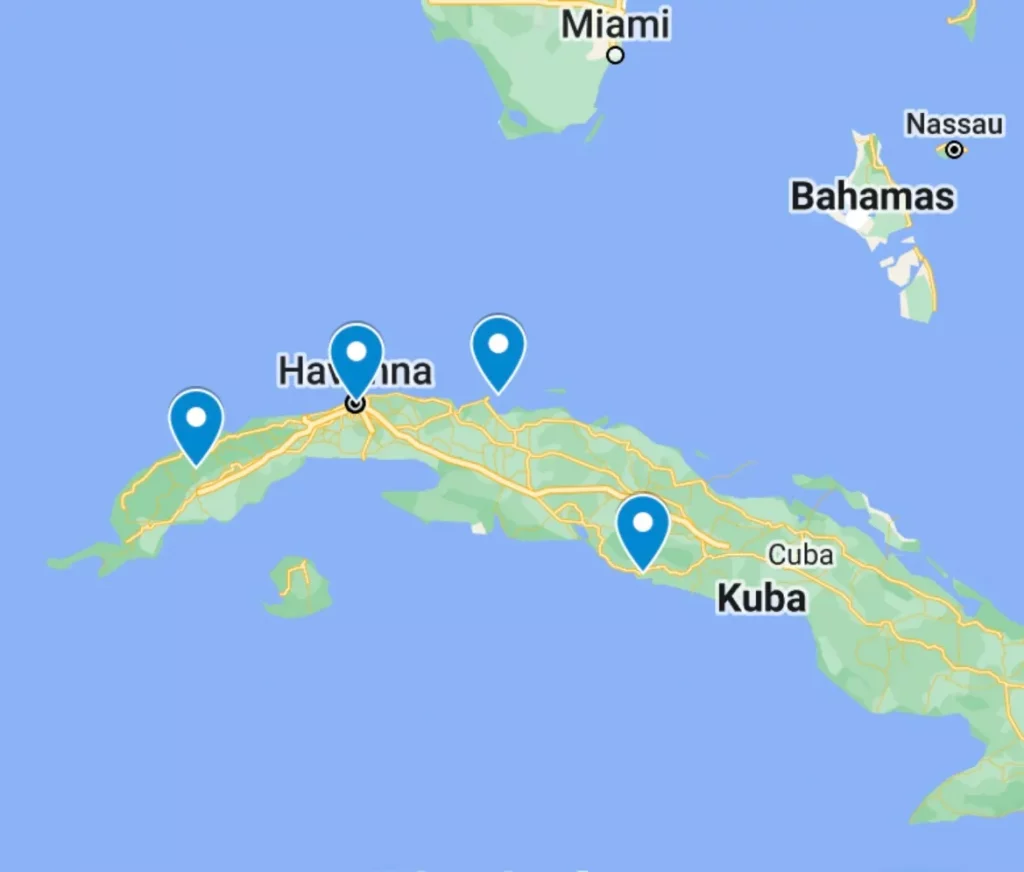
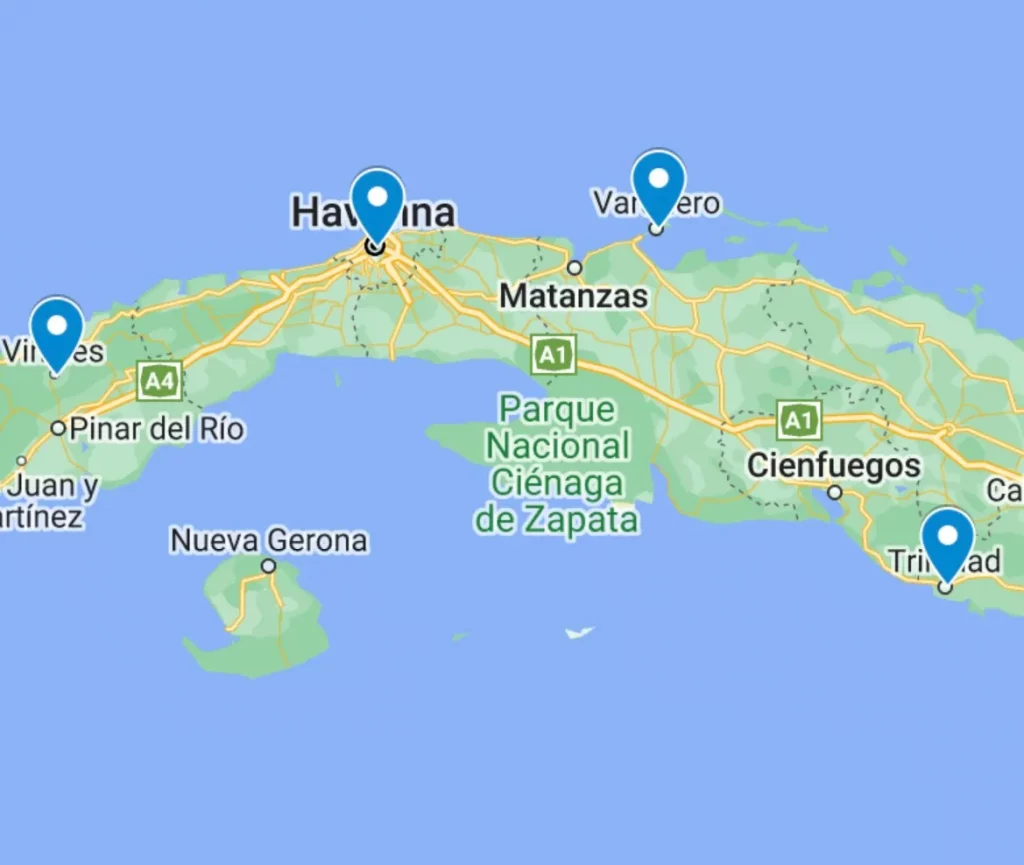
Havana
Havana, the vibrant capital of Cuba, is a must-visit for anyone looking to immerse themselves in the history, culture, and unique charm of the island. With its colonial buildings, colorful vintage cars, and lively streets filled with music, Havana is a city that captivates and enchants every traveler.
Our journey began with a flight from Frankfurt to Havana with Air Europa. The round-trip flights, including additional luggage, cost us around €800 per person. We spent two weeks in Havana attending a Spanish course as part of an educational leave program, a perfect way to experience both the language and culture up close. Afterward, we took the opportunity to explore more of the country.
Currency & Payments in Havana
The official currency in Cuba is the Cuban Peso (CUP), but many places also accept euros, US dollars, or other foreign currencies. In restaurants, accommodations, and taxis, Cuban Pesos are often not preferred. Supermarkets only accept credit card payments, and ATMs have low withdrawal limits.
Tip: We recommend bringing enough cash (around €500 per week) and exchanging only small amounts into Cuban Pesos.
What to Expect in This Section
- The best ways to get to Havana
- Our top recommendations for accommodations in the city
- The best restaurants, cafés, and markets for culinary delights
- Exciting tours and experiences – from classic car rides to tobacco plantations
- Cultural highlights and insider tips for unforgettable experiences
Let yourself be inspired and explore the best places and experiences in Havana with us!
Getting to Havana
Airline: Air Europa
Cost: Approx. €800 (round trip incl. extra baggage)
Duration: Approx. 13 hours (including a layover in Madrid)
Our journey to Cuba began with a flight from Frankfurt with Air Europa. After a layover in Madrid, we continued towards Havana. The second flight took around 10 hours, and as we approached the island, we were greeted with breathtaking views of the Caribbean coastline.
After landing in Havana, we took a taxi to the city center, which took about 30 to 40 minutes and cost around $30. Both euros and US dollars were accepted for payment.
Important to know:
- There was no ATM at the airport, so having some cash on hand for initial expenses was essential.
- There was no stand to purchase a SIM card, meaning we had to arrange mobile internet access later in the city.
From Havana, we embarked on our Cuban adventure, from the colonial streets of the capital to the country’s stunning beaches and lush landscapes.
Unsere Unterkünfte in Kuba
Casa Particular My Havana 254
Location: The accommodation is centrally located in Old Havana, making it easy to reach many attractions on foot.
Cost: €540 for 16 nights
Value for money: Good
✔ Pros
- Central location, ideal for exploring Old Havana
- Tastefully decorated accommodation
- Good value for money
✖ Cons
- Noise, especially at night, disrupted sleep
- The area felt somewhat unsafe, particularly after dark
- The host was less helpful compared to other accommodations
Conclusion: For a short stay of 2–3 nights, this accommodation is a good choice if you want to be in the heart of the action. However, if you prioritize safety and a quieter environment, it may be better to choose a place in a more tourist-friendly street or in Vedado.
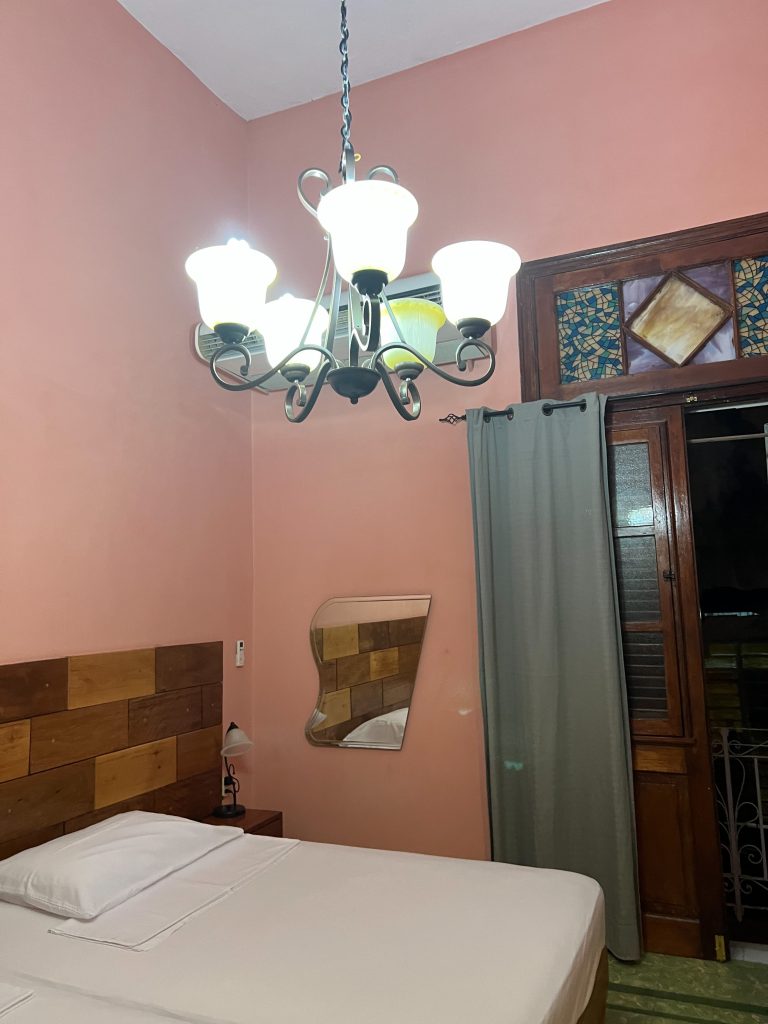
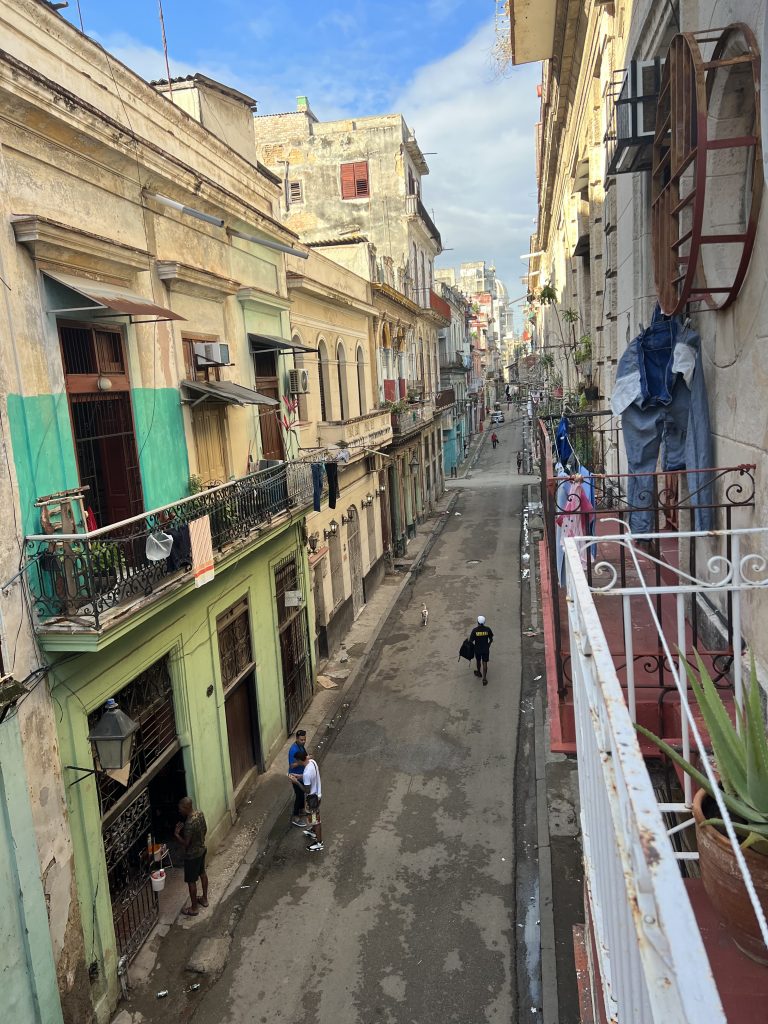
Marqués de Liz
Location: The accommodation is situated in a beautiful and safe area, making it ideal for a relaxing stay.
Cost: Reasonable value for money, though the rooms are on the smaller side.
✔ Pros
Stylish and cozy interior
Friendly hosts and pleasant atmosphere
Delicious breakfast
Safe and attractive surroundings
✖ Cons
Rooms could be larger
Breakfast could have been more extensive
At check-out, only Euros or Dollars were initially accepted, despite prior confirmation that payment in Cuban currency was possible.
Conclusion: Marqués de Liz impresses with its charming decor, welcoming atmosphere, and great location. It’s a good choice for a comfortable stay, but guests should confirm the payment options in advance.
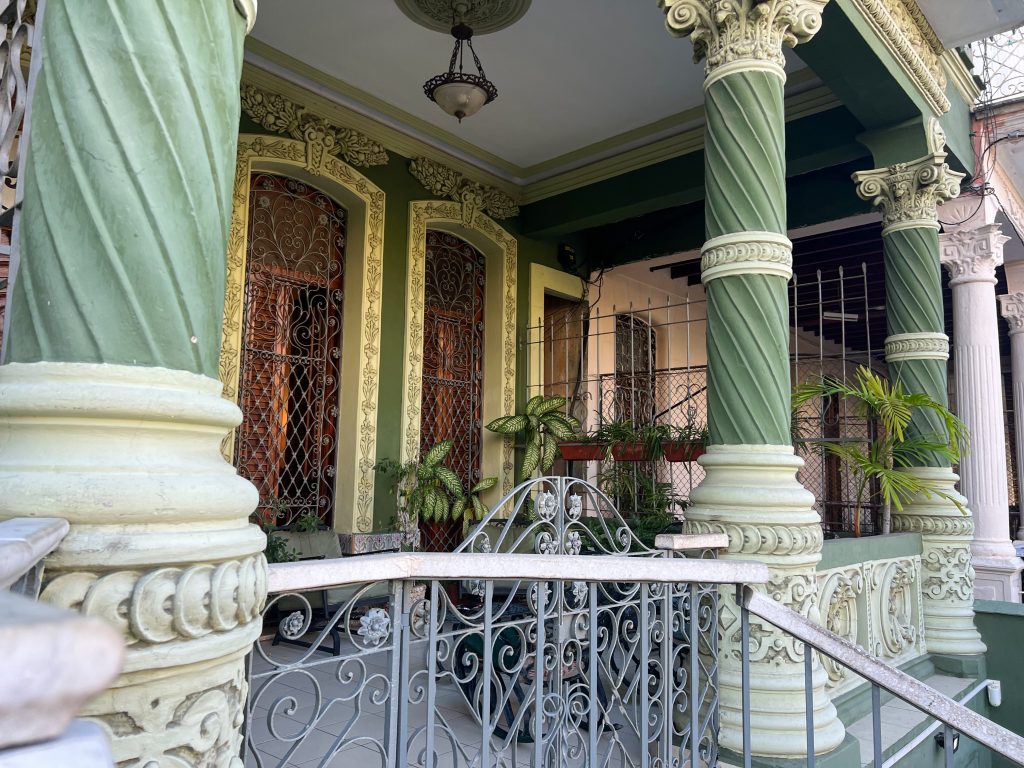
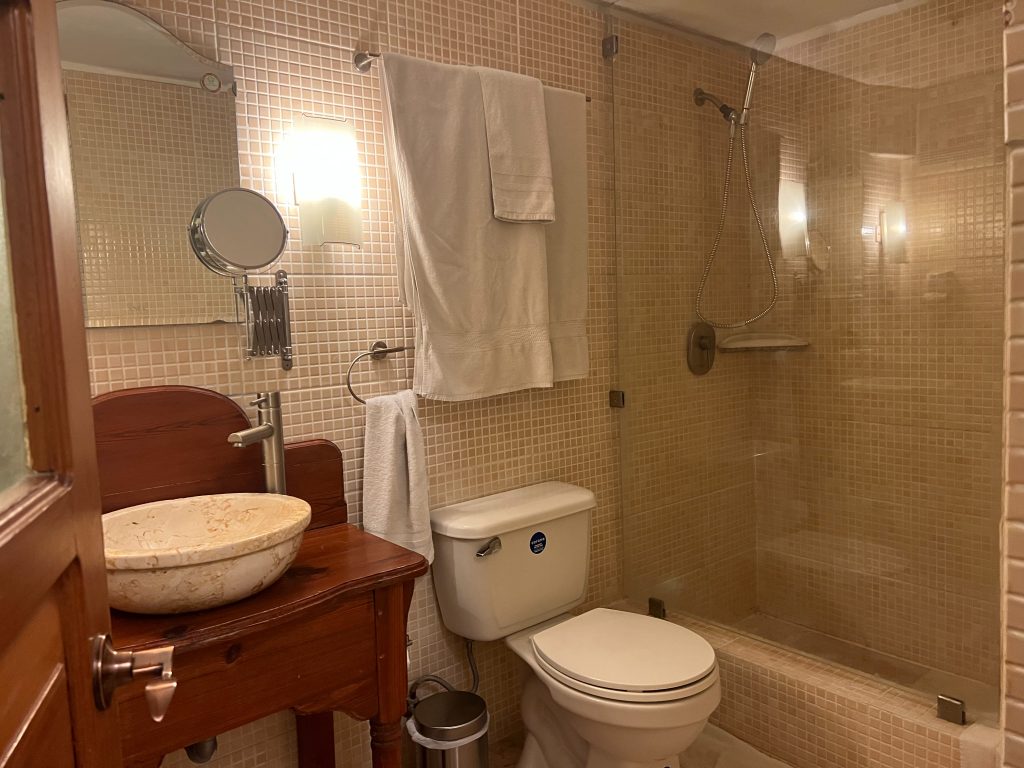
My Educational Leave in Havana
Costs: 1040€ for a two-week intensive course.
Provider: Sprachcafe
Value for money: Poor
Positive: The teachers and staff on-site were competent and very friendly. The area where the school was located was not only beautiful but also safe, which gave us a pleasant feeling throughout our stay.
Negative: The language school was in a somewhat remote area, far from the city center. During my beginner course, I had difficulty following the lessons in Spanish and would have appreciated more English-Spanish translations.
The school facilities were in poor condition; some blackboards were no longer in good shape, and one of the bathrooms lacked running water. There was also no drinking water available, and some pages were missing from our teaching materials.
The excursions offered were only priced in Euro and Dollars. We complained and insisted on paying with Pesos. As a result, an exception was made for us, and we were allowed to pay in CUP. The price for our beach excursion changed several times within just three days: from 860 Pesos to 980 Pesos to 1280 Pesos per person, while it would have been 5 Euros cheaper in Euro/Dollars. Overall, the condition of the facilities was poor.
The information we received from Sprachcafe in preparation for our educational trip was outdated and incorrect.
Conclusion: After finishing the course, we spoke with other students from our group. We all agreed that we cannot recommend this school, especially not at this price. We found it very disappointing that it seemed the money we paid was not really being invested into the school.
Educational Leave in General.
Who is entitled to educational leave?
All employees are entitled to educational leave.
How many days are you entitled to each year?
The number of days an employee is entitled to for educational leave varies in Germany depending on the federal state.
In general, employees in most federal states are entitled to five days of educational leave per calendar year. In some federal states, the entitlement can be increased to up to ten days per year.
The legal basis for the entitlement to educational leave is regulated in the respective educational leave laws of the federal states. These laws also outline the conditions for entitlement to educational leave, the recognized educational events, and the procedures for recognition.
It is recommended to check the specific regulations for educational leave in the respective federal state to know exactly how many days an employee is entitled to for educational leave per year.
Who pays for the educational leave?
In general, the costs of educational leave are borne by the employee themselves. However, in some cases, employers also cover the costs or at least contribute to them. It is advisable to discuss the possibility of cost coverage with the employer.
How do I apply for educational leave?
Educational leave must be notified/applied for in writing at least six weeks before the start of the educational leave.
You can download the application form from the website of your federal state and submit it to your employer.
Where can I book educational leave and what can I do with it?
We found our course through “Bildungsurlaub.de”, where various courses and training programs are shown based on your filters.
How am I insured during this time?
Foreign Health Insurance
The educational leave law in Hesse is regulated by the Hesse Continuing Education Act (HWBG). The HWBG provides for a right to educational leave of five days per calendar year.
To claim the right to educational leave in Hesse, employees must be employed in a work relationship and have been employed with their current employer for at least six months. The educational event must meet specific requirements and be recognized by the responsible authority.
According to the HWBG, educational events must aim to improve professional qualifications, promote political education, or support personal development. The recognition of educational events is carried out by the Hesse Ministry of Social Affairs and Integration.
The HWBG also stipulates that employees continue to receive their wages during educational leave.
The best beaches in Havana
During our time in Havana, we explored several beaches, from busy, well-known stretches of sand to quieter, less crowded spots. Each beach had its own charm, but some particularly stood out to us.
In this section, we present the most beautiful beaches that left a lasting impression with their unique atmosphere, clear waters, and relaxing vibe.
Playas del este
Location: Playas del Este is located east of Havana and stretches for several kilometers along the coast. The area consists of several beaches with fine white sand and clear turquoise water.
Highlights: The beaches are popular with both locals and travelers, offering a relaxed atmosphere away from the hustle and bustle of the city. Especially on weekends, it can get livelier as many Havanans come to the beach for a day trip.
The sea is usually calm, making it perfect for swimming and relaxing. Along the beaches, there are small bars and restaurants serving Cuban specialties and refreshing cocktails.
Conclusion: Playas del Este is a great option for those looking to spend a day at the sea during their stay in Havana. The combination of Caribbean charm, expansive sandy beaches, and simple but charming beach bars makes this place particularly appealing.
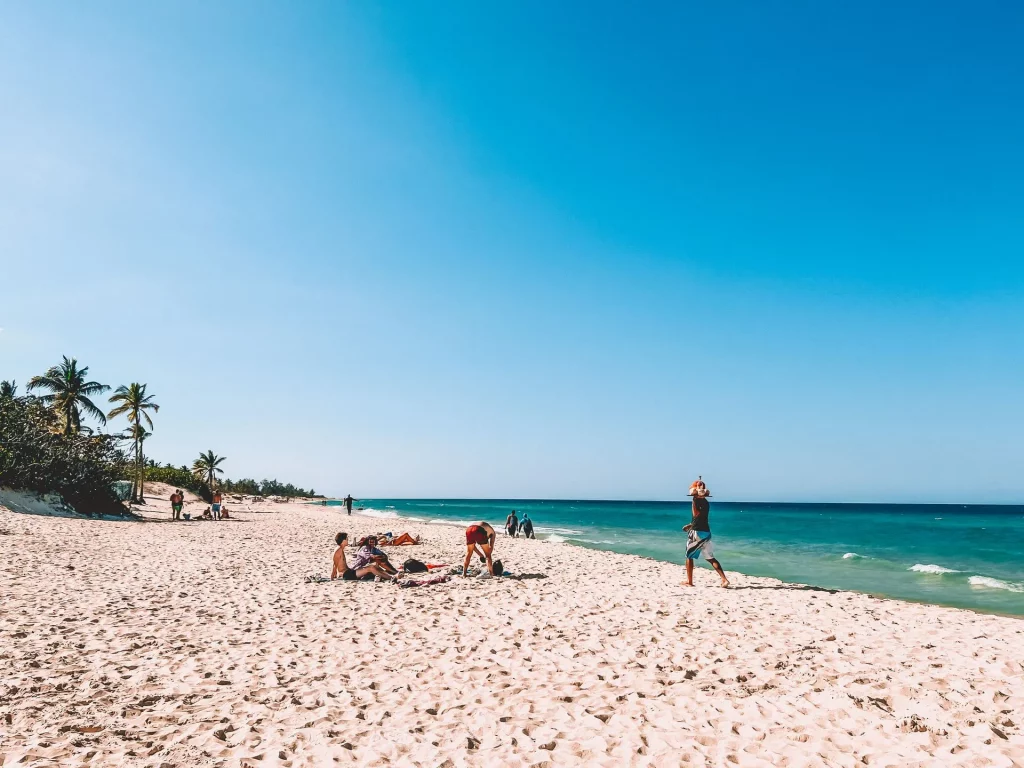
Food and Going Out in Havana
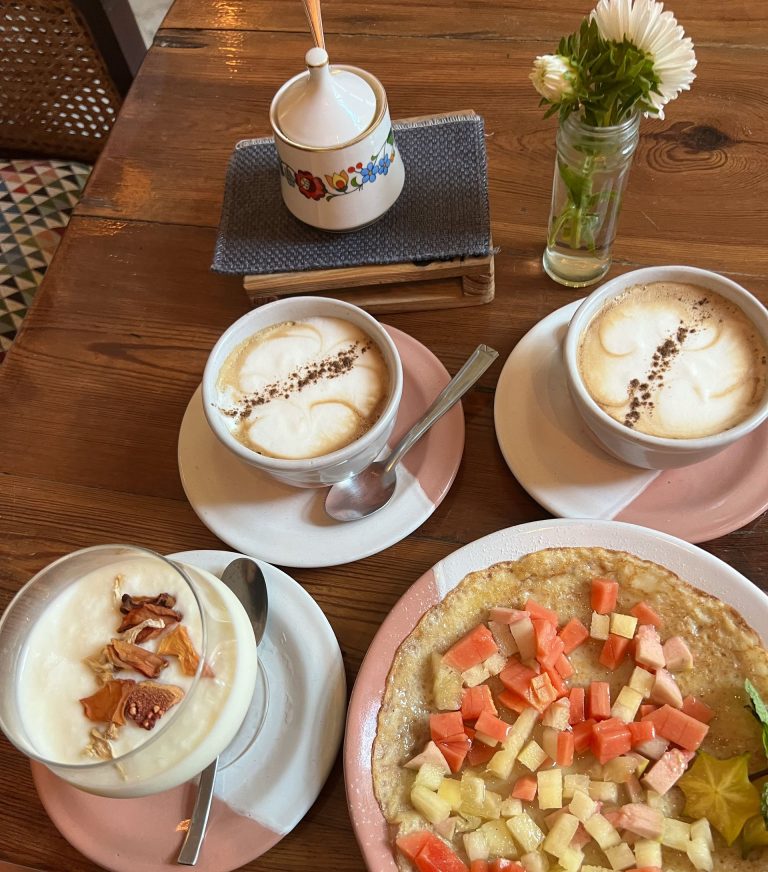
Color Cafe
Location:
A charming café in a central location, perfect for a relaxing break.
Our Impression:
The Color Café offers a cozy atmosphere with a stylish ambiance. Perfect for breakfast, a coffee, or a refreshing drink. The selection of drinks and food is diverse, and the friendly service ensures a pleasant stay.
Conclusion:
A great café for anyone who enjoys a relaxed environment with a good selection of food and drinks.
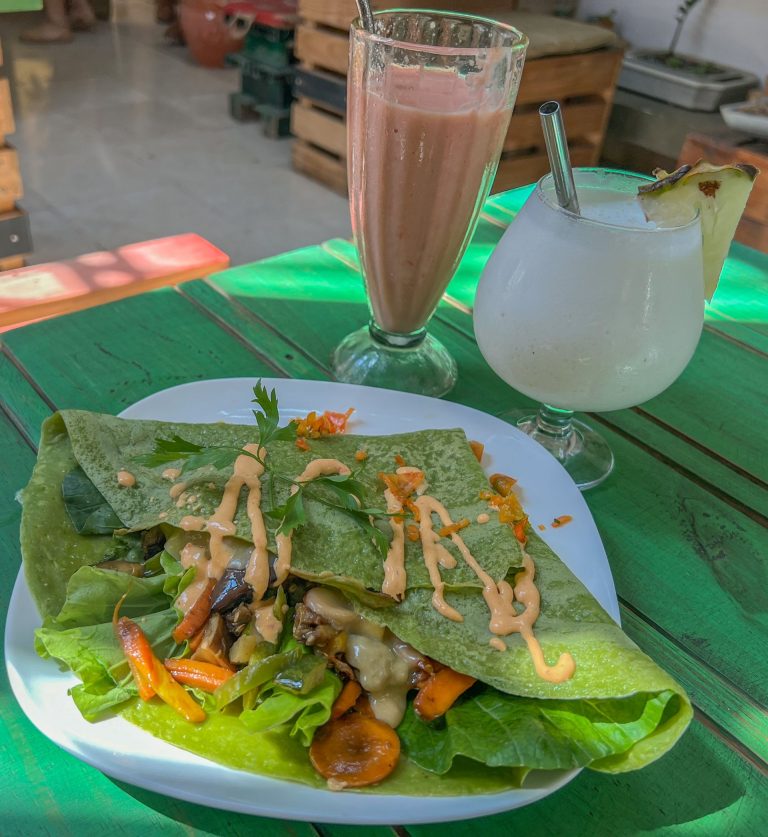
Creperie Oasis Nelva
Location:
A cozy crêperie with a relaxed atmosphere, perfect for a little break.
Our Impression:
Creperie Oasis Nelva offers a wide selection of sweet and savory crêpes, as well as delicious tapas and refreshing cocktails. The relaxed environment and friendly service make the visit especially pleasant. Whether for a quick snack or a laid-back dinner – there’s always something tasty to enjoy.
Conclusion:
A great spot for crêpe lovers and anyone looking to enjoy tapas and cocktails in a cozy atmosphere.
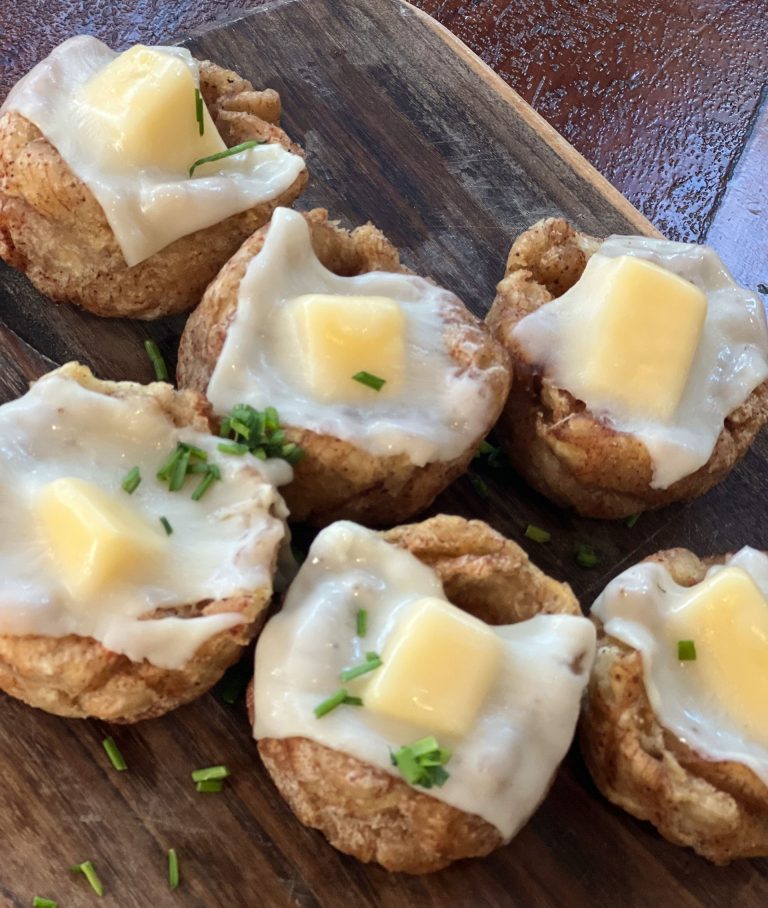
New Georges
Location:
A relaxed restaurant with a versatile menu, suitable for any meal of the day.
Our Impression:
New Georges offers a wide range of Cuban dishes, fresh fish specialties, as well as pizza and pasta. The laid-back atmosphere and friendly service make it a pleasant place for a relaxed meal.
Conclusion:
A great choice for those who want to enjoy Cuban cuisine or opt for international dishes like pizza and pasta.
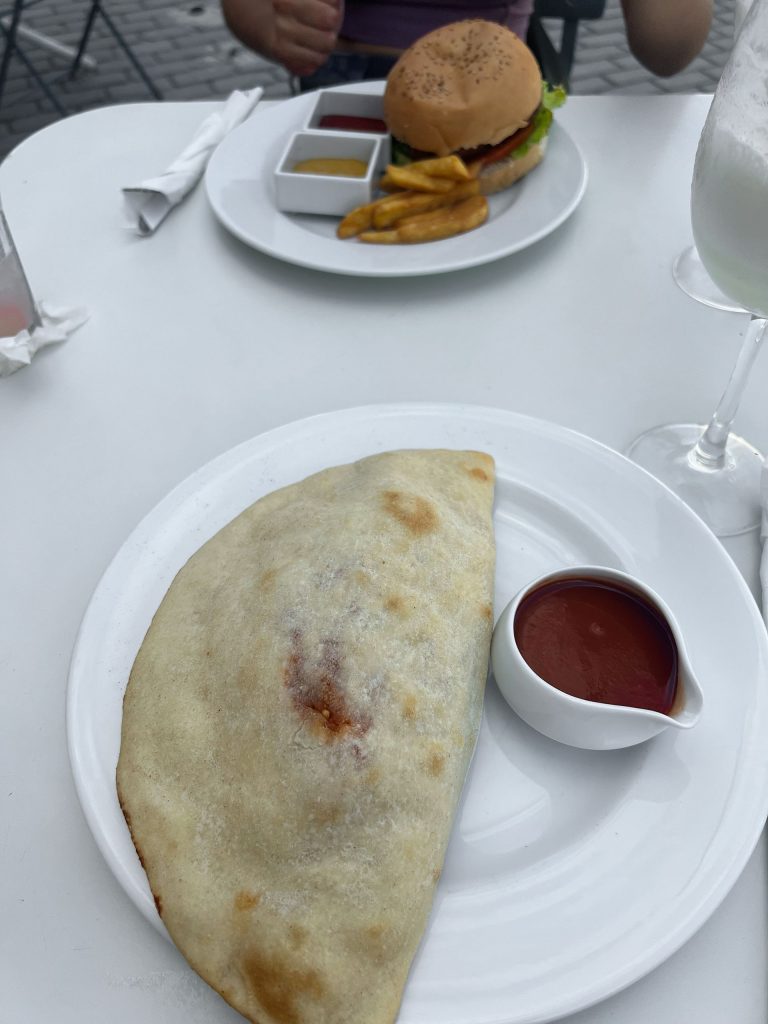
Cafe Bohemia
Location:
A charming café in the heart of the city, perfect for any time of day.
Our Impression:
Cafe Bohemia impresses with a relaxed atmosphere and a diverse menu. Whether for breakfast, lunch, or dinner, there is a great selection of fresh dishes and delicious drinks. The cozy outdoor area is especially lovely, inviting guests to linger.
Conclusion:
A stylish café with great food and a pleasant ambiance, perfect for a break at any time of day.
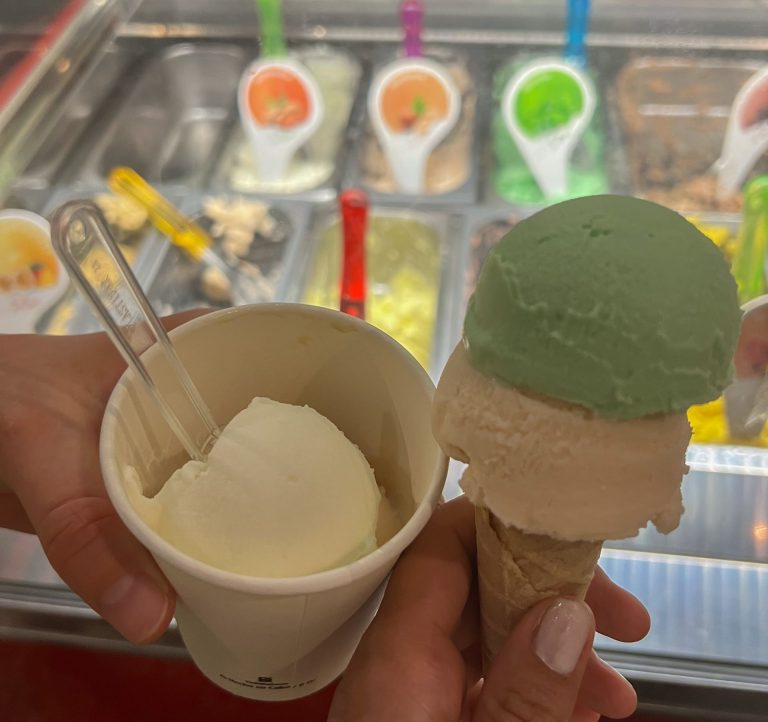
Heladeria Mango & Cafe
Location:
An inviting café and ice cream shop, perfect for a sweet refreshment or a relaxing coffee break.
Our Impression:
Heladería Mango & Café offers a wide selection of homemade ice cream, refreshing drinks, and coffee specialties. The cozy atmosphere invites you to linger, whether for a quick stop or a relaxing afternoon.
Conclusion:
A lovely place for anyone craving delicious ice cream or a little break with coffee and snacks.
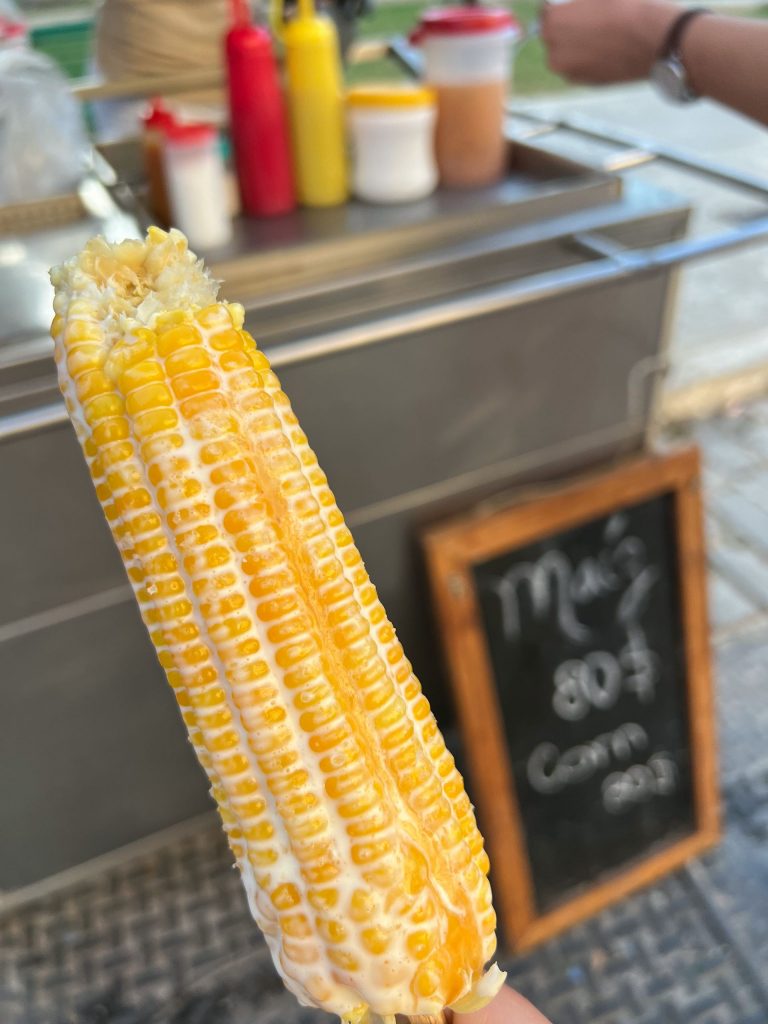
In Havana, you can find street food stalls at various locations, including the popular corn stands. These sell grilled corn on the cob (“Maíz Asado”), often seasoned with salt, butter, or sometimes even cheese and spices.
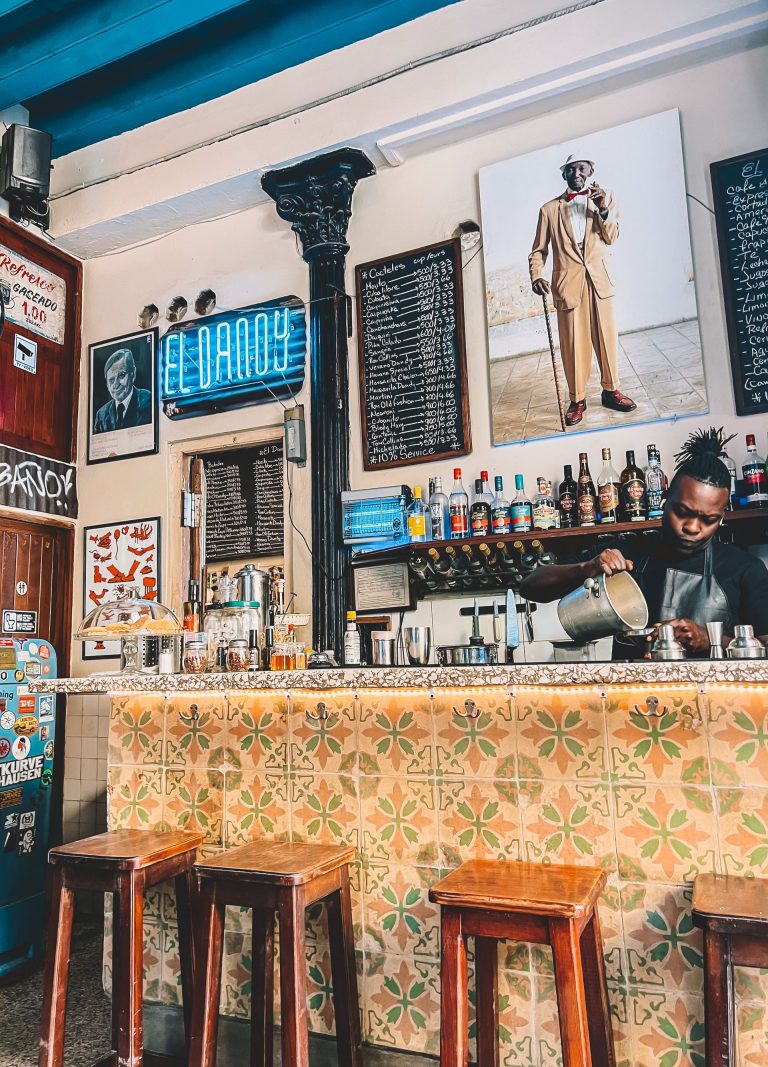
El Dandy
Location:
A stylish bar with a relaxed atmosphere, perfect for a drink in good company or a brief break from the hustle and bustle of the city.
Our Impression:
El Dandy combines charming vintage design with a creative selection of cocktails and drinks. In addition to the excellent beverages, there are also small snacks and tapas that complete the experience. The laid-back atmosphere and great music selection make the bar a popular spot for both locals and travelers.
Conclusion:
A great spot for anyone looking to enjoy a good drink in an authentic setting.
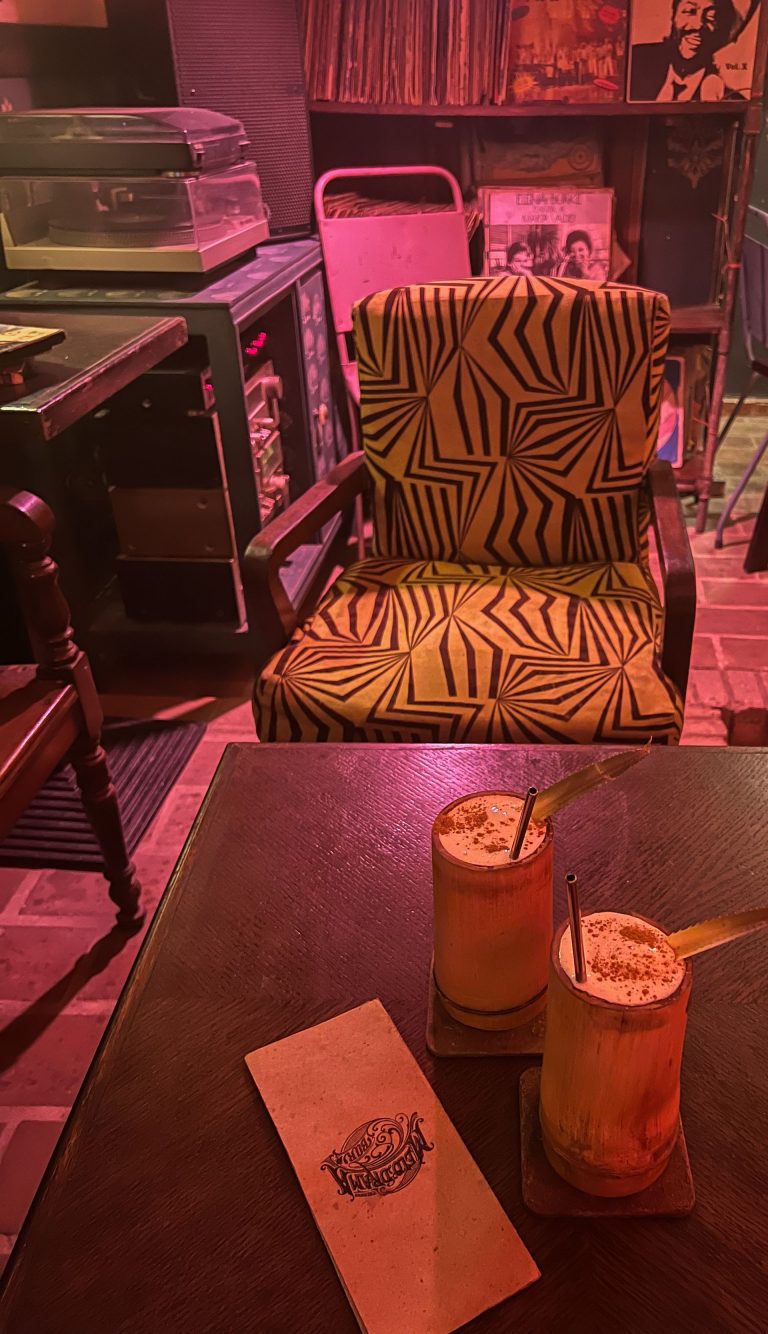
Bar Melodrama
Location:
A stylish bar with a unique flair, ideal for a relaxed evening with good drinks and a pleasant atmosphere.
Our Impression:
Bar Melodrama impresses with its tasteful design and a carefully selected drink menu. Whether classic cocktails or creative signature creations – connoisseurs will be delighted here. The cozy lighting and relaxing music create an inviting atmosphere that encourages you to linger.
Conclusion:
A great place for those who want to enjoy high-quality drinks in a stylish environment. Perfect for a relaxed evening in good company.

La Bodeguita del Medio
Opening Hours: Mon–Sun 10:30 AM–11:30 PM
Location:
One of the most famous bars in Havana, renowned for its authentic atmosphere and rich history.
Our Impression:
La Bodeguita del Medio is more than just a bar – it’s a piece of Cuban history. Founded in 1942, it captivates visitors with its vibrant atmosphere, traditional cocktails, and the famous signatures on the walls. It is said that Ernest Hemingway enjoyed his Mojito here, further enhancing the bar’s legendary status.
Conclusion:
A must-visit for anyone wanting to experience the real Havana. Perfect for a classic Mojito, live music, and a touch of nostalgia in a unique setting.
Activities in Havana
Havana is not only the vibrant capital of Cuba but also a true paradise for culture and history enthusiasts. From impressive colonial architecture to nostalgic vintage cars, to lively music and dance, there is so much to experience here.
In this section, we will introduce you to the best activities that will make your stay in Havana unforgettable, whether you want to stroll through the historic streets, enjoy the Cuban way of life, or learn more about the fascinating history of the city.
Fábrica de Arte Cubano
Location:
The Fábrica de Arte Cubano (FAC) is located in the Vedado district of Havana and is a unique place that combines art, music, and culture. Set in a former factory hall, it has become a creative space that serves as an art gallery, live music venue, and dance floor all in one.
Opening Hours:
Thursday – Sunday: 10:00 PM – 2:00 AM
Experience & Offer:
FAC is one of the most exciting venues in Havana, offering a mix of art exhibitions, live concerts, and dance floors with various music genres. Several rooms feature rotating installations, performances, and DJ sets. A food area in the basement provides snacks and drinks to accompany the evening.
Our Impression:
An absolutely unique experience, FAC combines modern art with Cuban joie de vivre, creating an unparalleled atmosphere. The variety of music styles and art forms that meet here is particularly impressive.
Conclusion:
Perfect for anyone looking to explore Havana’s creative scene and experience art, music, and nightlife in an extraordinary setting. A true highlight of the city!
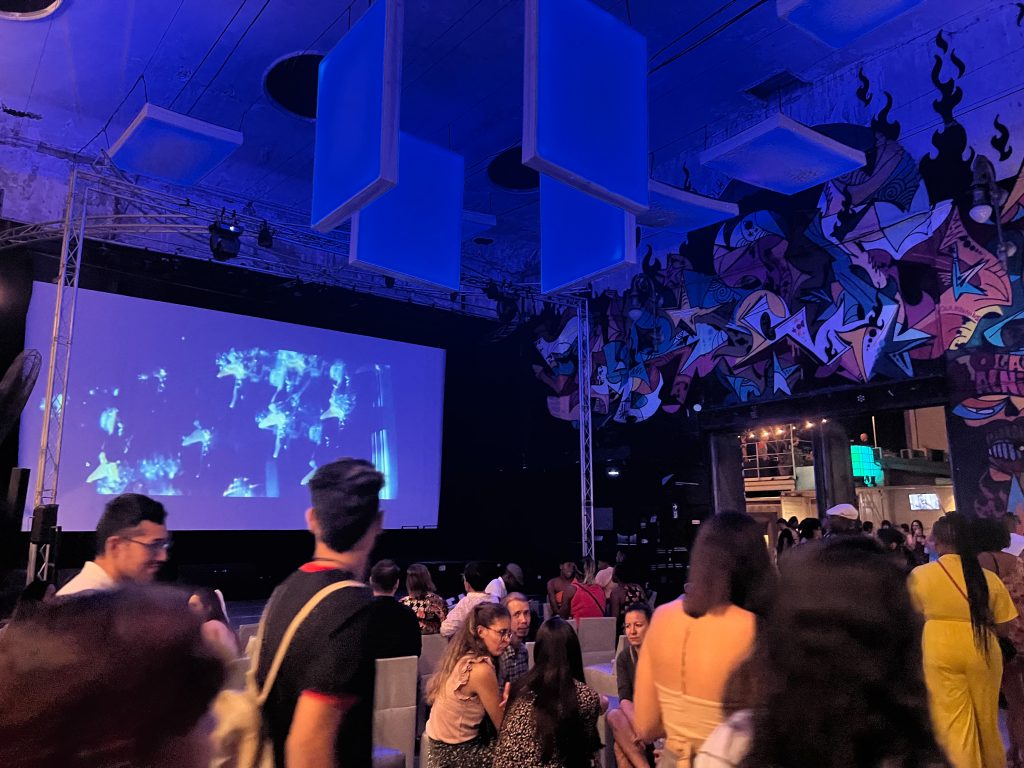
Jazz Club La Zorra y el Cuervo
Location:
La Zorra y el Cuervo is located in the heart of Havana and is considered one of the best jazz clubs in the city. The entrance, a striking red telephone booth, leads down into a cozy, atmospheric basement club with excellent acoustics.
Opening Hours:
Monday – Sunday: 10:00 PM – 2:00 AM
Entrance Fee:
375 Pesos per person, including one drink
Experience & Offer:
This legendary jazz club captivates with top-quality live performances in an intimate atmosphere. World stars like Chucho Valdés, Arturo Sandoval, and Wynton Marsalis have graced its stage. In addition to established artists, there are regular performances from emerging talents, making the club a hotspot for music lovers.
Our Impression:
A real highlight for jazz fans! The combination of great music, unique atmosphere, and talented artists makes this club an unforgettable experience.
Conclusion:
Anyone wanting to experience Havana’s vibrant jazz scene should not miss La Zorra y el Cuervo. A must for those who want to enjoy live music in a special location.
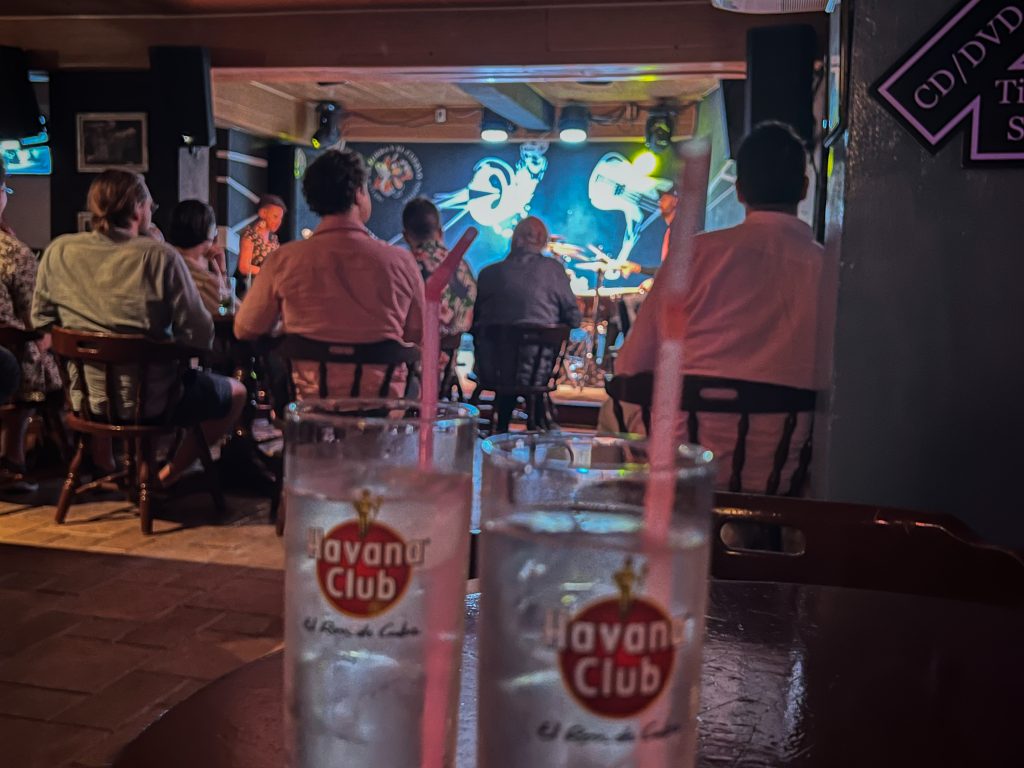
Catedral de la Habana
Location:
The impressive Catedral de la Habana is located in the heart of the Old Town and is one of the most significant landmarks in the city.
Our Impression:
This magnificent Baroque church impresses with its unique coral stone façade and historical charm. As one of Havana’s iconic landmarks, it is not only a place of faith but also an architectural masterpiece with deep-rooted history. Since 1982, it has been a UNESCO World Heritage site and attracts visitors from around the world.
El Capitolio
Location:
The imposing Capitol Building is located in the center of Havana and is one of the most famous landmarks in the city.
Our Impression:
Built in the 1920s in a neoclassical style, the Capitol impresses with its monumental dome, which resembles that of the Capitol in Washington, D.C. Notable is the large statue of El Cacique Hatuey, an indigenous leader who fought against the Spanish conquerors. Today, the building houses the National Science Museum, the Cuban National Archives, and the Library of the National Assembly of Cuba. Its impressive architecture and historical significance make it a popular attraction for visitors.
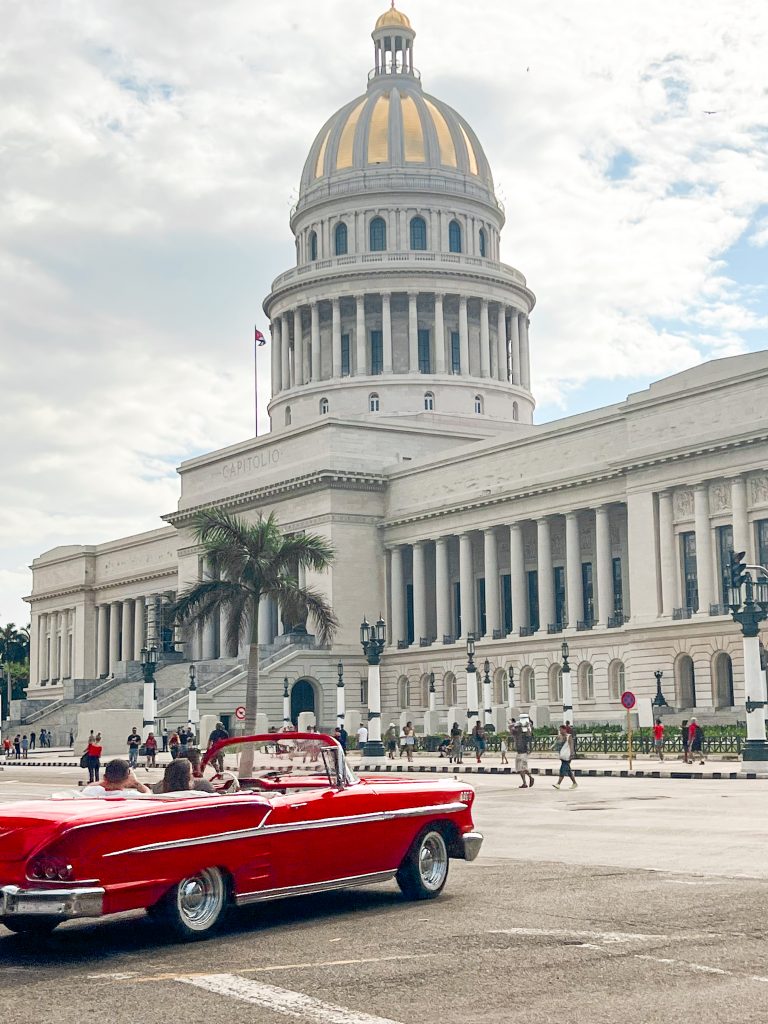
Calle Obispo
Location:
Calle Obispo stretches through the old town of Havana and is one of the liveliest streets in the city.
Our Impression:
With its colorful colonial buildings, historical monuments, and a wide variety of shops, restaurants, and bars, Calle Obispo reflects the authentic atmosphere of Havana. The street is full of life – street musicians, artists, and small boutiques make a walk here a special experience.
Special Recommendations:
A visit to the historic pharmacies Taqueeche and Johnson is worth it, they offer fascinating insights into the history of Cuban pharmacy.
Museo de la Revolución
Location:
The museum is located in the former presidential palace of Fulgencio Batista in the center of Havana.
Opening Hours:
Monday – Sunday: 9:30 AM – 4:00 PM
Our Impression:
The Museo de la Revolución offers an exciting journey through Cuban history. Numerous exhibits such as weapons, photos, documents, and vehicles tell the story of the revolutionary struggle and Cuba’s political development after 1959. Particularly impressive is the “Granma” Pavilion, where the Granma yacht, with which Fidel Castro and his followers returned to Cuba in 1956, is displayed.
Note:
The building itself is a historical highlight, the magnificent architecture of the former presidential palace contrasts interestingly with the revolutionary content of the exhibition.
Markets in Havana
Almacenes San José Artisans Market
Location:
The market is located in a former warehouse at the Havana harbor and is the largest craft market in the city.
Opening hours:
Tuesday – Sunday: 10:00 – 18:00
Our impression:
Here, you’ll find a wide selection of handmade souvenirs, from ceramics and paintings to linen shirts and leather goods. The numerous stalls offer authentic Cuban crafts, and the atmosphere is vibrant and colorful. Particularly impressive are the hand-painted works of local artists.
Note:
Haggling is common, if you enjoy negotiating, you can score some good deals here.
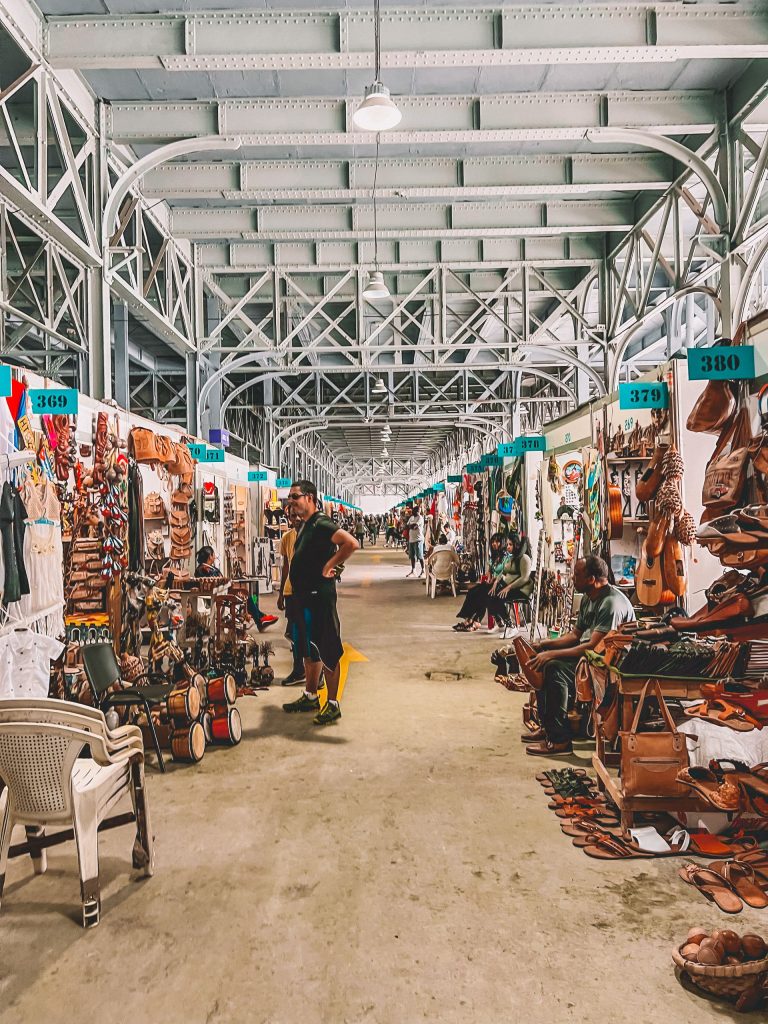
Flea Market Craft Market
Location:
This covered market is centrally located in Havana’s Old Town on the bustling Calle Obispo and is a popular spot for crafts and souvenirs.
Opening hours:
Monday – Sunday: 10:00 – 18:00
Our impression:
The market offers a wide variety of handcrafted jewelry, souvenirs, art, and crafts. The small stalls are brightly designed and invite you to browse. Particularly beautiful are the intricate jewelry pieces and creative woodwork.
Note:
A great place to find unique souvenirs from Cuba. Bargaining is possible, but the prices are ofte
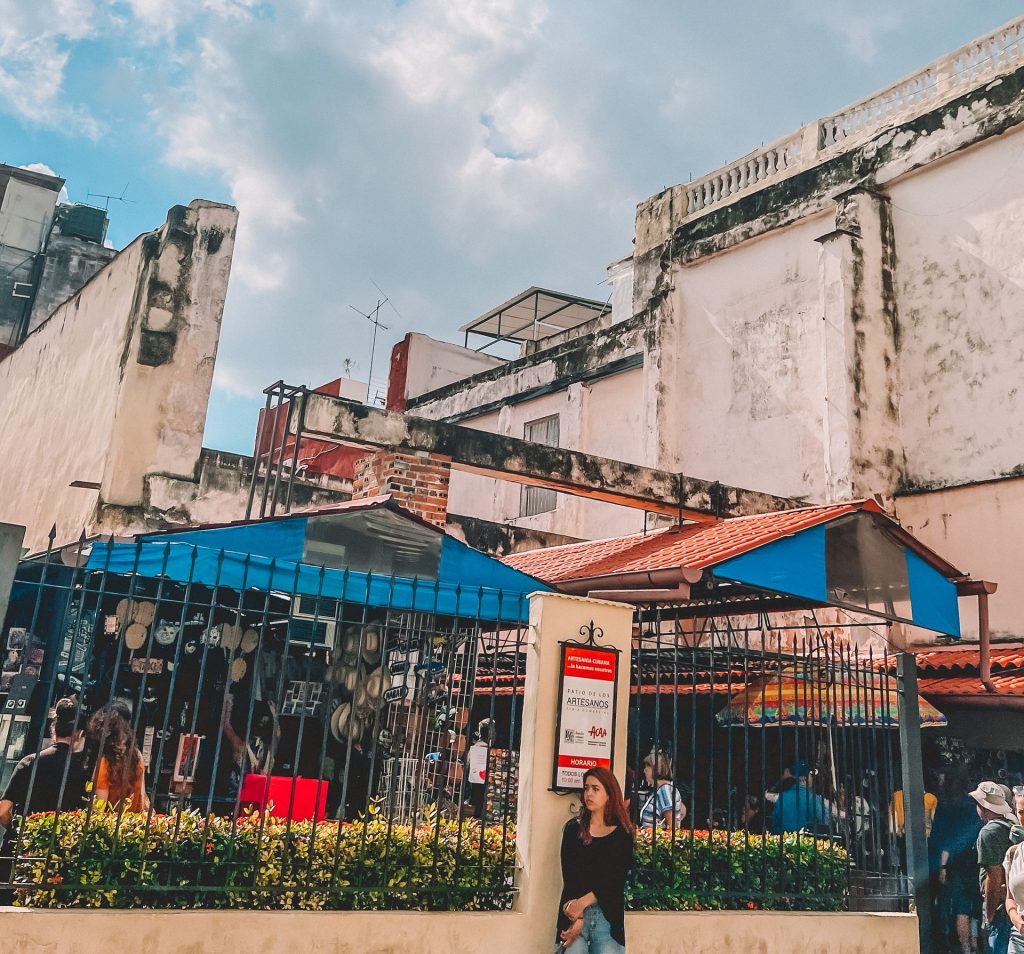
Mercado Agropecuario
Location:
The market is located on Calle B and offers an authentic shopping experience for fresh, local products.
Offerings:
There is a wide variety of fruits, vegetables, and flowers. The stalls are brightly filled with seasonal produce, often directly from local farmers.
Our impression:
A lively market with a great selection of fresh foods. If you want to experience Cuban daily life and try regional products, this is the perfect place.
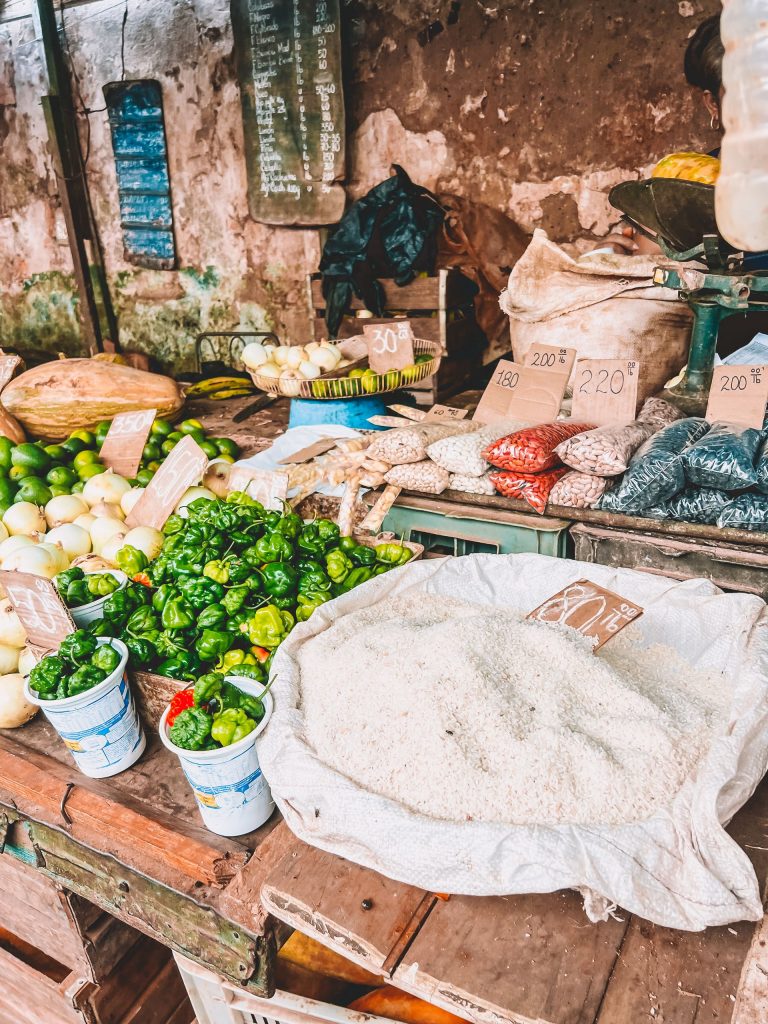
Antique Market
Opening hours: 10:00 AM – 5:00 PM
Address: At the Antigua Casa de Justicia Santa Ana
Our impression:
A small but fascinating market offering a selection of unique antiques. From old books and coins to furniture pieces, there are many historical treasures to discover. Perfect for collectors or anyone looking for a special souvenir. The atmosphere is relaxed, and often, you can hear interesting stories behind the items found.
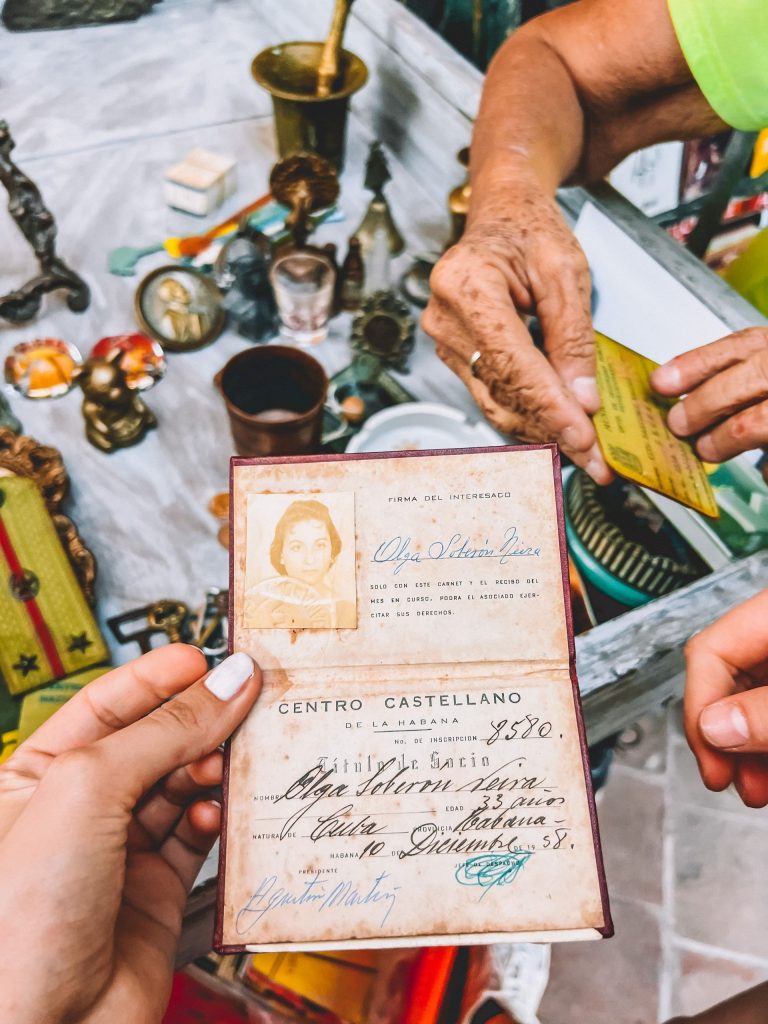
Antique Market
Address: 23.138199, -82.370430
Our impression:
An interesting shop for lovers of vintage pieces and historical items. Here, you can find a wide variety of antiques, from furniture and jewelry to old artworks. An ideal place to find a unique souvenir from Havana.
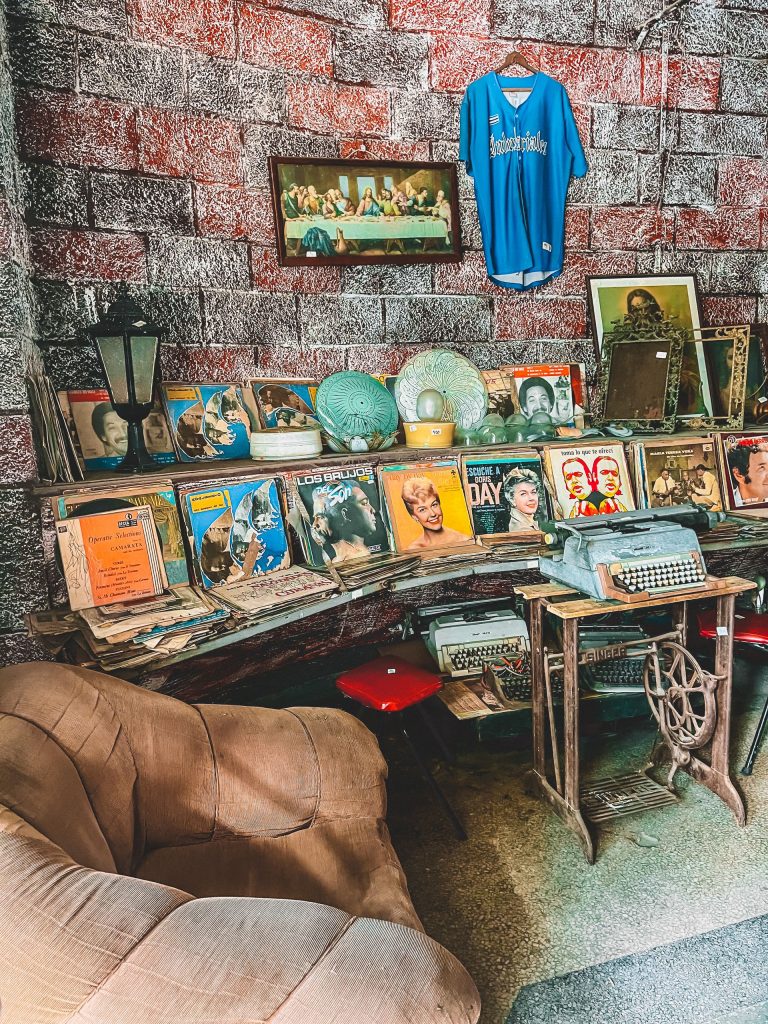
More pictures of Havana
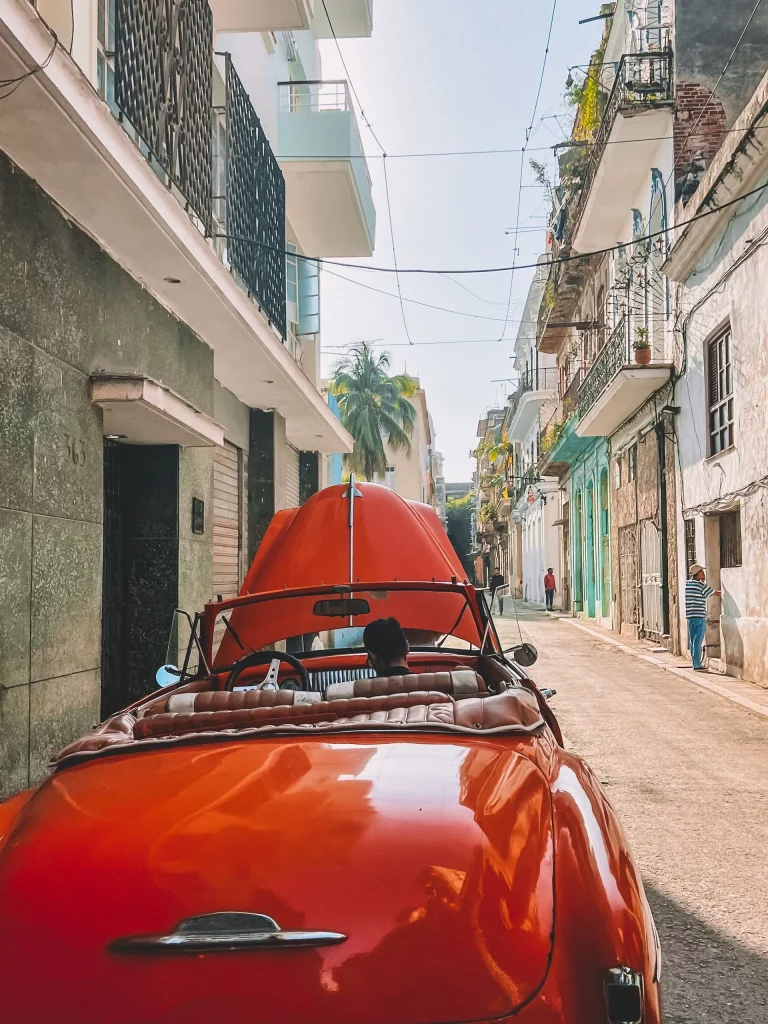
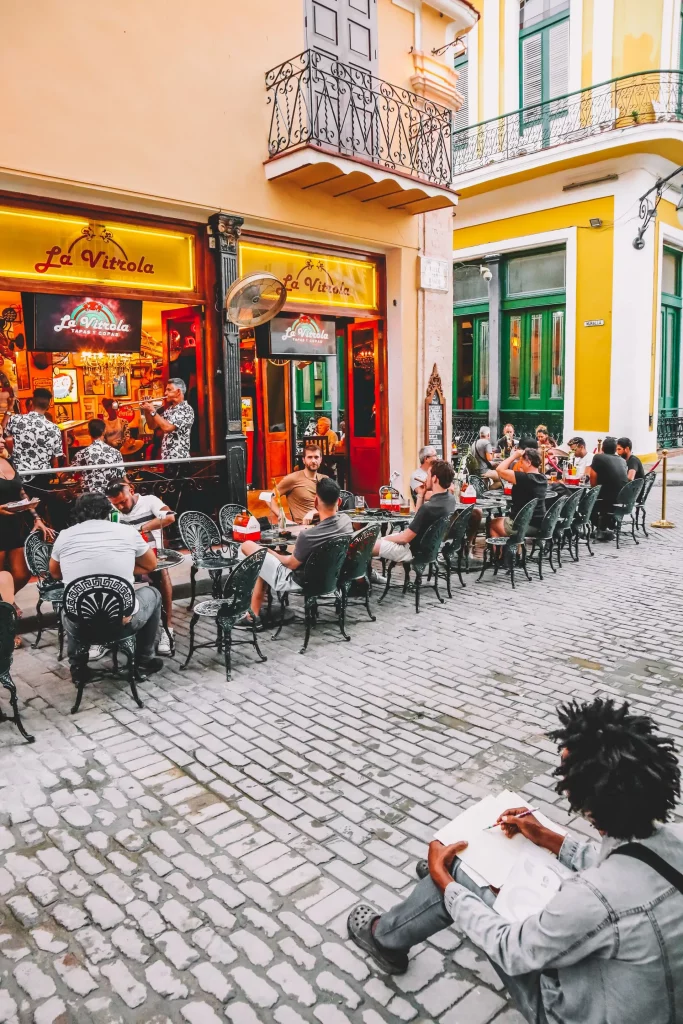
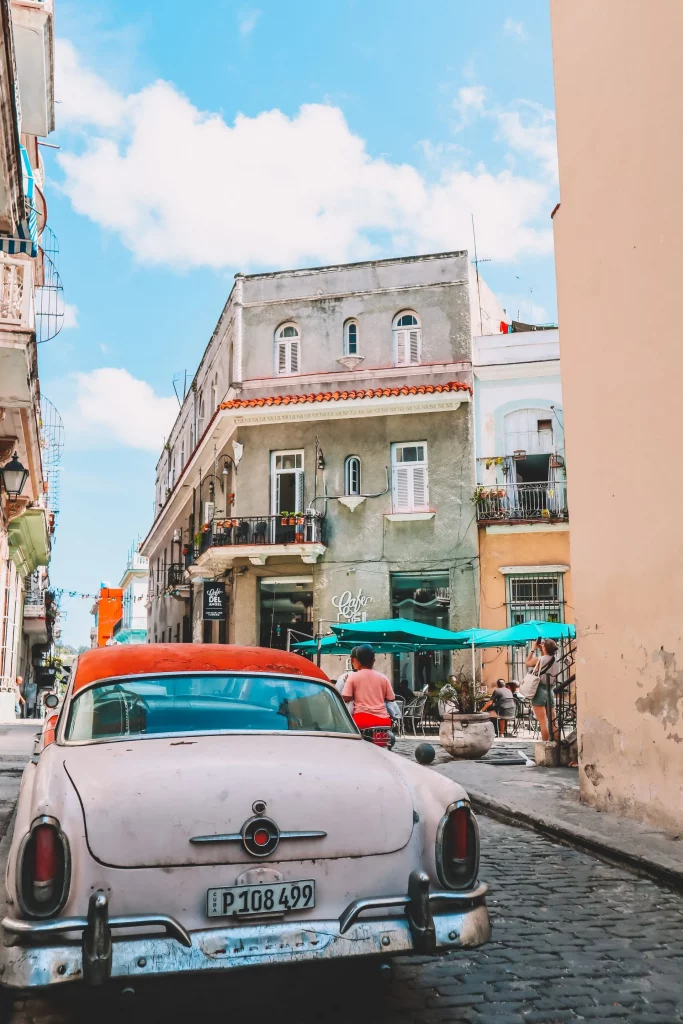
Varadero
Varadero is Cuba’s most popular beach destination, known for its endless white sand beaches, turquoise waters, and luxurious resorts. The narrow Hicacos Peninsula stretches over 20 km along the Atlantic coast and offers not only all-inclusive hotels but also exciting activities for travelers seeking more than just relaxation.
We traveled to Varadero by private taxi (around a 2.5-hour drive). Alternatively, there are bus connections that provide a more budget-friendly option. Interesting to note: On the way to Varadero, a checkpoint must be passed. Locals often told us that the peninsula is not accessible to them, except for those who live there or work in the hotels.
But Varadero has more to offer than just beaches:
What to expect in this section:
- The best ways to get to Varadero – by bus, taxi, or rental car
- Our accommodation recommendations – from all-inclusive resorts to Casas Particulares
- Culinary highlights – the best restaurants, bars, and local markets
- Excursions & experiences – from catamaran tours and snorkeling to the Saturno caves
- Cultural insights & insider tips, discovering Varadero beyond the hotel resorts
Let yourself be inspired and experience Varadero at its best.
Getting to Varadero
Our journey to Varadero began in Havana. We booked a round-trip transfer through the provider Gaviota at Hotel Manzana. The bus picked us up from Hotel Melia Habana in Miramar and took us to Varadero in about 2.5 hours.
Transportation options to Varadero:
- Shared taxi or bus:
The most affordable option is shared taxis or tour buses, which depart in the morning between 8:00 and 11:30 AM, depending on the provider. The price is around $25 per person, and the journey takes approximately 2.5 hours. - Private taxi:
For those who need more flexibility or prefer a direct ride, a private taxi can be booked for around $90. - VIAZUL bus:
The cheapest option for flexible travelers is the VIAZUL bus. Tickets can be purchased online or at the bus station, but they are often sold out a day before departure.
Our experience with the return trip:
Unfortunately, the wrong departure time was noted on our return ticket, causing us to miss the bus to Havana. As an emergency solution, we had to book a taxi through our Casa, which cost us $90.
Getting a refund for the bus ticket turned out to be particularly complicated. Since the refund could only be processed via the provider’s card machine, we had to visit two different locations multiple times. On the first two days, the machine was loaned to another location, so we kept being sent away. Only on the third attempt at a different location were we finally able to get our money back. Card machines are rare in Cuba, making refunds and card payments often difficult.
Our Accommodation in Varadero
Daisy’s Hostal
Location
The accommodation is situated in a quiet yet central area, making many attractions easily accessible on foot.
Cost
€40 per night
Price-performance ratio: Good
✔ Pros
• Central yet peaceful location
• Very friendly and helpful hosts
• Good value for money
• Affordable and delicious breakfast
✖ Cons
• No negative points
Conclusion
Daisy’s Hostal is a highly recommended place to stay for those looking for a well-located, cozy, and affordable accommodation with a welcoming atmosphere.
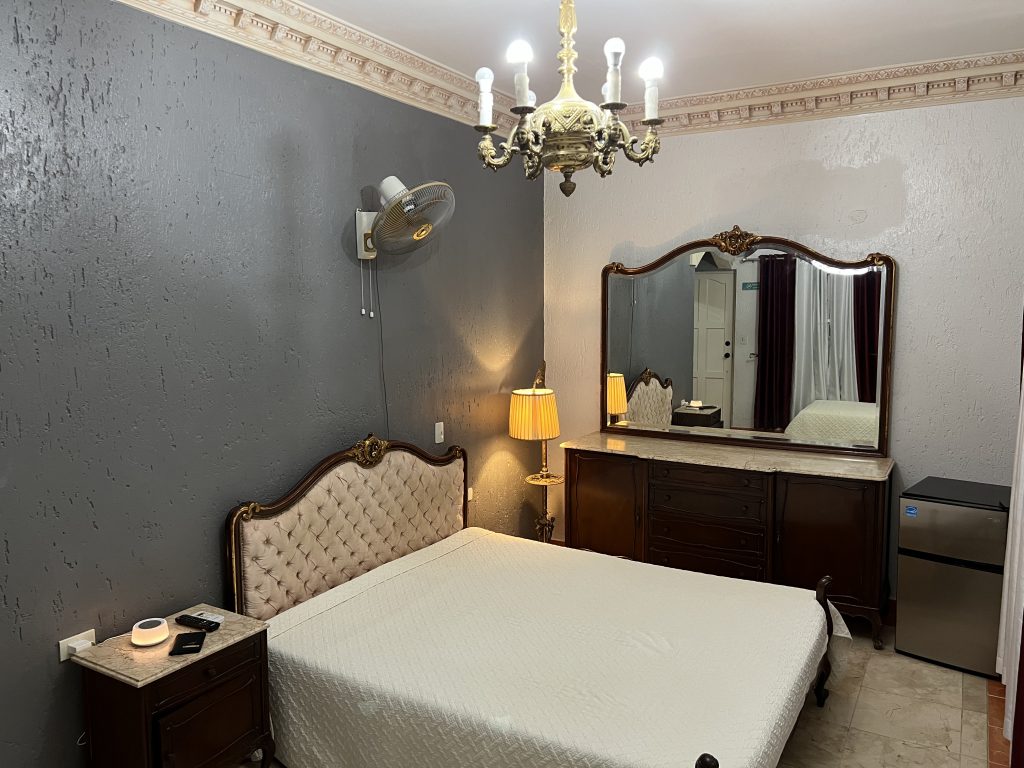
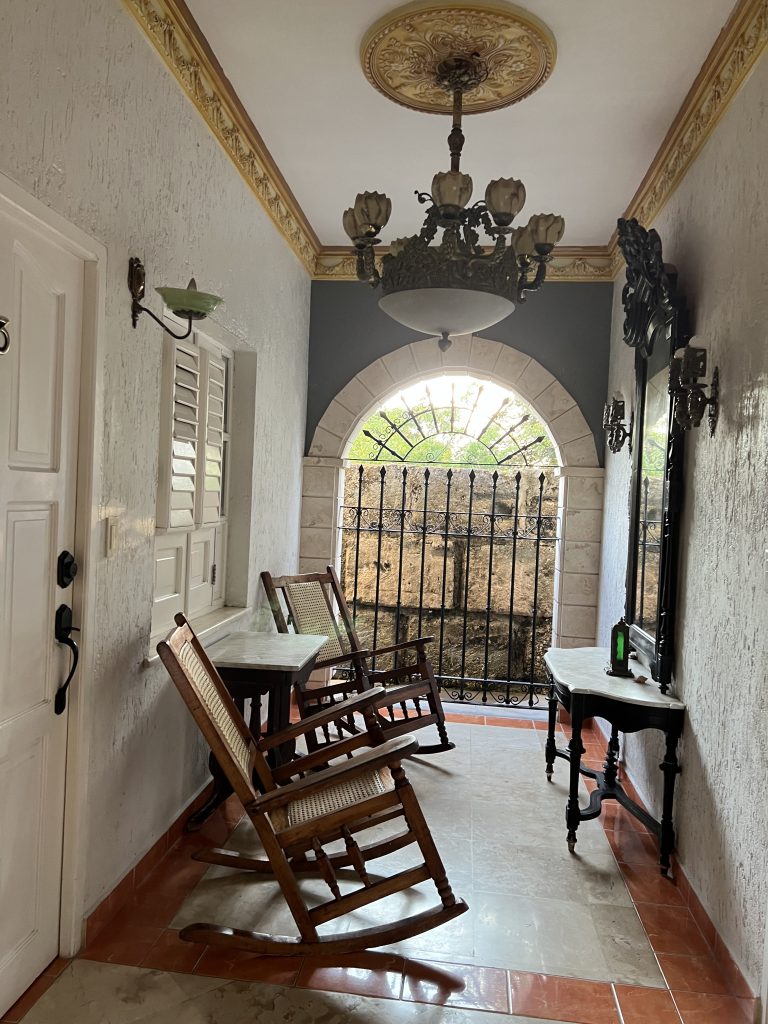
The Best Beaches in Varadero
During our time in Varadero, we had the opportunity to explore the stunning beaches of the peninsula. The endless white sandy beaches and turquoise waters make Varadero one of Cuba’s most beautiful beach destinations.
In this section, we introduce you to the three beaches that impressed us the most with their breathtaking scenery, fine sand, and relaxing atmosphere
Playa Varadero
Location:
Playa Varadero stretches along the Hicacos Peninsula and is considered one of the most beautiful beaches in Cuba. The fine white sand and crystal-clear turquoise waters make this beach a popular destination for beach vacationers.
Features:
The northern section of the beach is more tourist-oriented and offers numerous hotels, bars, and water sports opportunities. Despite its popularity, there are also quieter areas that are perfect for relaxation.
Although Varadero is known for its great snorkeling opportunities, we unfortunately had no luck during our visit and couldn’t spot any marine life. However, a walk along the beach or a picnic at sunset is highly recommended – the atmosphere is simply unique.
Conclusion:
Playa Varadero is perfect for anyone looking to spend a relaxing day by the sea. The combination of a paradise-like setting, fine sandy beach, and Caribbean charm makes this spot particularly appealing.
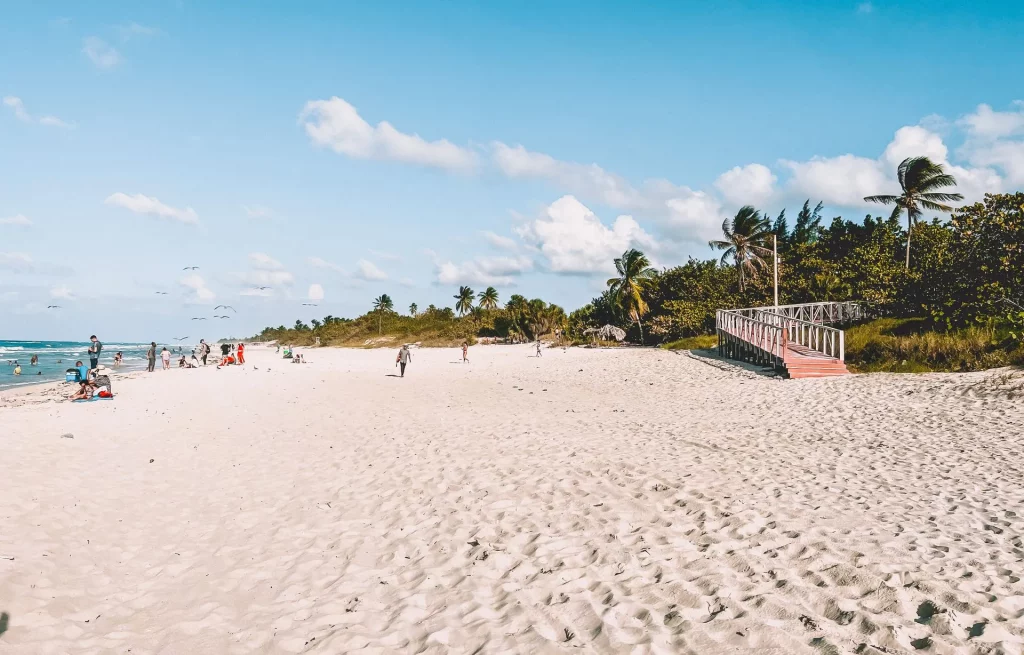
Food and Going Out in Varadero
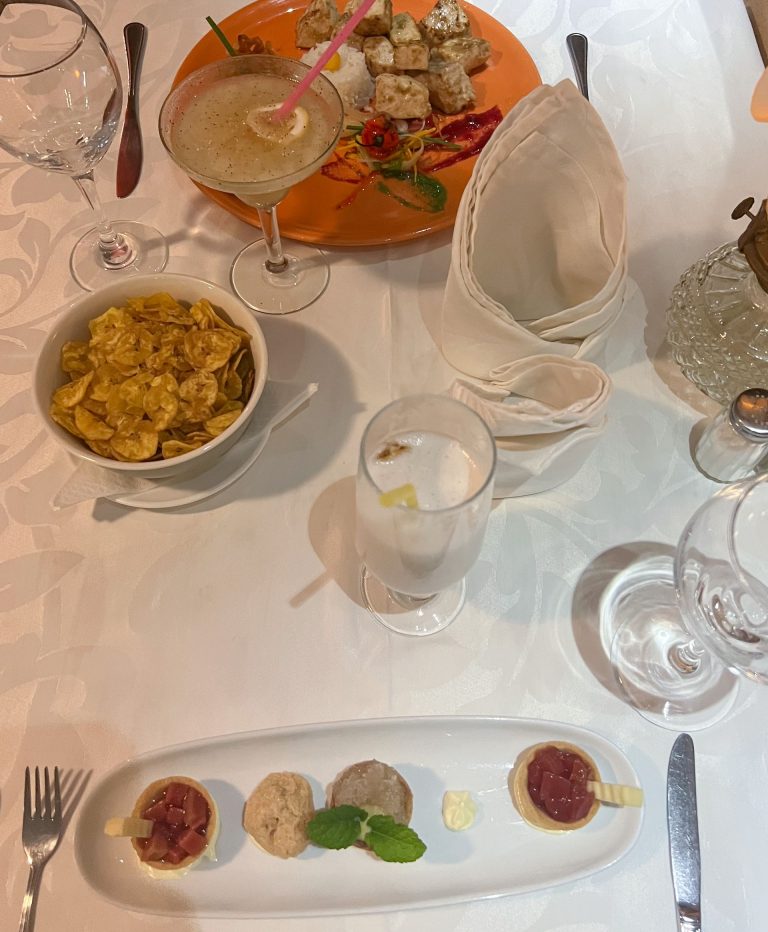
Varadero 60
Location: Varadero 60 is a stylish restaurant in the heart of Varadero, a popular meeting spot for locals and travelers alike.
Our Impression: The restaurant offers a versatile menu featuring Cuban classics and international dishes. The cozy atmosphere, appealing ambiance, and attentive service make it an ideal place for a relaxed dinner.
Conclusion: A great choice for anyone looking to enjoy delicious food in a pleasant atmosphere while in Varadero.
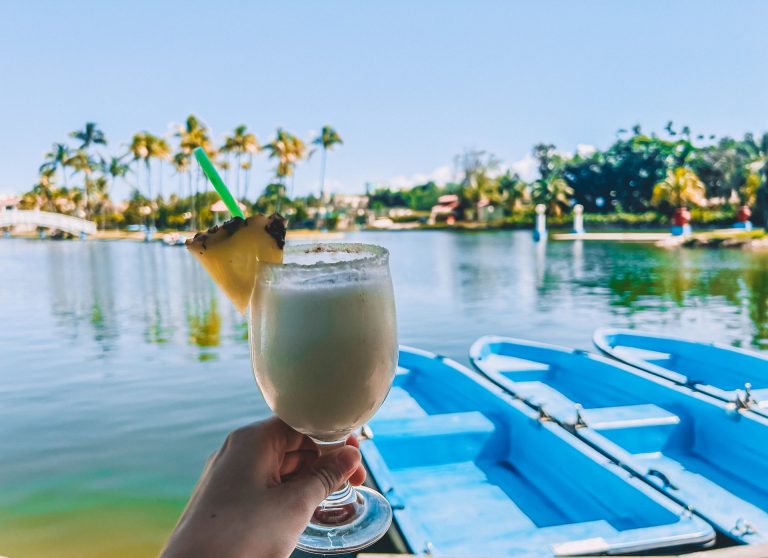
Bar Varadero 1920
Location: Bar Varadero 1920 is centrally located and is a popular spot for cocktail lovers.
Our Impression: Here, you can enjoy refreshing cocktails in a relaxed atmosphere. The stylish decor and friendly staff make the bar an ideal place to unwind and end the day.
Conclusion: Perfect for anyone who wants to enjoy top-quality cocktails in a cozy setting while in Varadero.
Markets in Varadero
Varadero Street Market
Location:
The Varadero Street Market is located at 17 Avenida 1ra, in the heart of Varadero, making it easily accessible for anyone exploring the tourist center.
Opening Hours:
Monday – Sunday: 8:00 AM – 6:00 PM
Offerings & Experience:
The market offers a wide range of typical souvenirs – from handcrafted items and musical instruments to t-shirts, bowls, and paintings. It’s an excellent place to find the perfect keepsake or gift. However, many of the products at the stalls are quite similar, so the selection of unique items may be somewhat limited.
Conclusion:
An ideal spot for buying souvenirs and gifts. If you take your time, you can find charming mementos of your time in Varadero, perfect for a relaxed stroll through the market stalls.
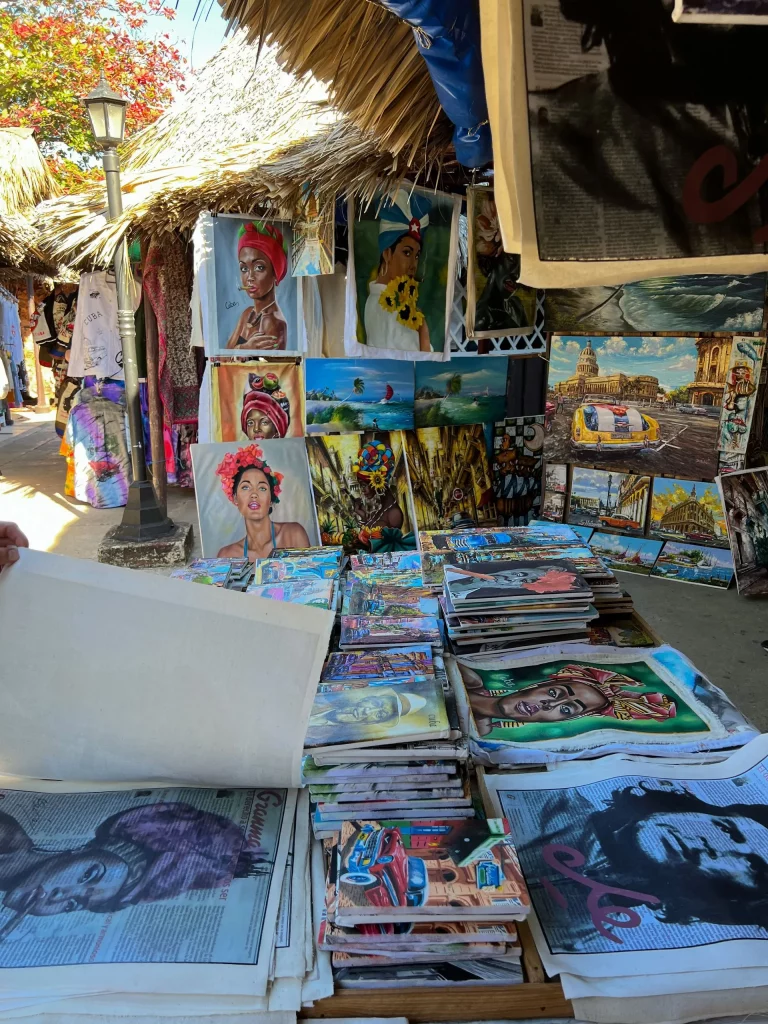
El Mercado
Location:
El Mercado is located on Avenida 1ra in Varadero and is a popular market for both locals and travelers.
Opening Hours:
Monday – Sunday: 8:00 AM – 6:00 PM
Offerings:
This market offers a diverse range of products, from fresh fruits and vegetables to souvenirs, clothing, and handcrafted goods. It provides an authentic atmosphere and is ideal for discovering local products.
Tip:
Arriving early is recommended to get the best products and avoid the largest crowds.
Conclusion:
A lively market perfect for those who want to experience the vibrant hustle of Cuba and pick up a few special finds to take home.
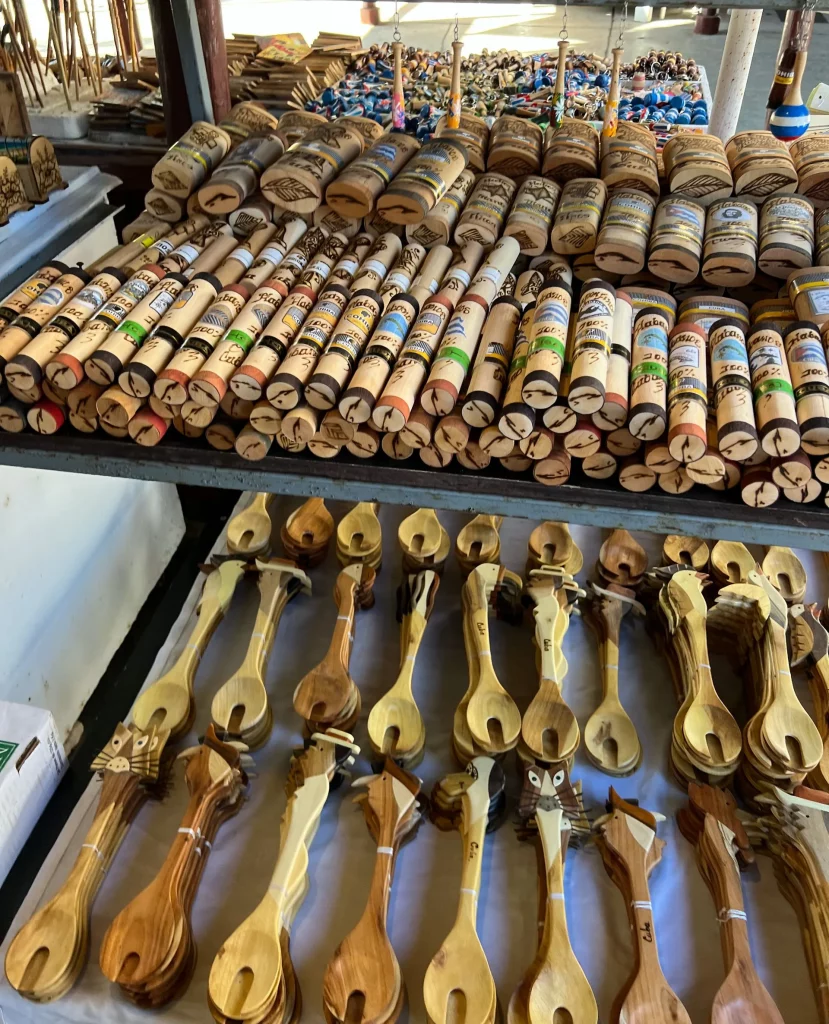
Activities in Varadero
Varadero is not only the most famous beach paradise in Cuba but also an ideal destination for both relaxation seekers and active vacationers. From stunning white sand beaches to exciting water sports opportunities and thrilling excursions to the surrounding areas, there is so much to discover here.
In this section, we will introduce you to the best activities that will make your stay in Varadero unforgettable – whether you want to relax on the beach, explore the turquoise sea, or experience the fascinating nature and culture of the region.
Trip to Cayo Blanco Island
Location:
Cayo Blanco is located about 30 kilometers south of Varadero and is an idyllic island known for its white sandy beaches and crystal-clear waters.
Experience & Offerings:
Several tour operators in Varadero organize boat trips to the island, typically including lunch and snorkeling stops at the colorful coral reefs. The journey is often made by catamaran, turning the boat ride itself into a relaxing experience. On Cayo Blanco, there is also a small market where souvenirs and refreshments are available.
Conclusion:
Perfect for those who want to spend a relaxing day on a tropical island. The combination of boat tours, snorkeling, and the paradisiacal surroundings makes this excursion an unforgettable experience.
Cueva de Saturno
Location:
The Cueva de Saturno is located about 11 kilometers from Varadero and is one of the most famous cenotes in Cuba. Surrounded by impressive rock formations and tropical vegetation, it offers a unique natural experience.
Opening Hours:
Monday: 8:00 AM – 5:15 PM
Tuesday – Sunday: 9:00 AM – 5:00 PM
Experience & Offerings:
The cenote is known for its crystal-clear water, inviting visitors to swim and snorkel. The cave is partly very deep, so caution is recommended when swimming. Visitors can explore the site on their own or join a guided tour, which often includes transportation and the entrance fee.
Our Impression:
A fascinating place for nature lovers and adventure seekers. The combination of clear water, mysterious stalactite formations, and the secluded location makes Cueva de Saturno a special excursion destination.
Conclusion:
Perfect for those looking to discover a unique natural phenomenon away from the beaches. To fully enjoy the magic of this place, it’s recommended to visit early in the morning or late in the afternoon.
Pottery Class
Taller de Cerámica Artística
Location:
The Taller de Cerámica Artística is located on Avenida 1 in Varadero and is a creative spot for those interested in ceramic art.
Experience & Offerings:
Here, you have the opportunity to purchase handcrafted ceramic pieces or participate in a workshop to create your own art. The studio offers a wide range of beautifully crafted items, from traditional designs to modern interpretations.
Our Impression:
An inspiring place that combines craftsmanship and creativity. It’s especially fascinating to watch the artists at work and learn more about Cuban ceramic art.
Conclusion:
Perfect for those looking for a unique souvenir or wishing to get creative. The combination of traditional craftsmanship and interactive experiences makes this place particularly worthwhile.
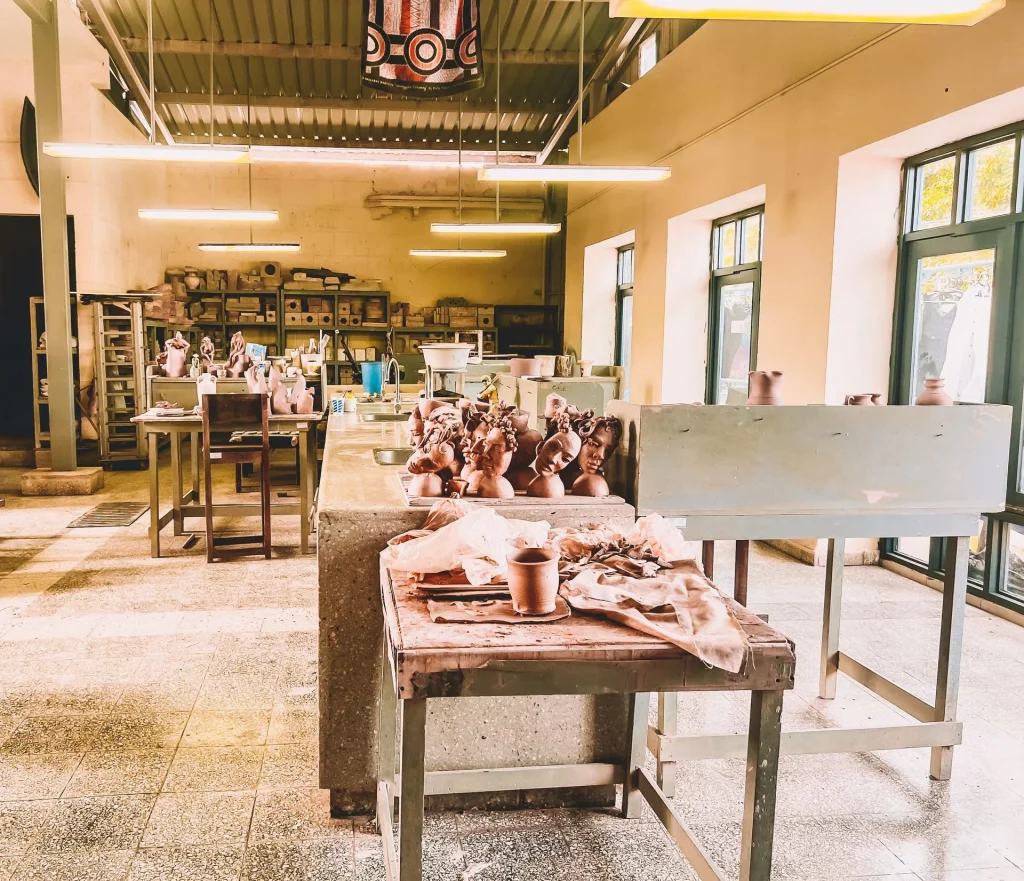
Sunset at the Beach
How about a romantic and relaxing evening at the beach? Pack a soft beach blanket, some delicious snacks and drinks, and head to the beach. Once you’re there, find a cozy spot, spread out the blanket, and enjoy the view of the sea as the sun slowly sets.
You might even be lucky enough to witness a breathtaking color palette in the sky as the sun dips below the horizon. Enjoy the calm and peaceful atmosphere of the beach, far from the hustle and bustle of the city. It’s the perfect opportunity to relax and savor the moment.
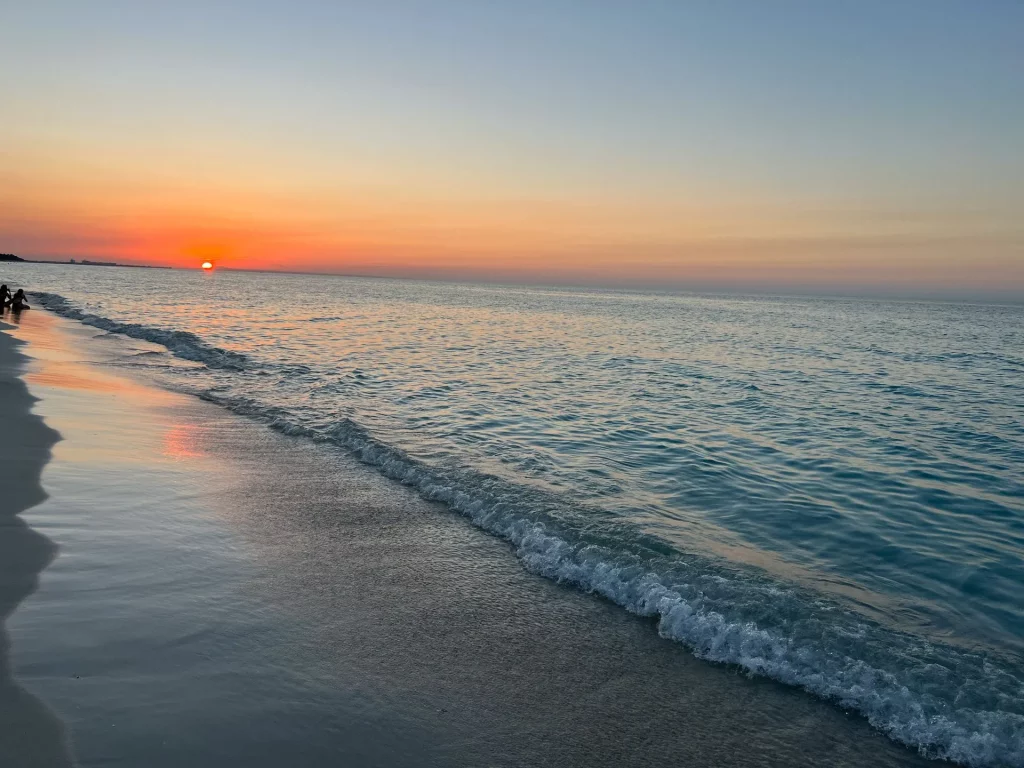
Our trip to Trinidad
Trinidad is located on the southern coast of Cuba, in the province of Sancti Spíritus, and is one of the most beautiful cities in the country. The well-preserved colonial city, which is a UNESCO World Heritage site, enchants visitors with its colorful houses, cobblestone streets, and unique atmosphere. Surrounded by lush mountains and just a few kilometers from stunning beaches, Trinidad offers a perfect mix of history, culture, and nature.
We visited Trinidad as part of a guided tour that took us not only through the city but also to several other impressive locations. Along the way, we made stops in Santa Clara to visit the Monumento Memorial Che Guevara and in Cienfuegos, where we took a stroll through the city and had lunch at Restaurante Marinero.
On the second day, we set off early to the Topes de Collantes National Park, where we explored the stunning nature with a guide. After the hike, we enjoyed lunch at a restaurant in the park.
However, Trinidad has much more to offer than just colonial charm:
What you can expect in this section:
- The most beautiful sights – from the colonial old town to the Taberna La Canchánchara
- Exciting stops along the route – Monumento Memorial Che Guevara in Santa Clara & Cienfuegos
- Our experiences in Trinidad – visit to a ceramic shop, a traditional Canchánchara cocktail, and 2 hours of free time for exploration
- Nature & adventure – guided hike in Topes de Collantes National Park with lunch
Let yourself be inspired and discover Trinidad and its surroundings in all their facets.
Getting to Trinidad
Our trip to Trinidad began in Havana. We decided to take a 2-day tour with Gaviota for $200 per person, allowing us to explore the city and its surroundings without much planning effort.
Transport Options to Trinidad
- Collective Taxi (Sammeltaxi)
A budget-friendly option for around $35 per person. The journey takes about 4 hours and is shared with other travelers.
- Guided 2-Day Tour with Gaviota
Ideal for those who want to experience as much as possible in a short time. In addition to Trinidad, we also visited the Monumento Memorial Che Guevara in Santa Clara, the city of Cienfuegos, and the Topes de Collantes National Park. The price included transport, guided tours, and meals.
For us, the tour was the perfect way to explore Trinidad and its surroundings in a relaxed manner without worrying about organization or transport.
Our Accommodation in Trinidad
Hotel Los Helechos Gaviota
Location:
The hotel is located in Topes de Collantes, surrounded by nature and away from the city center.
Value for Money:
Poor
✔ Positives:
• Quiet location in the midst of nature
• A wide variety of food available at dinner and breakfast
✖ Negatives:
• Outdated and neglected facilities
• Clear signs of wear and tear throughout the hotel
• Comfort and service do not meet the price level
Conclusion:
Fine for a one-night stay, but overall disappointing. The hotel seems to have seen better days, and the value for money leaves much to be desired. If there is a choice within a tour, we would prefer to stay elsewhere in the future.
Itinerary of the Tour
Day 1:
5:30 AM: Pick-up from the hotel. The drive took about 4 hours until our first stop.
Monumento Memorial Che Guevara:
We visited the monument dedicated to Che Guevara in Santa Clara, learning about his life and revolutionary influence in Cuba.Restaurante Marinero in Cienfuegos:
We had lunch at this lovely restaurant in Cienfuegos, offering Cuban dishes and a great view of the sea.Cienfuegos (City):
After lunch, we took a stroll through the city, enjoying the charming atmosphere, colonial architecture, and scenic harbor.Trinidad (Ceramics Shop, Taberna La Canchanchara, 2 Hours Free Time):
Upon arrival in Trinidad, we visited a local ceramics shop and then stopped by Taberna La Canchanchara, a famous place to try the traditional Canchánchara cocktail. We had 2 hours of free time to explore the town at our own pace.
Day 2:
8:00 AM: Departure to Topes de Collantes National Park with a guide.
We set off early in the morning to explore the stunning natural beauty of the park, learning about its diverse flora and fauna.Lunch at a Restaurant in the National Park:
After the hike, we enjoyed a delicious lunch at a restaurant in the national park, soaking in the peaceful environment around us.
Memorial Comandante Ernesto Che Guevara
Location:
The museum and monument are located in Santa Clara and are one of Cuba’s most well-known memorial sites.
Opening Hours:
Tuesday – Sunday: 9:00 AM – 5:00 PM
Experience & Offerings:
The memorial includes a large statue of Che Guevara, his mausoleum, and a museum that provides insights into his life and work. However, many exhibits and plaques are only in Spanish, which can be challenging for international visitors. Key historical contexts, especially relating to the Cuban Missile Crisis, are sparsely documented.
Our Impression:
For history enthusiasts, the memorial is a significant site, but we found the lack of English translations and the incomplete representation of political events to be a downside. Our guide also mentioned that political topics in Cuba are often not openly discussed.
Conclusion:
A worthwhile visit for those interested in Che Guevara’s history. However, those expecting a deeper historical context should be aware that much of the information is incomplete or only available in Spanish.
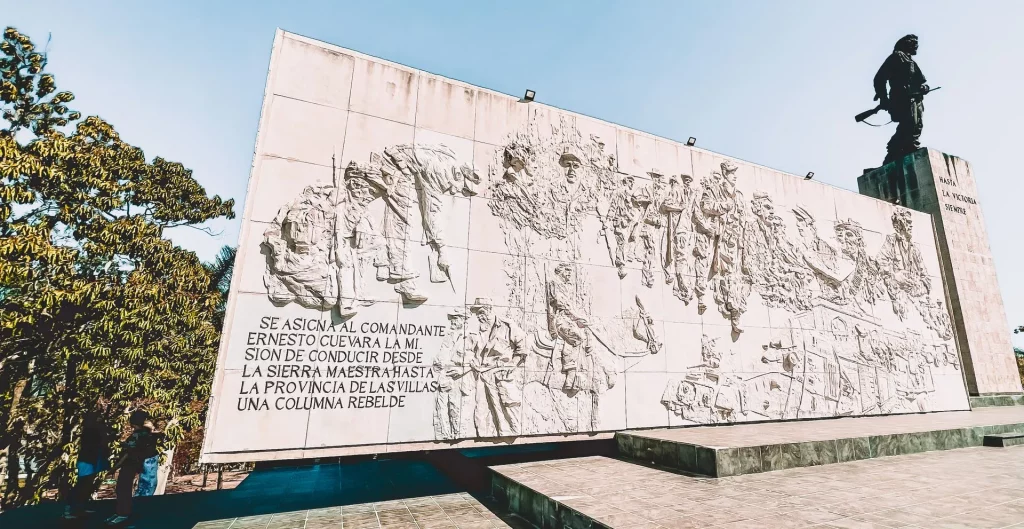
Cienfuegos
Location:
The museum and monument are located in Santa Clara and are one of Cuba’s most famous memorial sites.
Opening Hours:
Tuesday – Sunday: 9:00 AM – 5:00 PM
Experience & Offerings:
The memorial includes a large statue of Che Guevara, his mausoleum, and a museum that provides insights into his life and work. However, many of the exhibits and plaques are only in Spanish, which can be challenging for international visitors. Key historical contexts, especially concerning the Cuban Missile Crisis, are sparsely documented.
Our Impression:
For history enthusiasts, the memorial is a significant site. However, we found the lack of English translations and the incomplete representation of political events to be a disadvantage. Our guide also mentioned that political topics in Cuba are often not openly discussed.
Conclusion:
A worthwhile place for anyone interested in Che Guevara’s history. However, those expecting a deeper historical context should be aware that much of the information is incomplete or only available in Spanish.
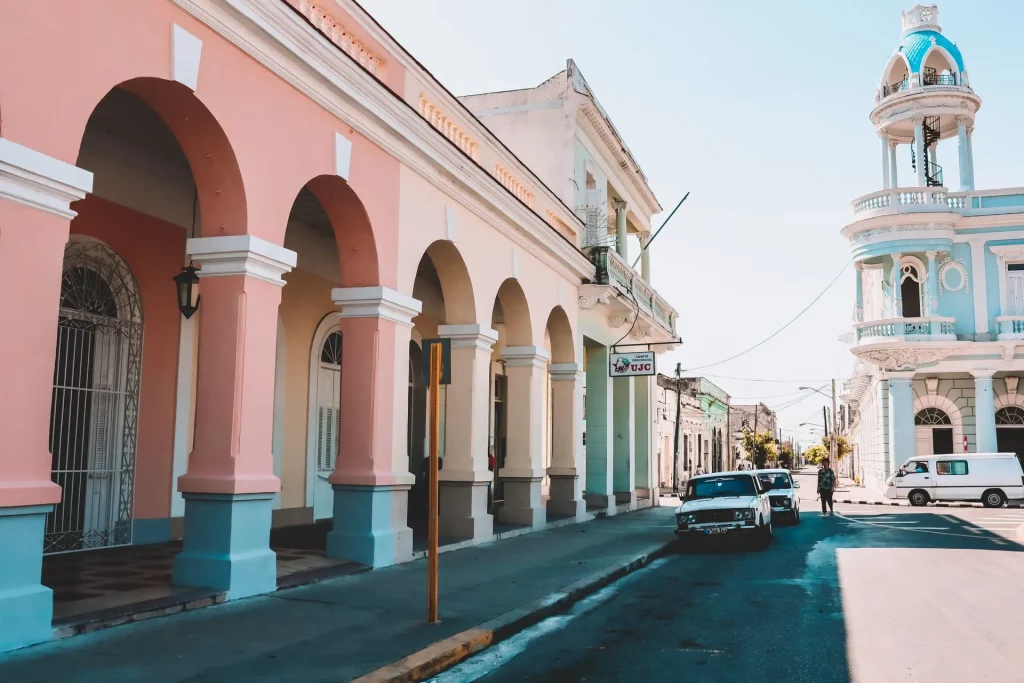
Teatro Tomás Terry
Location:
The Teatro Tomás Terry is located in the heart of Cienfuegos, directly at Parque José Martí. It is one of the most important architectural landmarks of the city.
Opening Hours:
Monday – Sunday: 9:00 AM – 6:00 PM
Experience & Offerings:
Built in the 19th century, the theater impresses with its magnificent neoclassical façade, adorned with columns and intricate ornaments. Inside, visitors are greeted by an impressive amphitheater with over 900 seats, beautiful ceiling murals, and artistic sculptures. In its glorious past, world stars such as Enrico Caruso and Anna Pavlova performed here. Today, the Teatro Tomás Terry hosts concerts, theater performances, and cultural events.
Our Impression:
An architectural masterpiece and a must-visit for culture and history lovers. The artistic design inside makes it one of the most beautiful theaters in Cuba.
Conclusion:
A worthwhile stop in Cienfuegos for those interested in history, architecture, and culture. Even if there is no performance, a visit inside this impressive theater is highly recommended.
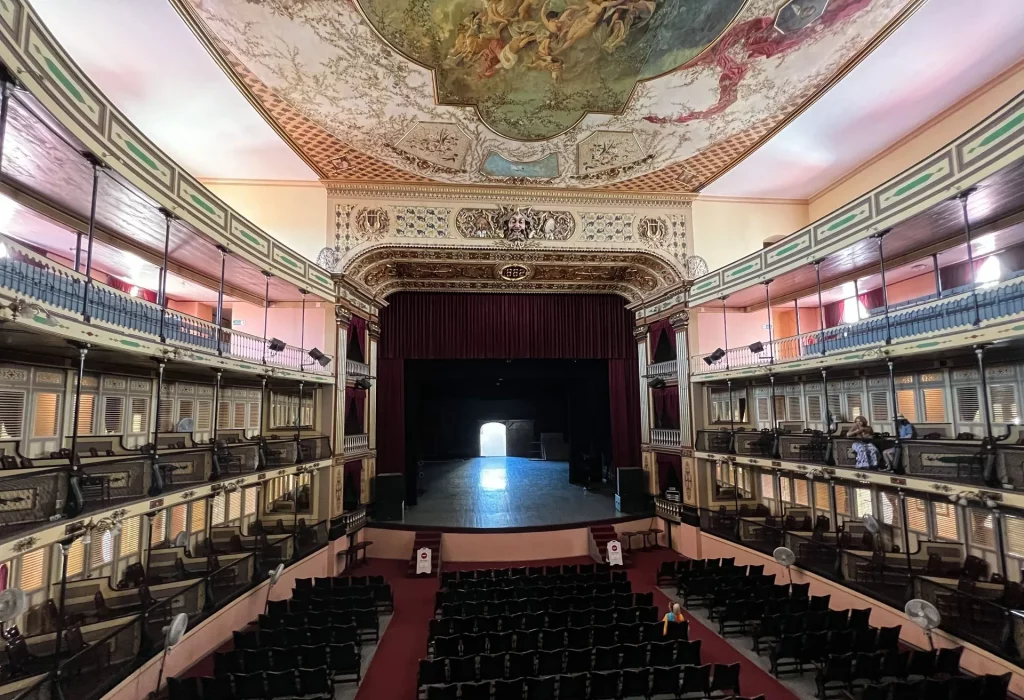
Bars in Trinidad
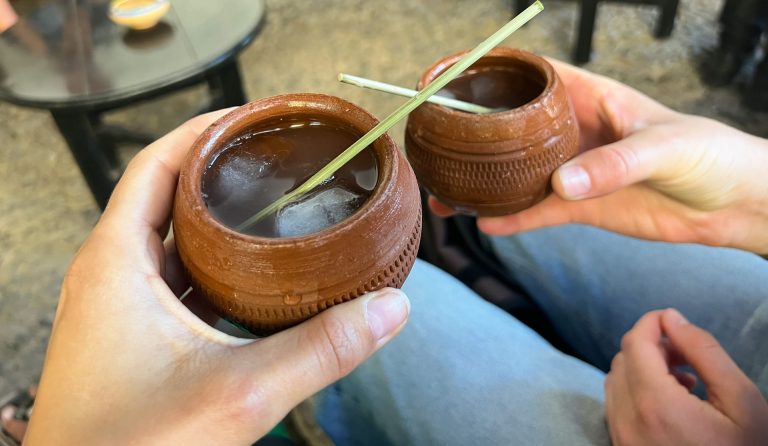
Taberna La Canchanchara – Traditional Drink in a Tourist Setting
Location:
The Taberna La Canchanchara is located in Trinidad and is famous for its namesake traditional Cuban drink made of rum, honey, and lime.
Our Impression:
As part of our tour, we made a stop at the bar, where a live band provided musical entertainment. The atmosphere was lively, but the bar had a very touristy feel, especially tailored to tour groups. The Canchanchara itself was an interesting experience, but its taste was somewhat watery and not very impressive.
Conclusion:
A nice stop to try the famous Canchanchara in a traditional setting. However, if you’re looking for a more authentic bar away from the typical tourist paths, you might not find it here.
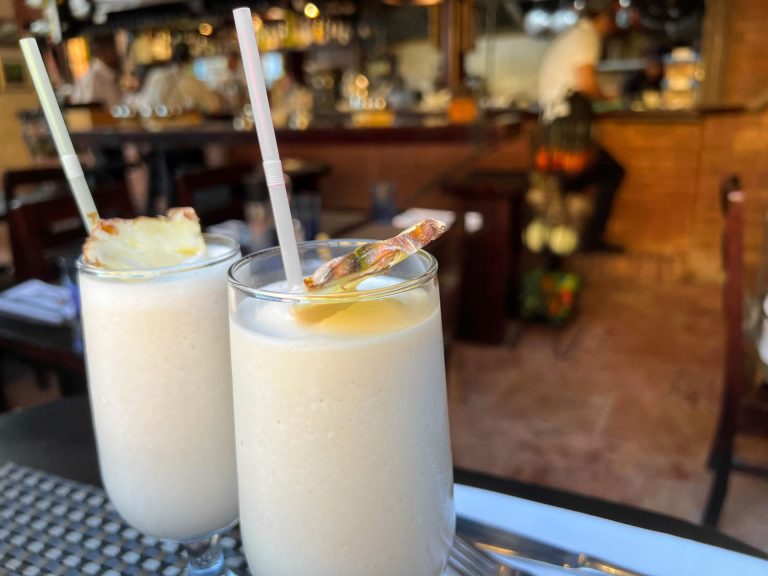
Adita Café
Location
Adita Café is a charming spot for coffee and snack lovers, open from early morning until late at night.
Our Impression
Whether for breakfast, a quick coffee, or a relaxed evening drink, Adita Café offers a wide variety of beverages and light snacks. The cozy atmosphere and friendly service make it a pleasant place to take a break.
Conclusion
An inviting café for any time of day, perfect for anyone looking to enjoy a good cup of coffee or a snack in a relaxed environment.
Activities in Trinidad and Surroundings
Valle de los Ingenios
Location
The Valle de los Ingenios is located outside of Trinidad and was once the center of sugar production in the region. Today, it is a UNESCO World Heritage site, impressing visitors with its vast landscapes and historical ruins.
Experience & Offer
Unfortunately, during our stay in Trinidad, we didn’t have the chance to visit the Valle de los Ingenios. Due to limited time, we couldn’t enjoy the breathtaking views of the valley. However, we’ve heard from other travelers that the panoramas are stunning, offering views of green hills, old sugar plantations, and historic estates that once formed the economic heart of the region.
Our Impression
Although we didn’t make it this time, the Valle de los Ingenios is definitely on our list for the next visit to Trinidad. It’s said to be a great place to explore the history of the sugar industry and enjoy the spectacular landscape.
Conclusion
A must-see for nature lovers and history enthusiasts. Anyone visiting Trinidad with enough time should not miss the chance to experience this impressive backdrop and cultural heritage.
Old Town of Trinidad
Experience & Offerings
Trinidad is one of Cuba’s most beautiful colonial cities, inviting visitors to simply wander and explore. A walk through its narrow, cobblestone streets takes you past colorful houses, charming cafés, and small artisan shops. The colonial architecture, with intricately decorated churches and historic buildings, gives the city a unique charm.
Street musicians fill the air with traditional sounds, and at every corner, you’ll find little markets where beautiful souvenirs can be purchased.
A highlight is the Plaza Mayor, the heart of Trinidad. Surrounded by majestic palaces and historic buildings, the square is the perfect spot to watch the lively hustle and bustle, while enjoying a break at one of the surrounding cafés.
Our Impression
The Old Town of Trinidad captivates with its unique charm and lively atmosphere. If you want to experience authentic Cuba, take the time to stroll through the city and discover the small details that make Trinidad so special.
Conclusion
A must-visit for anyone interested in history, architecture, and the Cuban way of life. Whether you’re wandering the streets, listening to the street music, or exploring small boutiques, the Old Town of Trinidad is a place filled with magic and history.
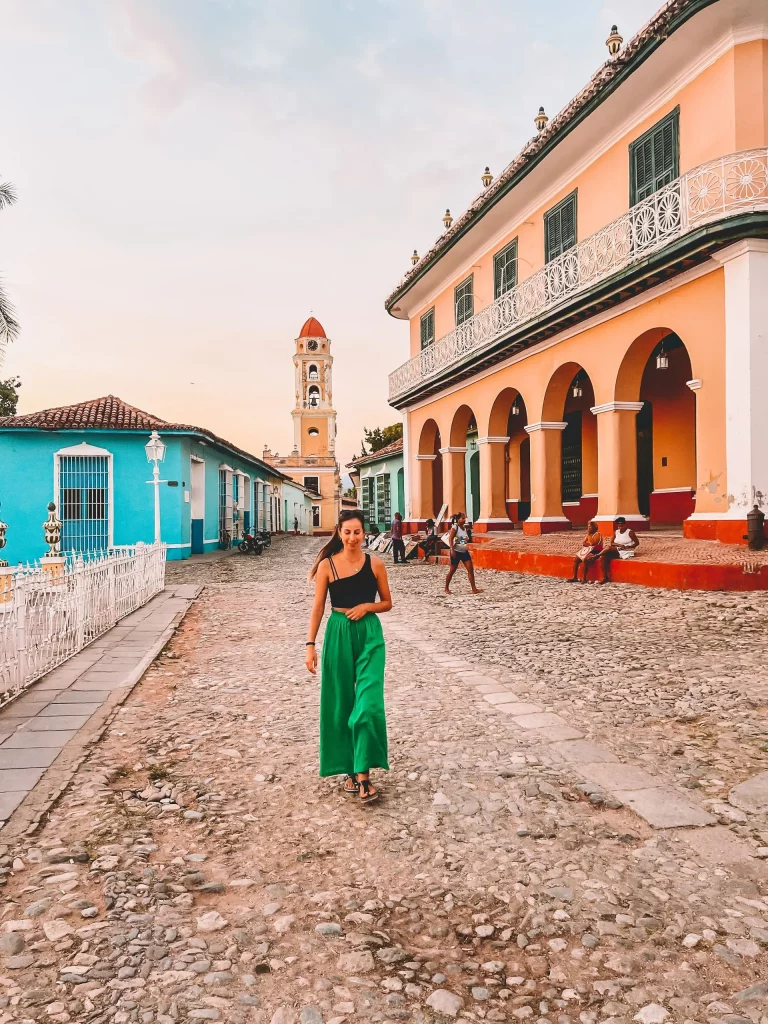
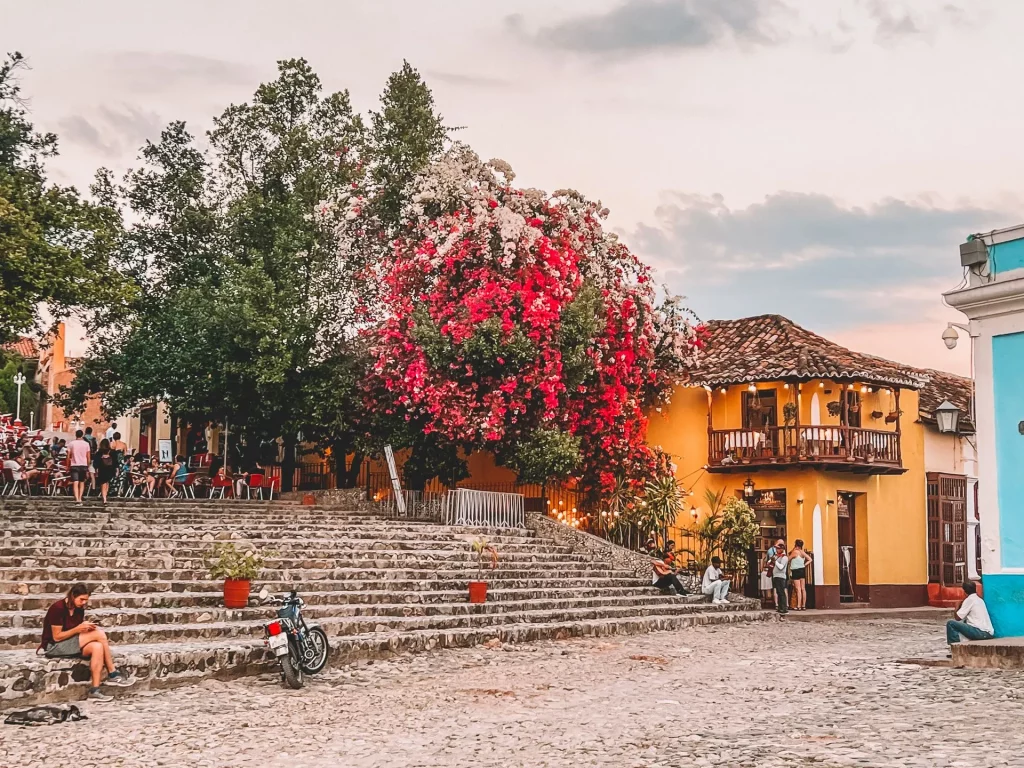
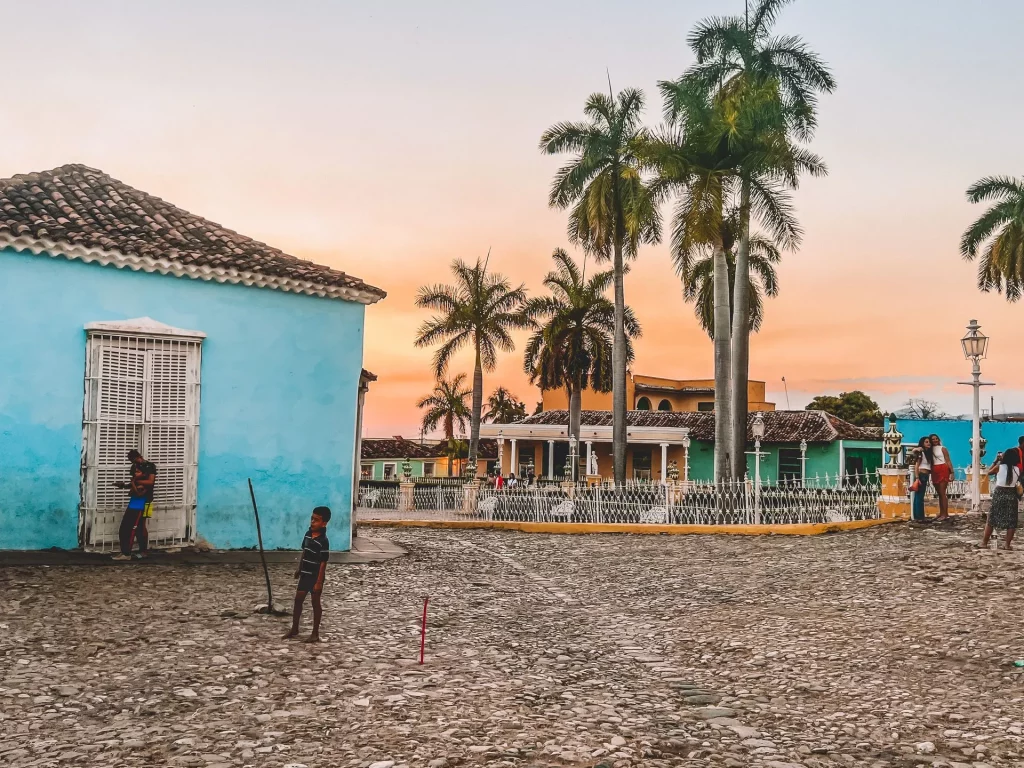
Topes de Collantes
Location & Arrival
The Topes de Collantes National Park is located in the Escambray Mountains, not far from Trinidad. There are two ways to book a tour:
- Directly through a travel agency in Trinidad
- With a private driver who will take you to the park entrance, where an organization house offers various tours.
Experience & Offerings
As part of our 2-day tour, we visited the national park and explored the Guanayara Park area, which is a part of Topes de Collantes. With a guide, we began our adventure in an old “Russian limousine,” which took us over the bumpy roads to the starting point of our hike—a ride that felt like a little rollercoaster and caused a few laughs.
The hike led us through lush nature, passing rivers, waterfalls, and dense forests. The varied landscape and refreshing swimming pools made the excursion a special experience.
Our Impression
A perfect tour for nature and adventure lovers! The combination of hiking, the exciting drive, and the stunning natural backdrop truly impressed us.
Conclusion
Topes de Collantes is a great destination for those who want to experience Cuba’s untouched nature away from the cities. Especially recommended for active travelers looking for a mix of adventure and relaxation.
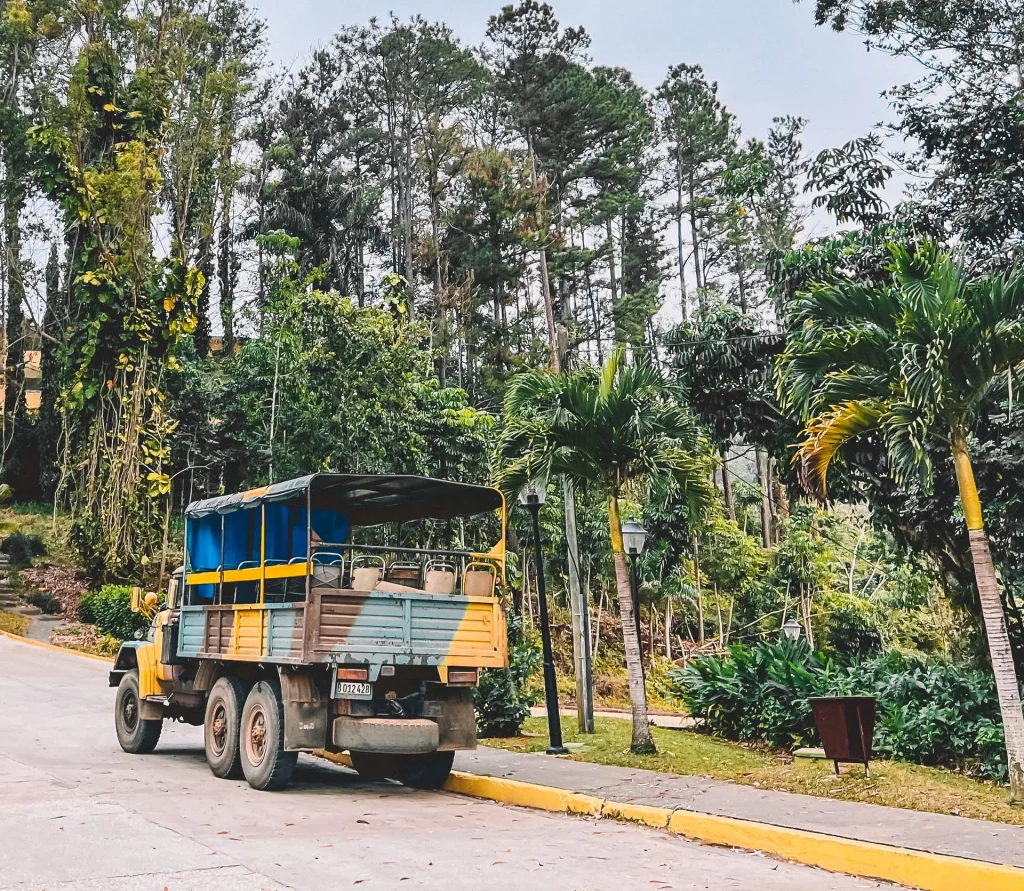
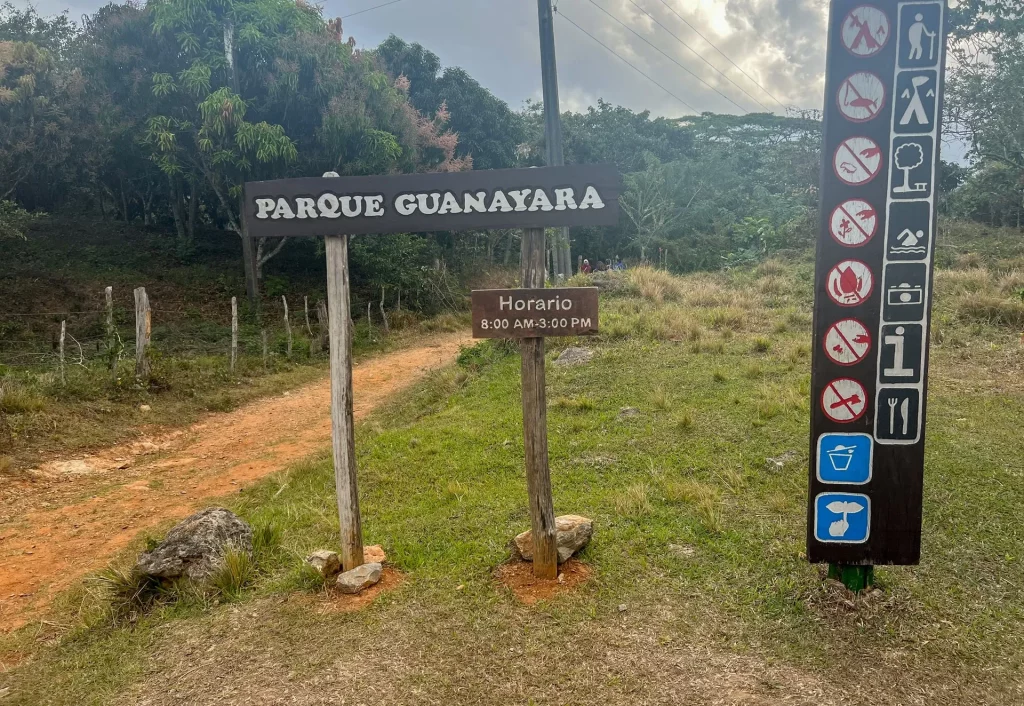
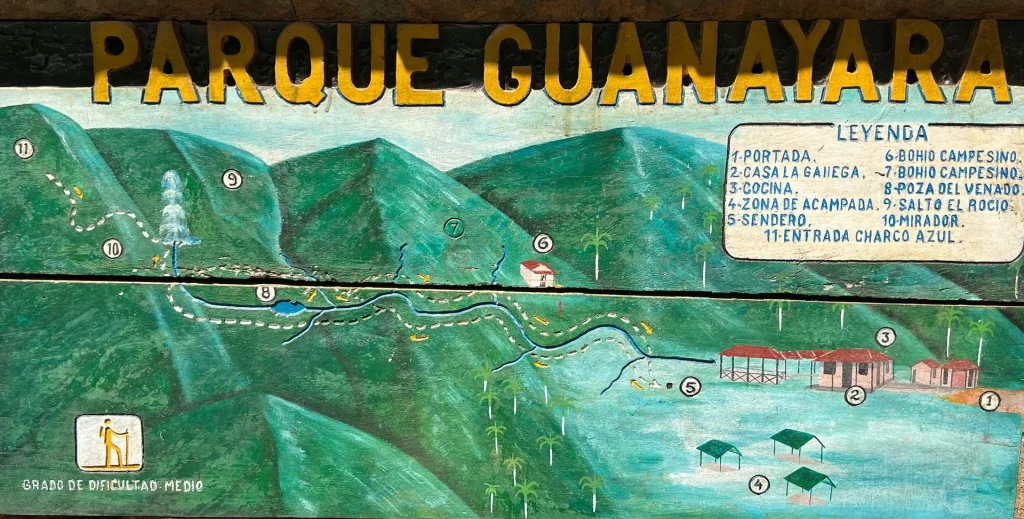
At the starting point of the hike, there was a vendor stand where you could buy various snacks such as bananas, nut bars, and other treats. This was a convenient way to fuel up for the upcoming hike and stock up on supplies for the journey.
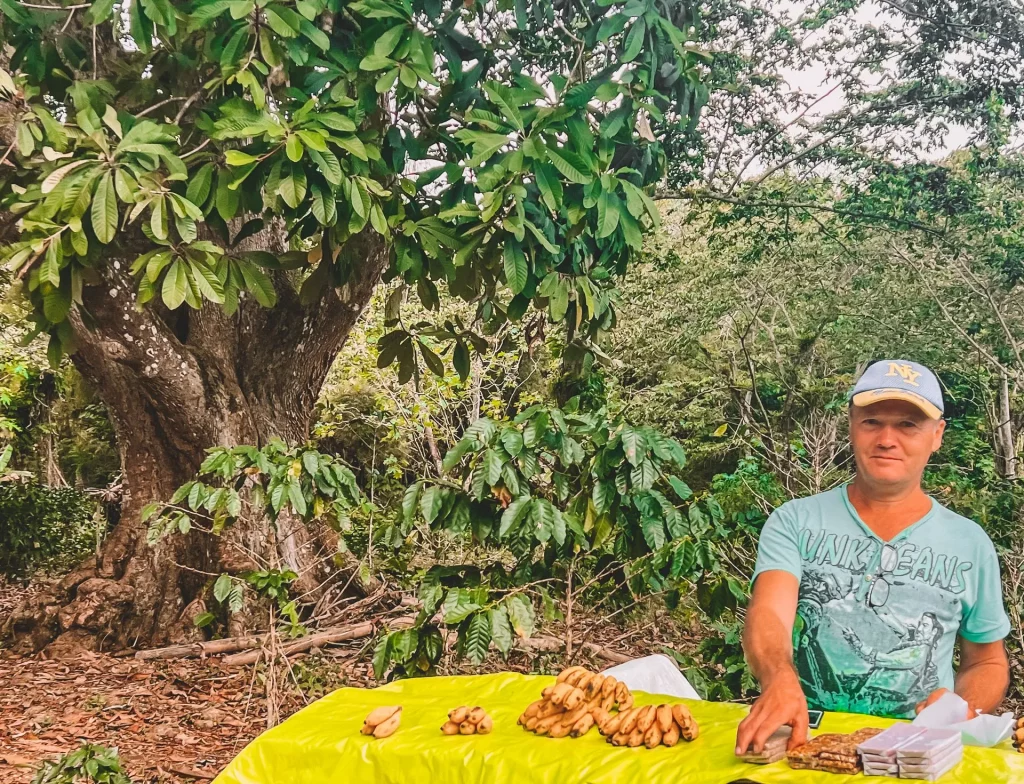
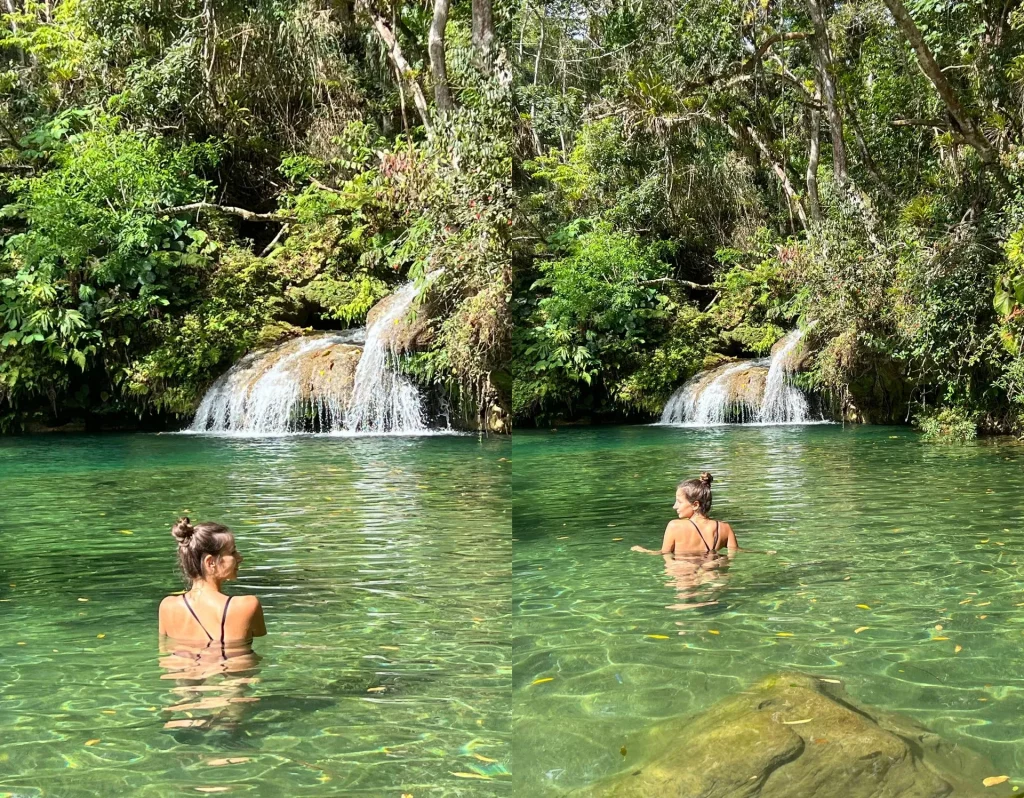
At this point, we took a break for about an hour to cool off. The water was quite cold, and the entrance was slippery and rocky, so I definitely recommend wearing water shoes. However, it was a refreshing way to cool down after the hike.
Next to the swimming spot, there were benches and a small wooden hut where you could buy drinks. It was really nice to relax here and enjoy the nature around us.
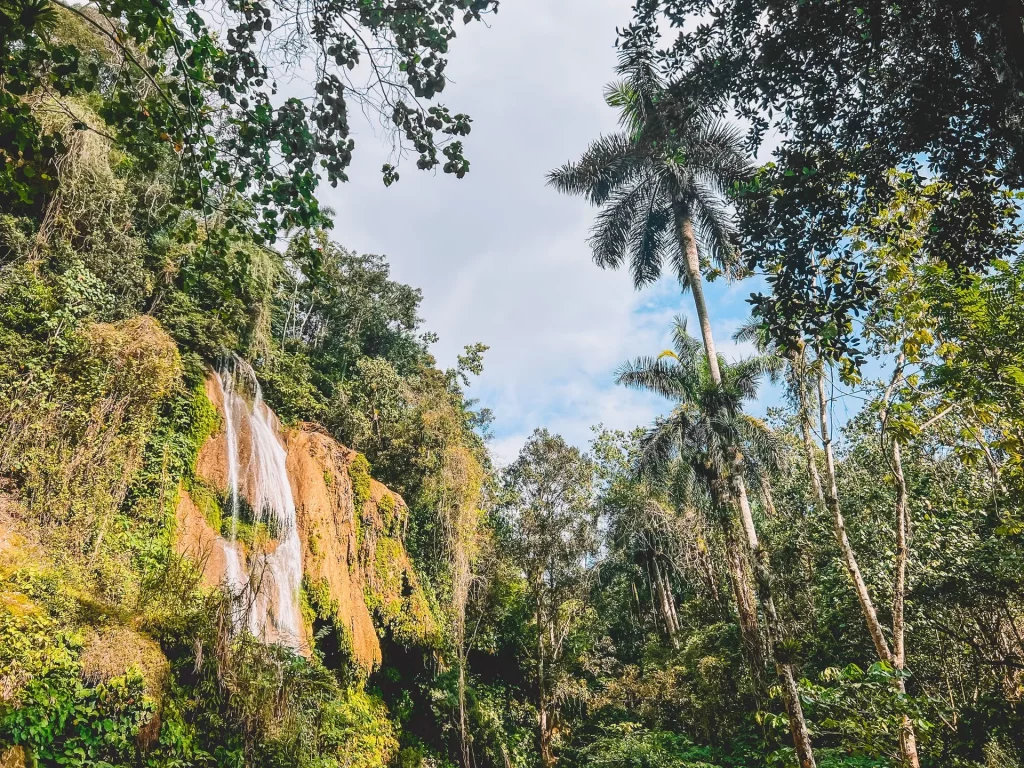
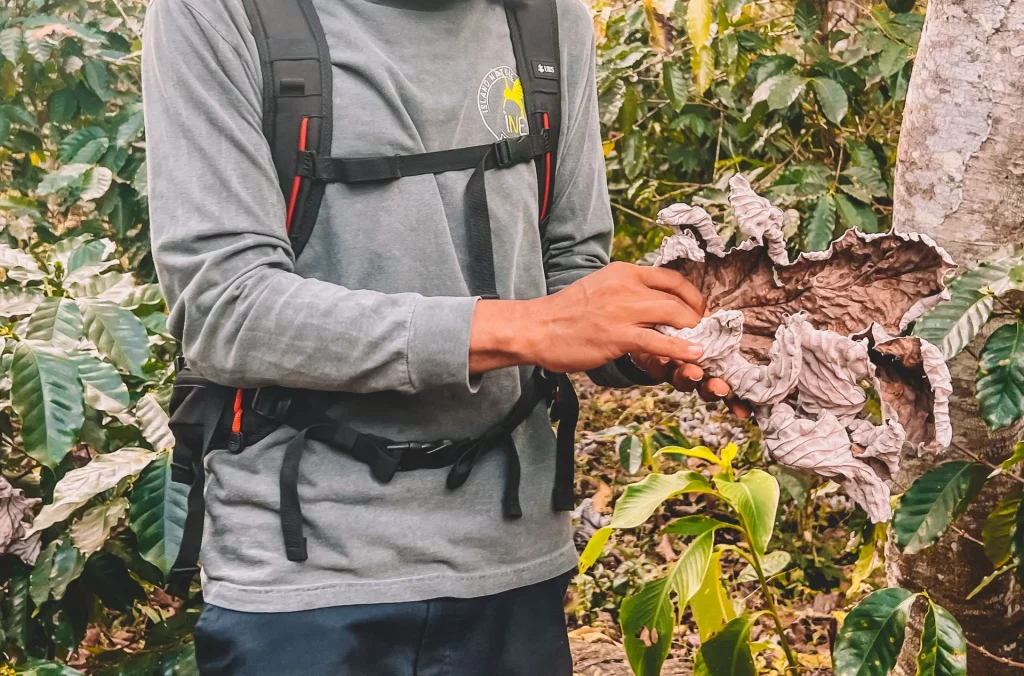
At the end of our hike, we crossed a hanging suspension bridge that led us to a restaurant. There, we refreshed ourselves with a Cuba Libre and enjoyed a delicious lunch. The atmosphere was very relaxed, and we were able to take in the stunning view of the surrounding landscape.
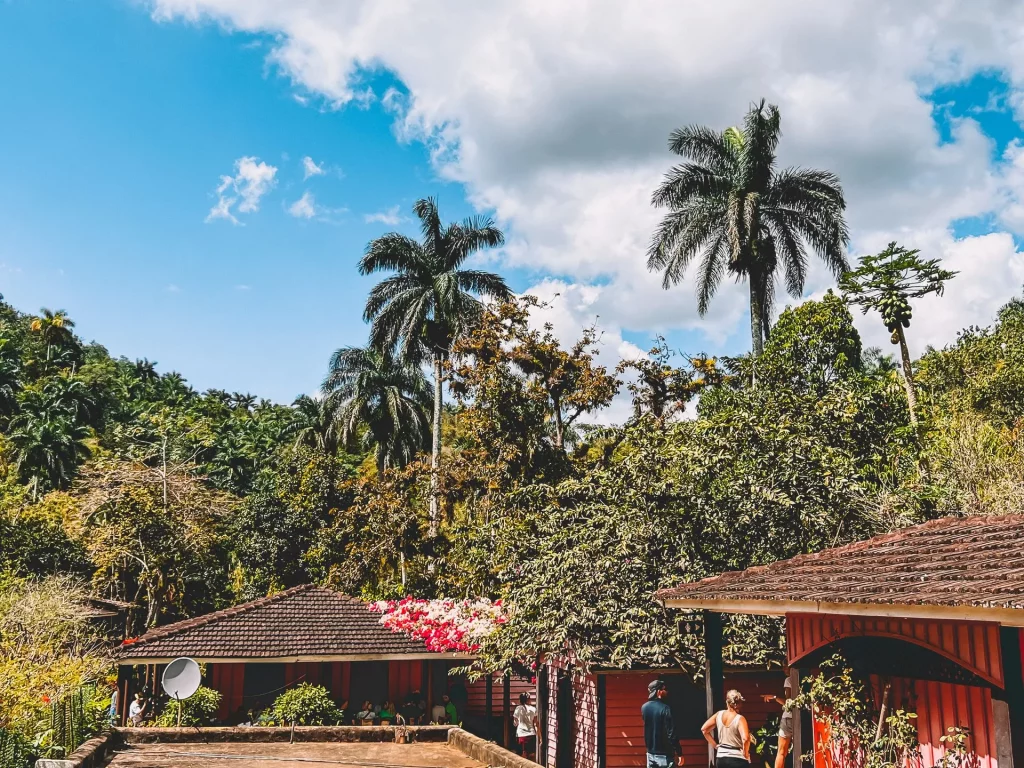
Conclusion of this tour
Our 2-day tour was a great way to experience several highlights like Cienfuegos, Trinidad, and the Topes de Collantes National Park in a short amount of time. We were especially impressed by the national park, but with more time, we would have opted for a longer and more challenging hike.
If we travel to Trinidad again, we would explore the places on our own. This would give us more flexibility, allowing us to decide how long to stay at each spot and giving us the opportunity to see more of the surroundings—such as the Valle de los Ingenios, which we missed this time.
A clear downside was the accommodation in Topes de Collantes, which we didn’t really like. The included restaurants were also disappointing, hardly any good vegetarian options and the food was rather bland.
Overall, the tour was well-organized and gave us a great first impression of the region. However, next time, we would prefer to plan it ourselves to make the most of our time and see exactly what we’re interested in.
Vinales
Viñales is one of Cuba’s most beautiful natural paradises, known for its spectacular limestone mountains (Mogotes), lush tobacco fields, and relaxed atmosphere. The small town is located in the eponymous valley in western Cuba, offering not only breathtaking landscapes but also exciting experiences for those who want to discover authentic rural life.
Our trip to Viñales was part of a tour where we explored the region with its unique landscapes and sights. The relaxed small town with its colorful houses served as the perfect starting point for excursions into the surrounding area.
But Viñales offers much more than just stunning nature:
What you can expect in this section:
- The best experiences in Viñales – horse riding, hikes & cave visits
- Culinary highlights – the best restaurants & local specialties
- Tobacco & cigars – insight into traditional tobacco production
- Cultural insights & insider tips – discovering Viñales off the beaten path
Let yourself be inspired and dive into the green heart of Cuba!
Getting to Vinales
Our journey to Viñales began in Havana. We decided to take a Collectivo taxi, one of the most popular transportation options in Cuba. Around 11 am, we were picked up by a vintage car, along with three other travelers. The ride through the impressive Cuban landscape took about 2.5 hours and offered beautiful views of vast fields, palm groves, and small villages.
Transportation options to Viñales:
Collectivo taxi: The most affordable and sociable option. The ride costs around $25 per person, and you share the car with other travelers. Departures are usually in the morning, between 8:00 and 11:30 am, depending on the provider.
Private taxi: For more comfort and flexibility, a private taxi can be booked. The cost is around $90, and the travel time is also about 2.5 hours.
VIAZUL bus: The cheapest option for solo travelers is the VIAZUL bus. Tickets can be purchased online or directly at the bus station. However, seats are often sold out the day before, so it’s recommended to reserve early.
Our experience with the return trip:
The return journey to Havana was straightforward. The ride through the breathtaking nature was already a highlight in itself and made us eager to explore the unique Viñales Valley.
Our Accommodations in Viñales
Sol Poniente Airbnb
Location
The accommodation is quiet but still central, making it ideal for exploring Viñales.
Value for Money
Good
✔ Positives
• Central yet peaceful location
• Friendly hosts
• Delicious breakfast
• Modern and tasteful furnishings
• Relaxing atmosphere
✖ Negatives
• Poor communication through Airbnb
• Discrepancies in breakfast billing – higher costs than other guests
• Inconsistent pricing for breakfast in advance
• Unconstructive handling of our neutral review by the host
Info
Various tours in Viñales can be booked at the accommodation.
Conclusion
The accommodation offers a generally pleasant atmosphere, but the host’s response to our review left a negative impression. Due to unclear pricing and the reaction to our feedback, we cannot provide an unconditional recommendation.
Lucilo & Nirma Airbnb
Location
Quiet yet centrally located, with a breathtaking view of nature.
Value for Money
Good
✔ Positives
• Excellent location with a stunning view of the Mogotes
• Extremely friendly and pleasant hosts
• Delicious breakfast and dinner
• Beautiful rooftop terrace for relaxation
✖ Negatives
• None
Info
• Breakfast: $5 per person (omelette, bread, spreads, pancakes, vegetables, fruit, coffee, juice, sandwich)
• Dinner: $10 per person, freshly prepared and varied daily (e.g., pumpkin soup, vegetables, beans, lentils, cassava)
• Booking of various tours available, such as tobacco farm tours or a trip to Cayo Jutías
Conclusion
A highly recommended accommodation with warm hosts, delicious food, and a dreamy view. We would definitely stay here again.
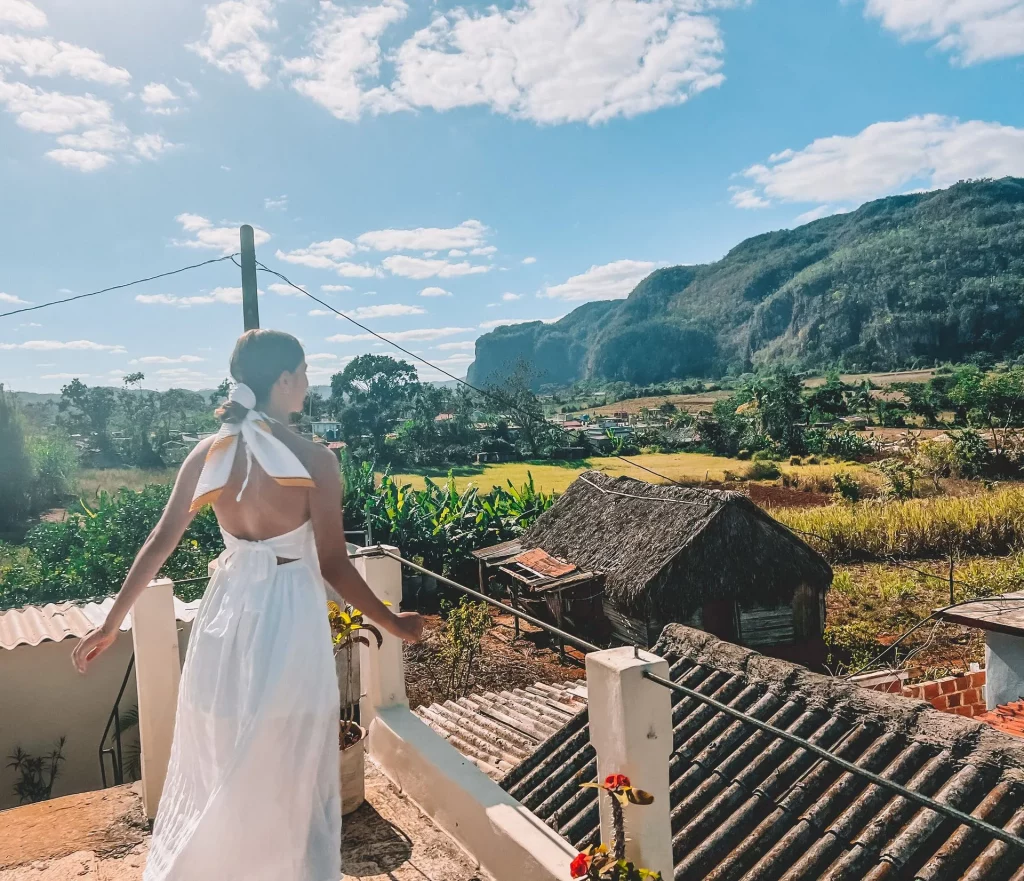
The Best Beaches around Viñales
During our stay in Viñales, we had the chance to discover some of the most beautiful beaches in the surrounding area. While Viñales itself isn’t directly by the sea, a short drive brings you to stunning coastal stretches with fine sand and crystal-clear waters.
In this section, we’ll introduce three beaches that impressed us with their natural beauty, relaxed atmosphere, and perfect conditions for swimming and relaxing.
Cayo Jutías
Location: Cayo Jutías is located on the north coast of Cuba and is about a 1.5-hour drive from Viñales. The beach boasts fine, white sand and crystal-clear water – a true Caribbean paradise.
Highlights: We arrived in a classic blue vintage car, which was an experience in itself. Our driver picked up three other travelers along the way, and together, we set off through the picturesque landscape. Once we reached the beach, we were immediately impressed by the idyllic atmosphere. Despite its beauty, Cayo Jutías wasn’t crowded, so we had plenty of space to relax.
We spent about five hours at the beach – swimming, sunbathing, and simply enjoying the tranquility. The driver waited nearby, so we could fully enjoy our time there without any worries.
Conclusion: Cayo Jutías was the most beautiful beach of our Cuba trip. The combination of untouched nature, a relaxed atmosphere, and turquoise water made this spot an unforgettable experience. If you’re in Viñales and want to take a day trip to the sea, this dream beach is a must-see.
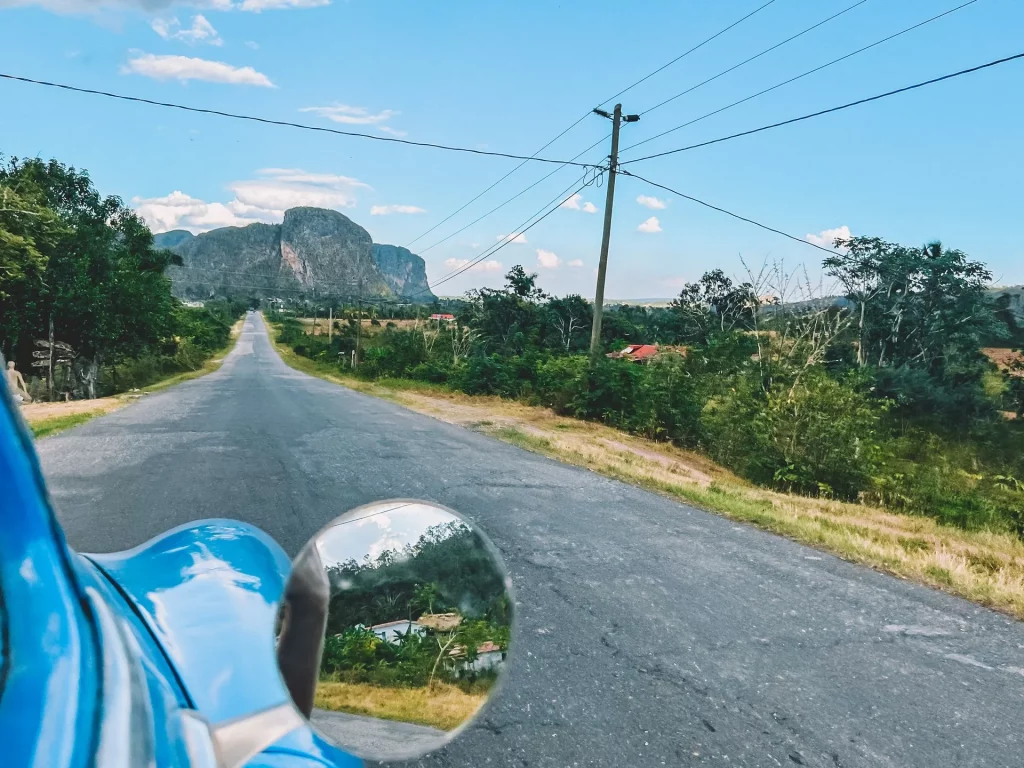
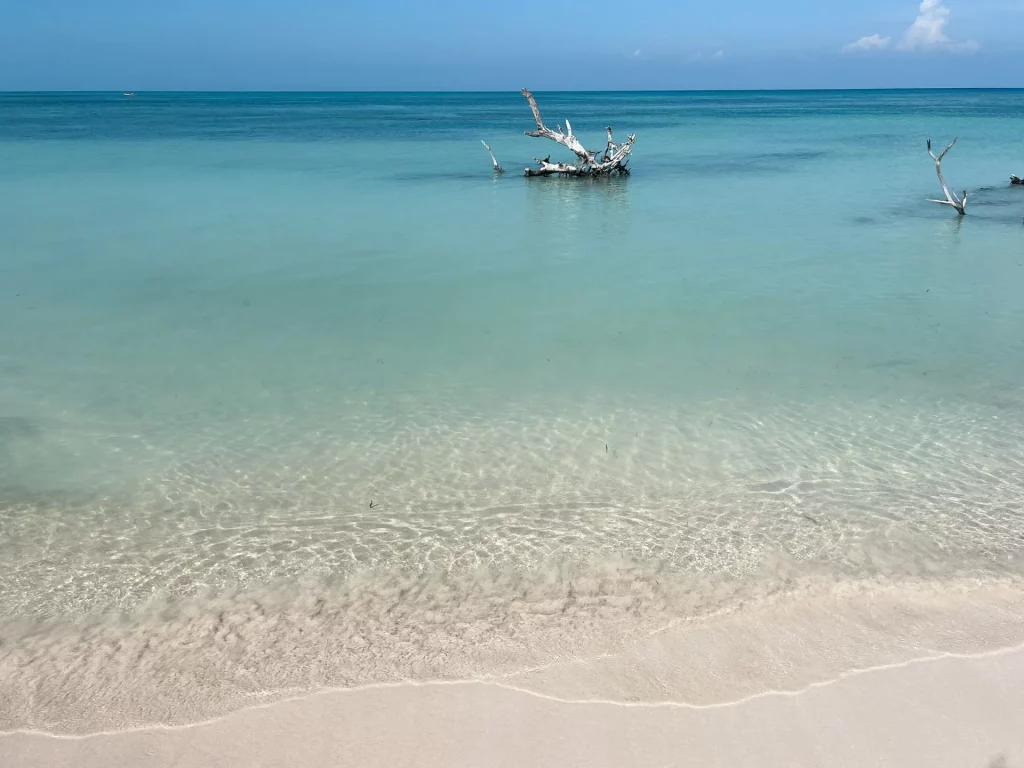
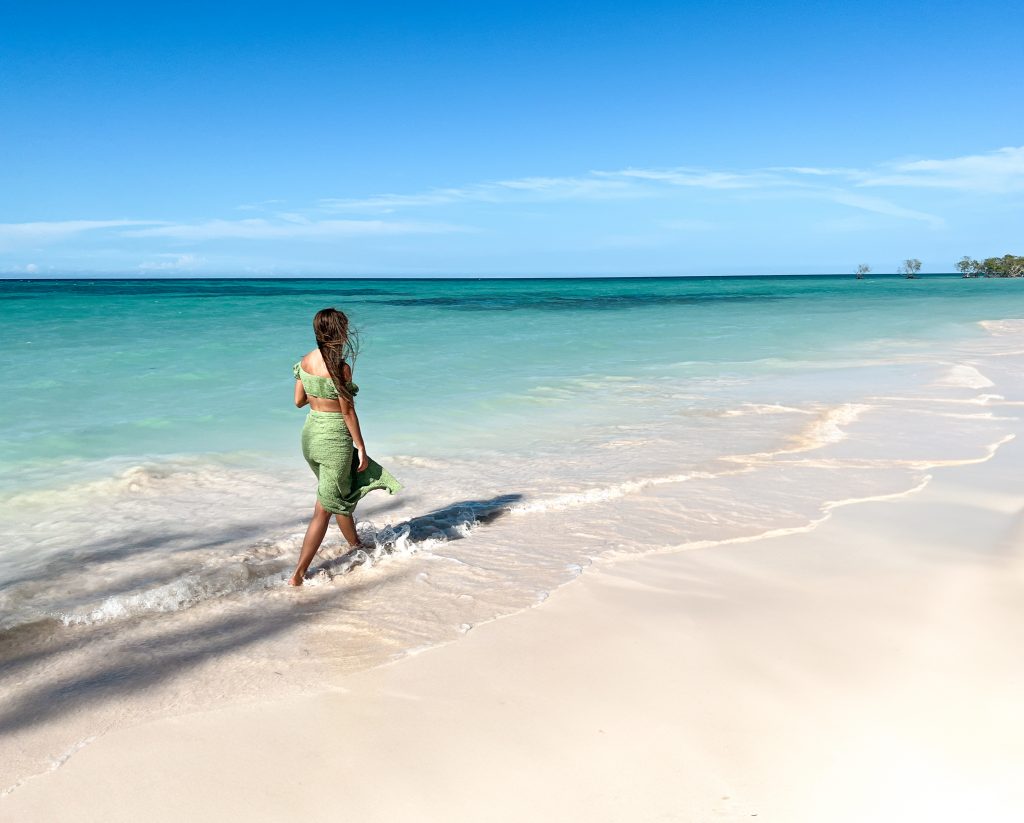
Cayo Levisa
Location: Cayo Levisa is a small island on the north coast of Cuba, about 2 hours away from Viñales. The journey involves driving to Palma Rubia, from where a ferry takes visitors to the island in about 30 minutes.
Highlights: Cayo Levisa is a true nature paradise with fine, white sandy beaches and turquoise waters. Unlike Cayo Jutías, the beach here is even quieter and less visited. There is a small hotel and a restaurant, but minimal tourist infrastructure. For those who enjoy snorkeling or diving, the island boasts some of the most beautiful coral reefs in Cuba.
Conclusion: Perfect for those looking to spend a peaceful, secluded day on the beach. The island offers a paradisiacal setting and invites visitors to relax and unwind.
Food and Going Out in Vinales
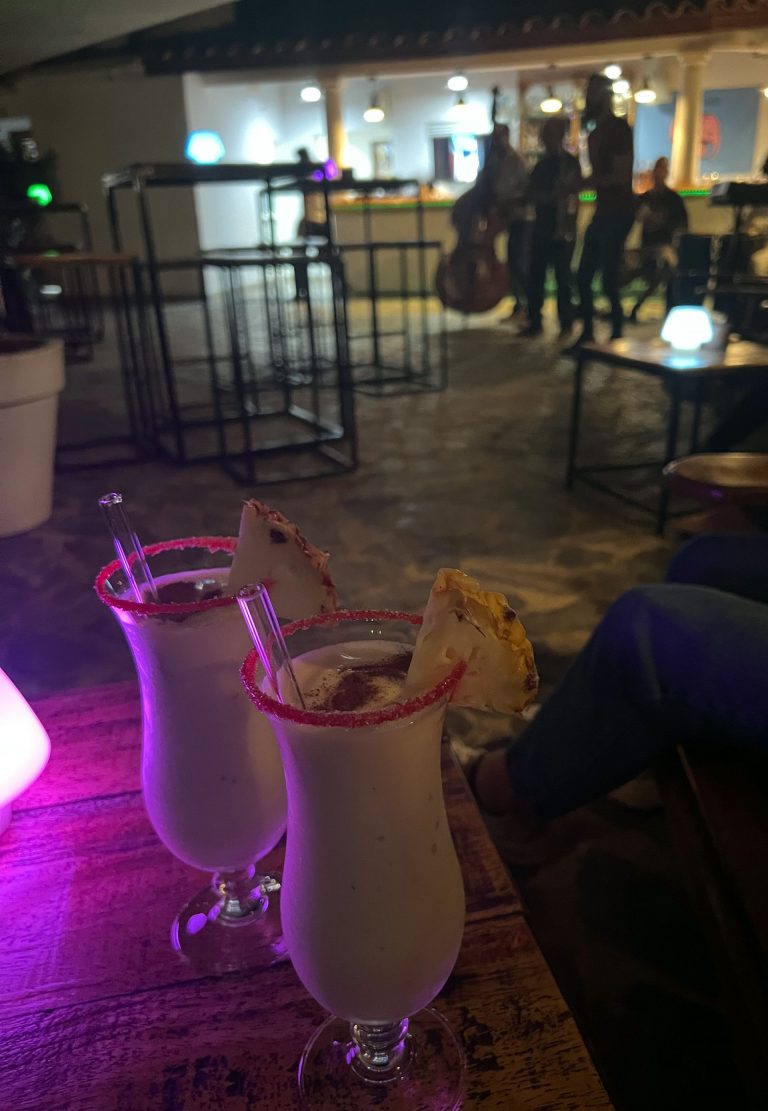
Jardín del Arte Sano
Location:
Jardín del Arte Sano is a charming restaurant in Viñales, known for its relaxed atmosphere and regular live music performances.
Our Impression:
The restaurant offers a diverse menu with both Cuban and international dishes. In the evenings, live music creates a unique ambiance that attracts both locals and travelers. The open, cozy design of the venue makes it a great place to enjoy a delicious meal and captivating music as the evening unfolds.
Conclusion:
A fantastic spot for those who want to enjoy great food in Viñales while experiencing live music in a laid-back atmosphere.
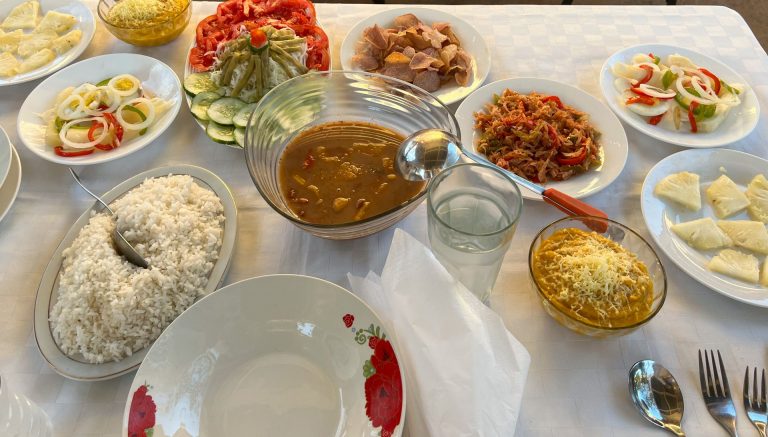
Casa Lucilo & Nirma (Airbnb)
Our Impression:
The Casa offers good value for money. The hosts are friendly, and the food is abundant and freshly prepared. The breakfast (€5) includes white bread, sandwiches, a type of pancake, fruit, vegetables, omelette, juice, and coffee. The dinner (€7) consists of vegetables, rice, soup, salad, and fruit – a great option for vegetarians.
Conclusion:
A solid accommodation with delicious food and a welcoming atmosphere. Ideal for travelers looking for an authentic Casa experience in Viñales.
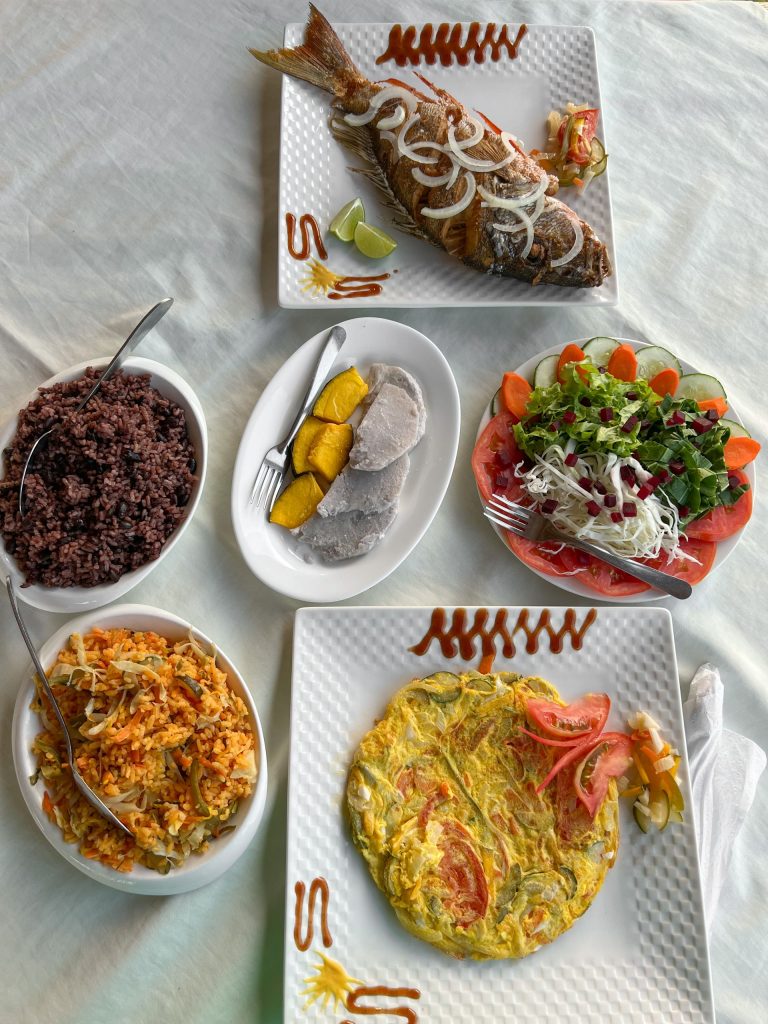
Agroecological Sunset Restaurant
Location:
The Agroecological Sunset Restaurant is located at the end of Calle Sergio Dopico in Viñales, offering a fantastic view of the surrounding landscape.
Our Impression:
The restaurant serves traditional Cuban dishes with fresh, local ingredients. The view is especially impressive, especially during sunset when it can be enjoyed from the terrace. The relaxed atmosphere and authentic food make the visit a special experience.
Conclusion:
A must-visit for anyone looking to combine great food with a breathtaking view in Viñales. Perfect for a relaxing lunch or dinner amidst nature.
Activities in Viñales
Viñales is not only known for its impressive landscape with the distinctive Mogotes but also as a perfect destination for nature lovers and adventurers. Whether it’s relaxed exploration of the green valley, exciting cave tours, or trips to stunning beaches – Viñales has something for everyone.
In this section, we present the best activities that will make your stay in Viñales unforgettable – whether you want to explore the breathtaking nature on foot or horseback, visit tobacco farms, or simply enjoy the unique atmosphere of this special region.
Tobacco Plantation Tour in Viñales
Location:
The tobacco plantations around Viñales are world-famous for their high-quality tobacco leaves and offer fascinating insights into the traditional cigar production.
Experience & Offering:
Various providers including Casas Particulares and hotels, organize guided tours to the plantations. The tour starts at 8 a.m. and lasts about six hours. In addition to visiting a plantation that produces tobacco, honey, and coffee, the tour includes a hike through the picturesque fields and visits to two caves.
During the tour, you will learn all about the cultivation and processing of tobacco, honey, and coffee. A highlight is the cigar-rolling demonstration, where you can try a freshly rolled cigar yourself, traditionally with honey at the mouthpiece, as is customary in Cuba.
Our Impression:
A fascinating insight into Cuba’s agriculture and culture. The combination of nature, tradition, and the opportunity to taste products directly on-site makes this trip particularly authentic.
Conclusion:
Perfect for anyone who wants to experience the real Viñales. The combination of plantation visits, hiking, and cave exploration offers a diverse and unforgettable experience.
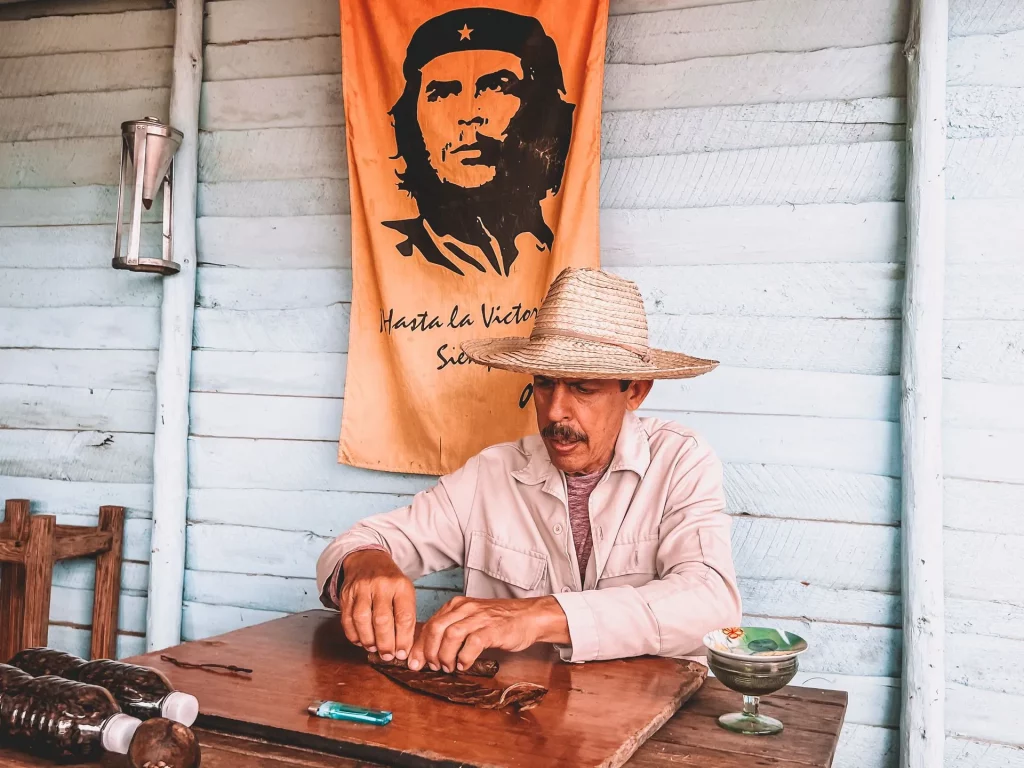
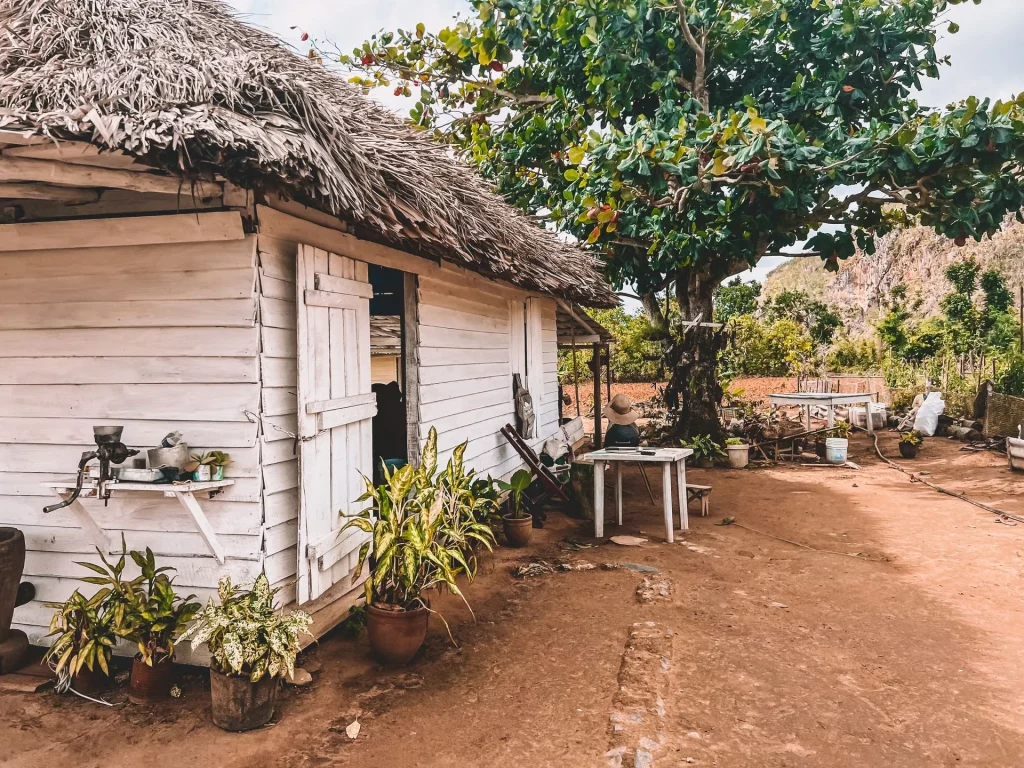
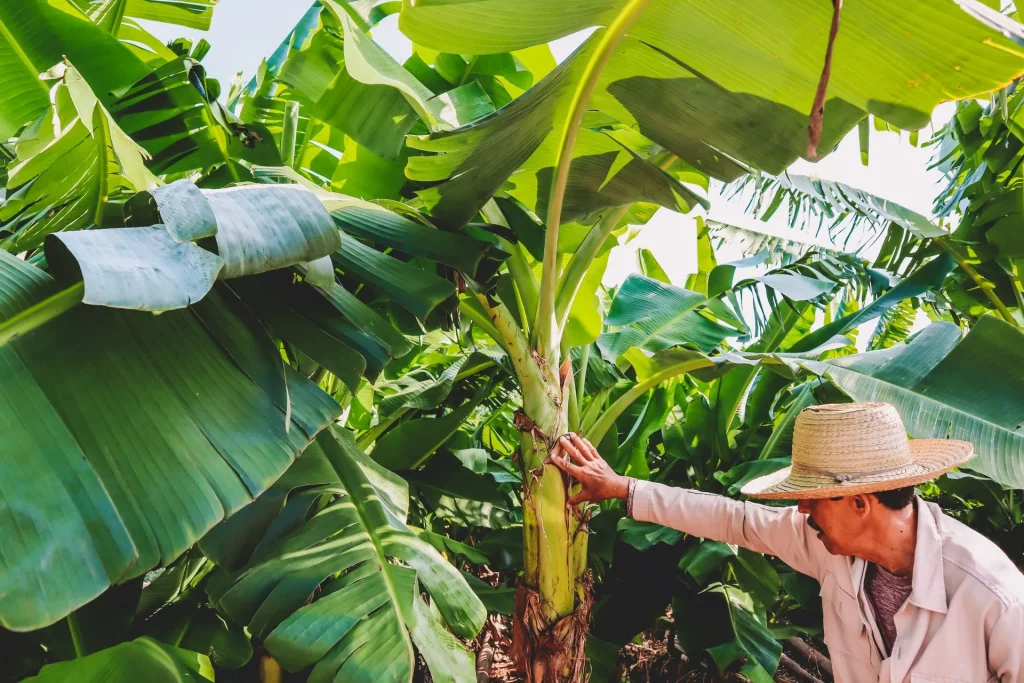
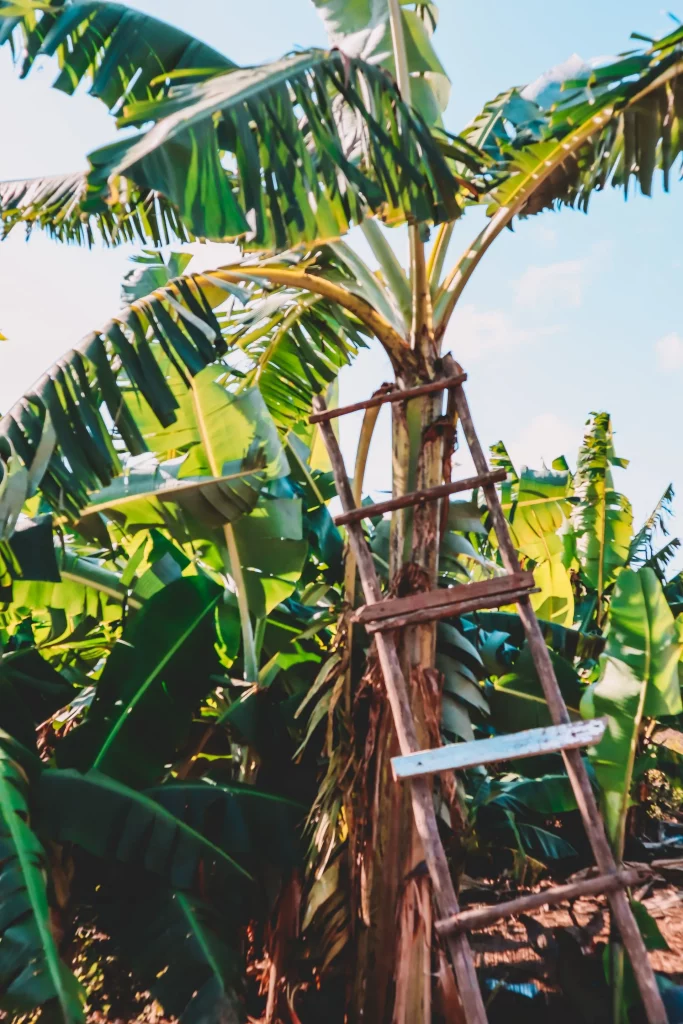
We were given a tour of the coffee bean production process and had the opportunity to purchase the beans at the end of the tour. The sale included both the coffee beans and the coffee flower honey, which was available in 0.5-liter plastic bottles.
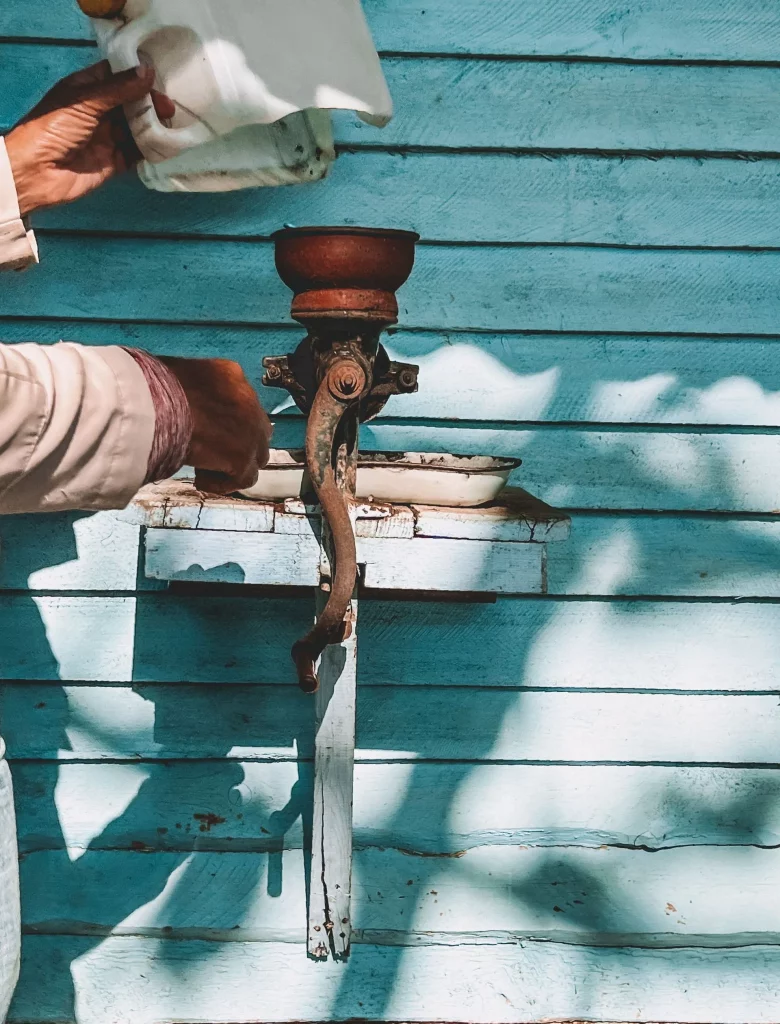
Hike
After visiting the impressive tobacco plantation, our attentive guide led us along a scenic path through fields and the breathtaking Cuban nature.
Our guide provided detailed explanations about the local flora and fauna along the way and shared his knowledge about Cuban culture and history with us.
During our hike, the path led us up the mountain until we finally reached the cave. This cave serves as a shelter during disasters and features seating on both sides, as seen in the picture. Additionally, the cave is home to a population of bats.
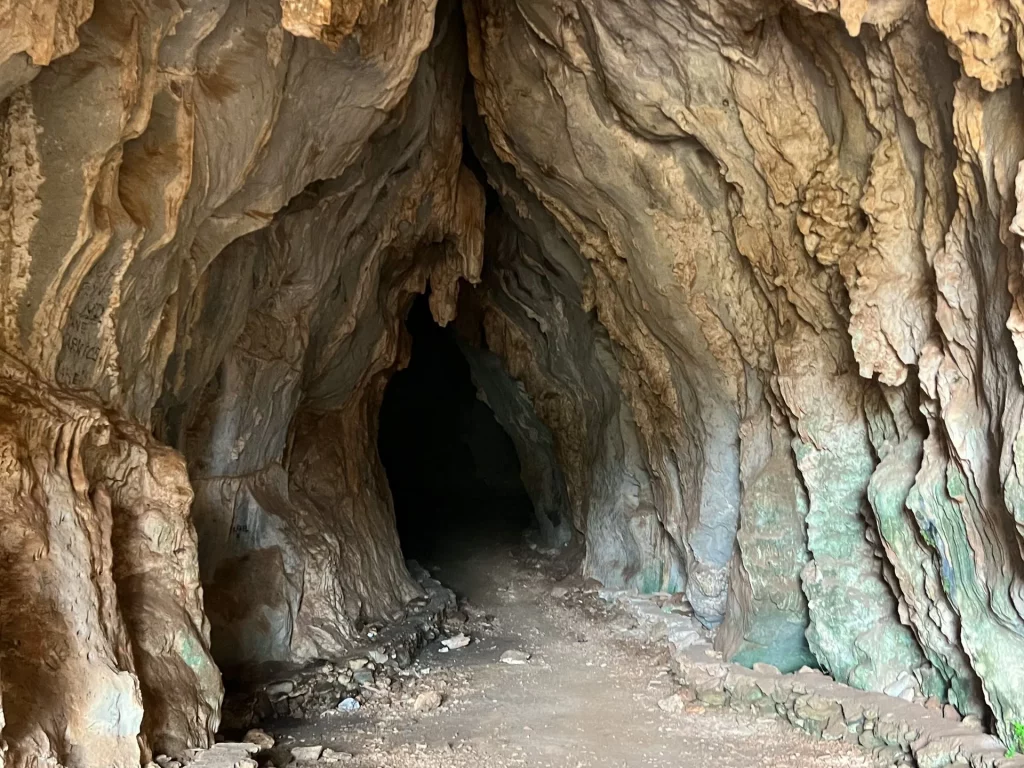
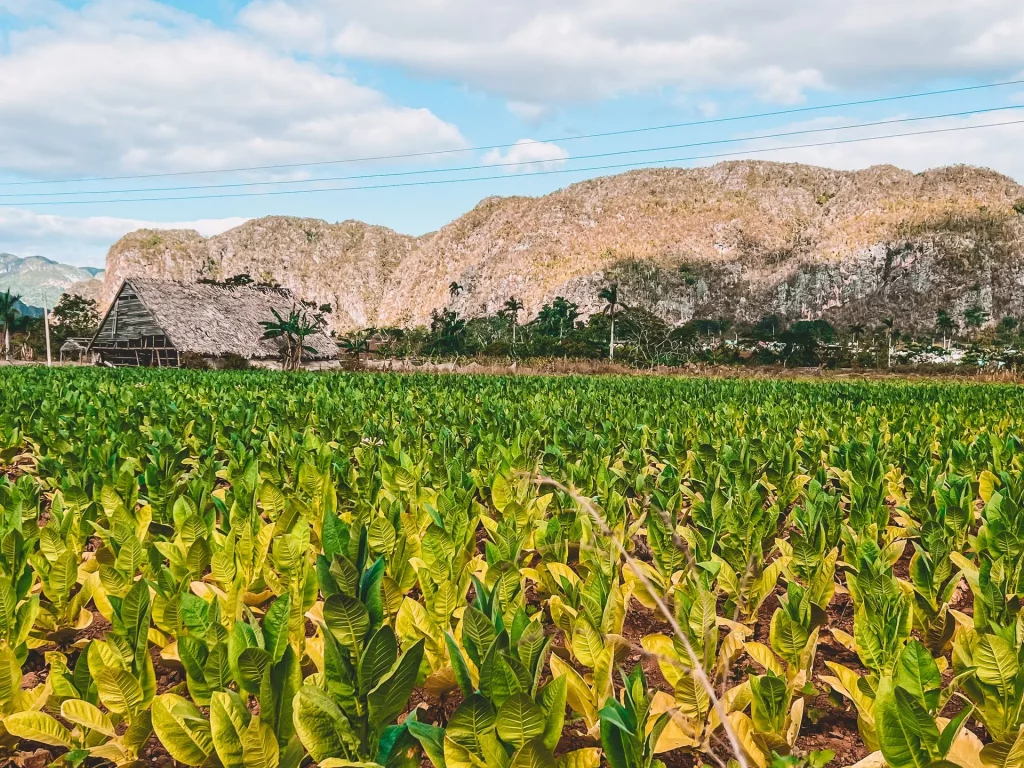
During our journey, the path took us past picturesque fields and small farms, where we encountered some unfortunate animals like emaciated dogs, cats, horses, and cows.
At the end of our adventure, we reached a small house (shown in the lower picture) before heading toward the cave, which invited us for a swim. However, we soon discovered that entry to the cave was an additional cost, not included in our tour package. Since we assumed everything was covered, we didn’t have enough money with us, having already paid for honey and cigars at the tobacco plantation.
Mural de la Prehistoria
The Mural de la Prehistoria is a massive mural created between 1959 and 1962 on a limestone wall about 120 meters high and 160 meters wide in Viñales. It depicts the evolution of life in the region and is one of the area’s most well-known landmarks.
Our impression: Although the artwork is impressive due to its size and history, we found it to be overrated. The entrance fee, in our opinion, does not justify the experience, as there is little else to explore beyond the mural itself.
Conclusion: If you’re in the area, it’s worth a quick stop, but there are definitely more remarkable natural and cultural treasures to discover in Viñales.
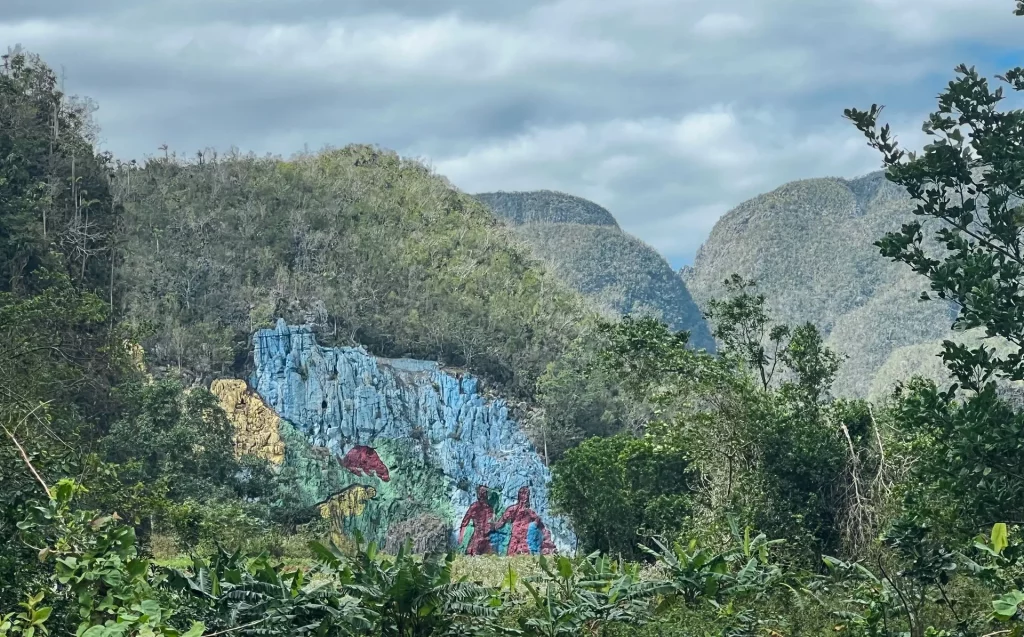
Viñales Viewpoint
Address: H7WG+GFV, Viñales, Cuba
Experience & Arrival:
There are several ways to reach the viewpoint, whether walking through the picturesque fields, along the road, or by taxi. We chose to hike and used the Komoot app for navigation, although we unfortunately can’t share our exact route.
Our Impression:
The effort of the hike is well worth it! From the top, you are rewarded with a breathtaking view of the unique landscape of the Viñales Valley, with its impressive Mogotes and lush green fields.
Conclusion:
A must-see for anyone who loves nature and spectacular views. Whether on foot or by taxi, this viewpoint should not be missed on any trip to Viñales!
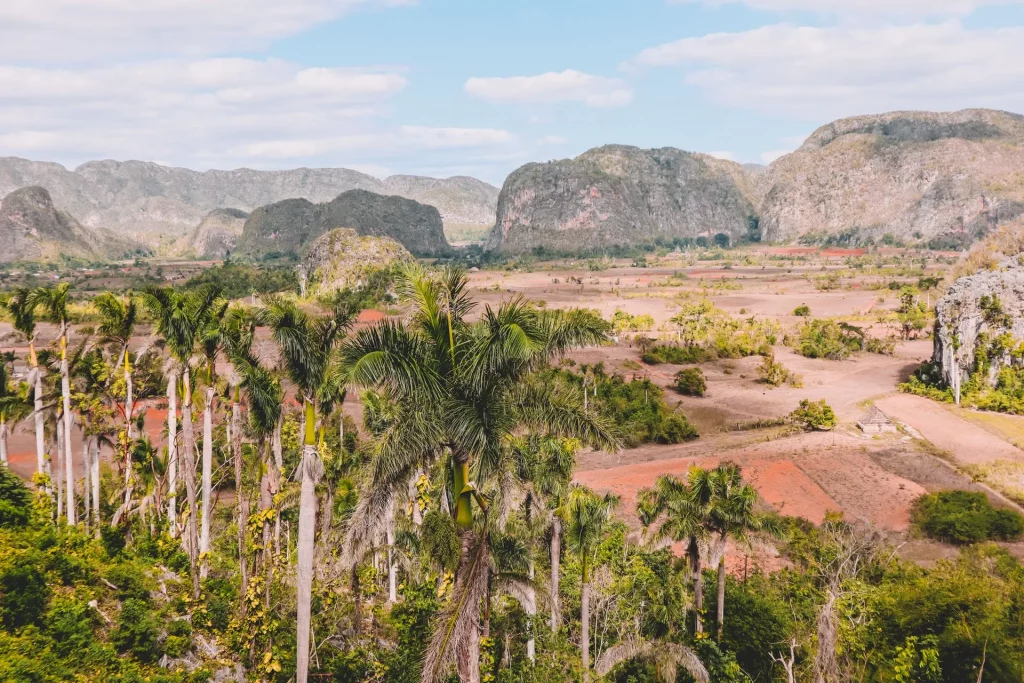
City Church
Viñales has a charming little town church that serves as an important meeting point for locals and tourists. The church is located in an idyllic square, surrounded by beautiful houses and trees, creating a peaceful and tranquil atmosphere. Next to the church is a building from which lively salsa music is often heard. In front of the building, some people were standing, inviting us to come closer and join in the dance.
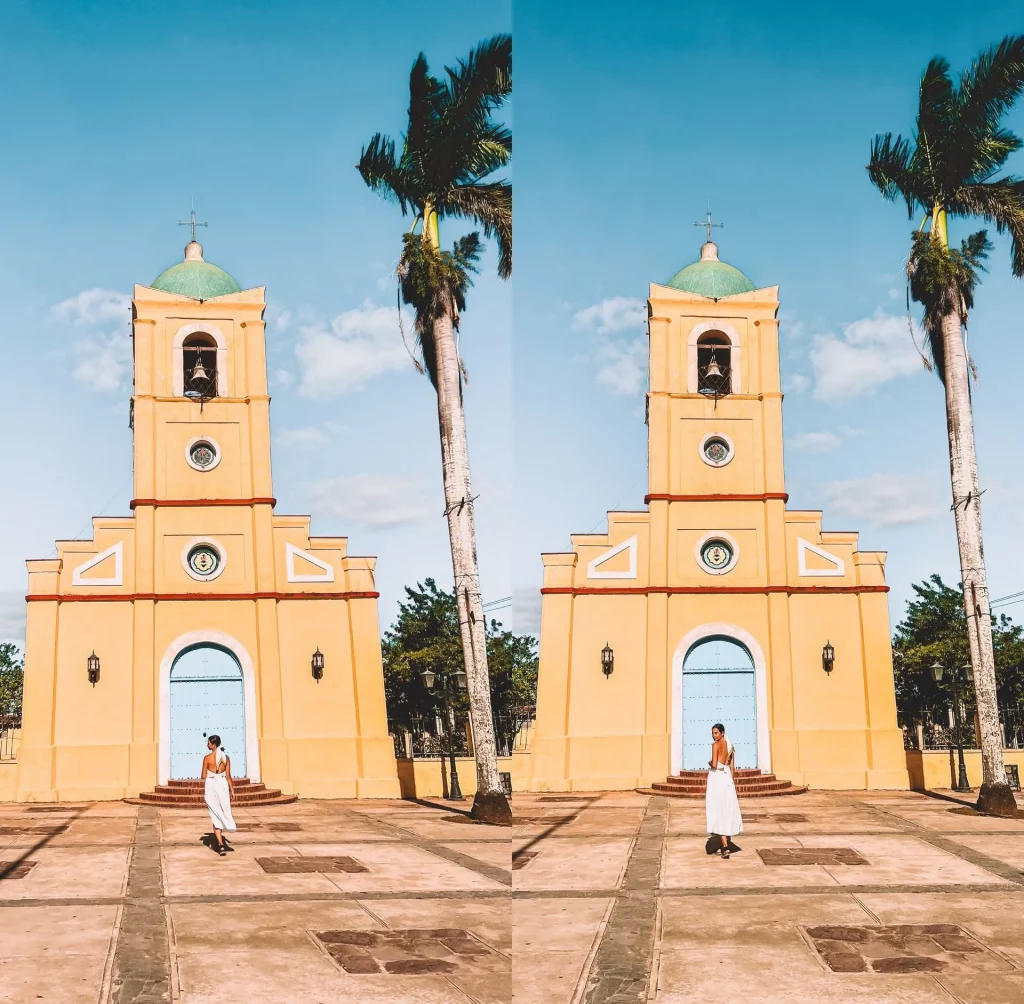
Cigars and Rum in Cuba
The most famous cigar brands in Cuba are:
- Partagas
- Romeo y Julieta
- Montecristo
- Cohiba
- Bolivar
Cigars can be purchased in hotels and cigar shops, for example. Prices vary, with a cigar starting at around $8 in hotels, while they can be sold for $1 at street vendors. However, it is advised not to buy cigars from street vendors, as the quality is often poor. We bought cigars for $4 each at a tobacco farm in Viñales.
Which Rum and Where to Buy?
We chose the very popular “Santiago de Cuba” rum and purchased it. This rum, as well as “Havana Club,” is commonly used in bars to make cocktails.
It is recommended to buy rum in a supermarket, where it is priced at $21, while in most tourist areas and shops, it tends to be more expensive.
Conclusion to Our Cuba Trip
Unfortunately, we did not receive enough information before our trip to Cuba, neither from the Foreign Office website, the language school, nor from other travel blogs. Had we known more in advance, we would have been better prepared and started the trip with different expectations.
We came to the conclusion that traveling to Cuba during the current economic crisis might not be the best idea, as there is more scarcity of food and drinking water than before. Since the currency reform on January 1, 2021, and the abolition of the CUC, many things have become more expensive for the locals in Cuba. Previously, locals paid with the CUP, and tourists paid with the CUC.
Many children and parents beg on the streets, and there are people who touch and harass you.
Taxi drivers need special permits to transport tourists, and the government tries to keep locals away from tourists. Many beautiful places are not accessible to non-locals, and there are passport checks on the streets.
Basic foodstuffs are rationed, and households are given a booklet detailing how much of each food they are entitled to.
During our trip in Cuba, we only stayed in Airbnbs, so we had no access to basic food items like flour, eggs, and more. We noticed that the milk looked and tasted different, and our host told us that milk is rare in Cuba. Powdered milk is mixed with water and used instead. We often waited outside supermarkets and candy stores, averaging about 30-45 minutes. Bottled drinking water is also rare in supermarkets, and locals boil tap water. However, it smelled so unpleasant that we decided against it and only drank it in emergencies.
We wanted to learn more about Cuba’s history in museums, but we didn’t gain any more insight than before. We had previously gathered more information from documentaries we watched in Germany before our trip. After visiting the “Museum and Monument, Memorial Comandante Ernesto Che Guevara,” some of our fellow travelers asked questions to our guide. She replied, “My mouth is prohibited from talking about politics. In Cuba, we don’t talk about politics.” We already knew that many political topics are not discussed in Cuba, but it was different to experience it firsthand.
If the economic situation and the lives of the locals were to improve, Cuba would have great potential as a holiday destination. However, if you’re looking for adventure and can handle the fact that not everything will go as planned or be possible on your trip, Cuba is the place for you. After reading my detailed blog, you’ll be perfectly prepared! Be sure to check out my checklist.
Checklist for Your Trip to Cuba:
- Download a VPN
- Bring plenty of cash (preferably $ or €), as much as you’ll need for your trip so you don’t have to withdraw money
- Travel pharmacy (mosquito and tick spray, medications for stomach and digestive issues, colds, etc.)
- Sunscreen
- Power plug adapter
- If you’re staying in an Airbnb: powdered milk/oat drink, snacks if you’re vegan/vegetarian, soy granules, etc.
- Possible souvenirs like gummy bears, chocolate for hosts, as these are rare and expensive in Cuba. (We brought our hosts Haribo gummy bears, Milka, and Ritter Sport chocolate. They were very happy and very grateful.)
- Power bank
- Possibly water shoes
- …
SIM Card in Cuba
SIM cards are advertised at Havana airport, but they cannot be purchased there. We bought our card at an ETECSA shop in the city. A valid passport is required for the purchase.
Tourist SIM Cards (as of 2025)
Cubacel Tur Plus: 10 GB, 100 minutes, 100 SMS, unlimited WhatsApp & Facebook, 30 days, approx. 35 USD
Cubacel Tur Básico: 4 GB, 20 minutes, 20 SMS, 7 days, approx. 14 USD
Tip
For longer stays or higher data usage, Tur Plus is recommended. For shorter visits, Tur Básico is sufficient.
